Is Baja safe? Should you drive? Things to know before you go
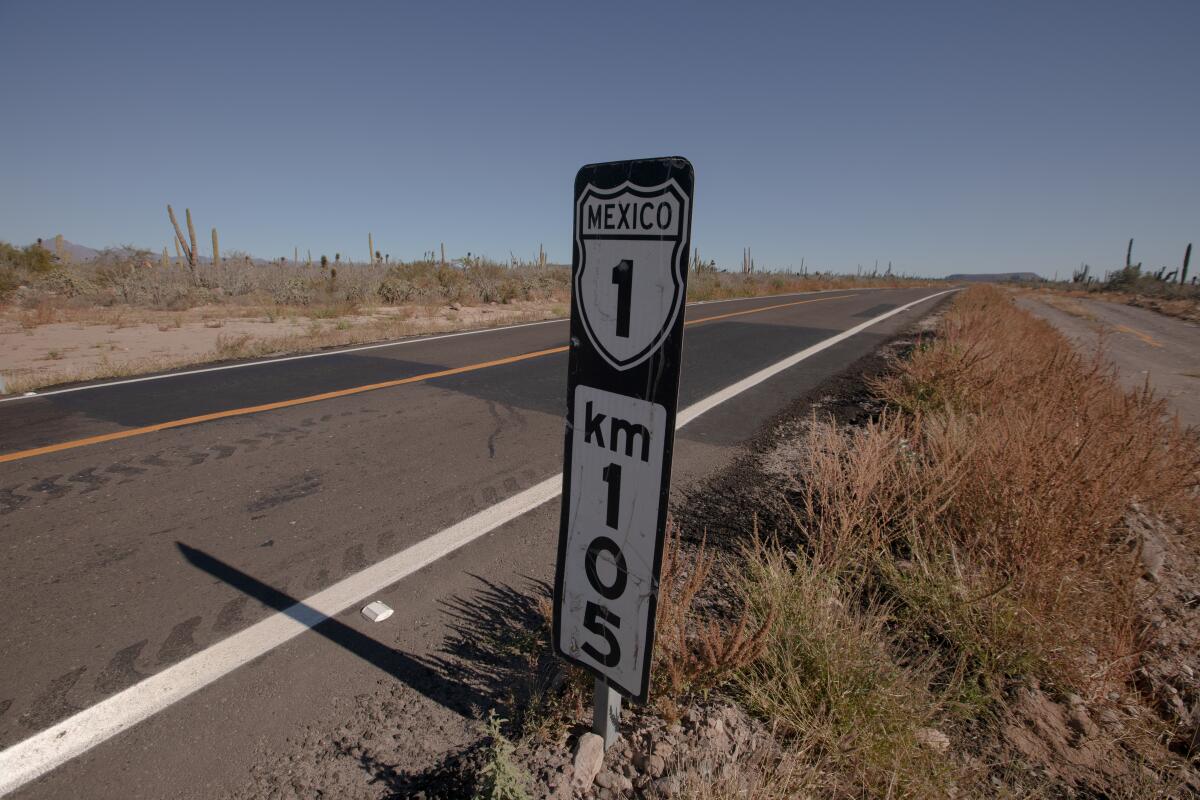
- Show more sharing options
- Copy Link URL Copied!
Homework is vital before travel in Baja California, especially if you’re considering a road trip.
Questions over Americans’ safety in Mexico have been underlined by the mid-January death of Orange County public defender Elliot Blair, who suffered unexplained head injuries at a Rosarito Beach resort; and by the early March shooting deaths of two Americans and one Mexican in an apparently botched kidnapping in Matamoros, 1,570 miles east of Tijuana.
Here’s a rundown of sources I consulted and factors I weighed before my eight-day drive to Cabo San Lucas in early January.
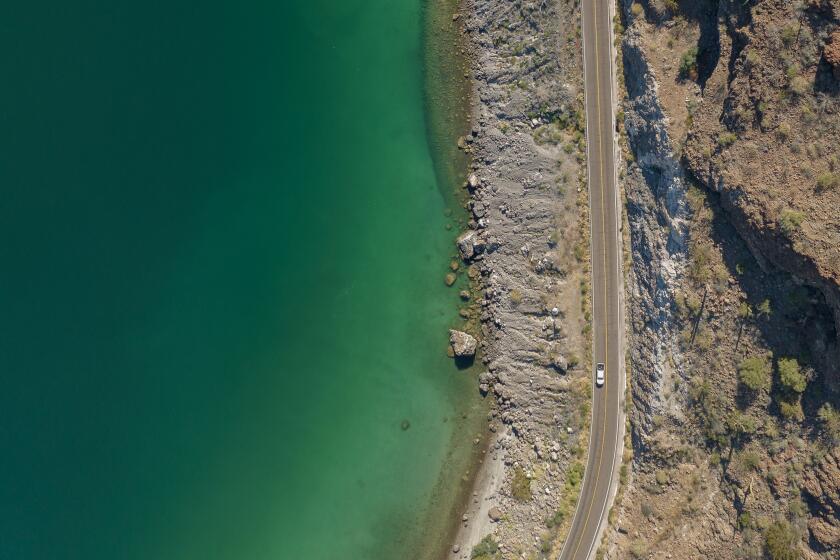
Travel & Experiences

Joshua Tree with beaches and taquerias? No, just an epic Baja road trip
On a drive down the Baja peninsula’s Highway 1, travel writer Christopher Reynolds finds baby whales, a pond to float in and a new generation of adventurers.
March 15, 2023
Overall safety
The U.S. State Department classifies Mexico’s states in four ways for would-be travelers. The most severe advice is “do not travel,” which currently covers the states of Colima, Guerrero, Michoacán, Sinaloa, Zacatecas and Tamaulipas (which includes Matamoros) on Mexico’s east coast.
The state of Baja California is in the second most severe category — “reconsider travel” — because of crime and kidnapping, especially homicides in the non-tourist areas of Tijuana. The State Department urges those who do travel to remain on main highways. The State Department also puts the states of Chihuahua, Durango, Jalisco, Morelos, Sonora and Guanajuato (the latter includes San Miguel de Allende) in that category.
The state of Baja California Sur, which begins about 450 miles south of the U.S. border, is in the State Department’s less extreme “exercise increased caution” category.
Canada’s government urges Canadians to “exercise a high degree of caution” in Mexico.
The website elcri.men , which summarizes and analyzes Mexican crime statistics, said Baja California had the third-highest homicide rate among Mexican states in 2022, in large part because of Tijuana. By the same measure, Baja California Sur had the fourth-lowest rate among Mexican states.
If studying up on conditions in the Baja peninsula makes you or your companions uncomfortable, stay away. Even if nothing goes wrong, feeling unsafe can ruin a trip. (I didn’t drive the peninsula with my family; I drove it with two people who felt comfortable with it.)
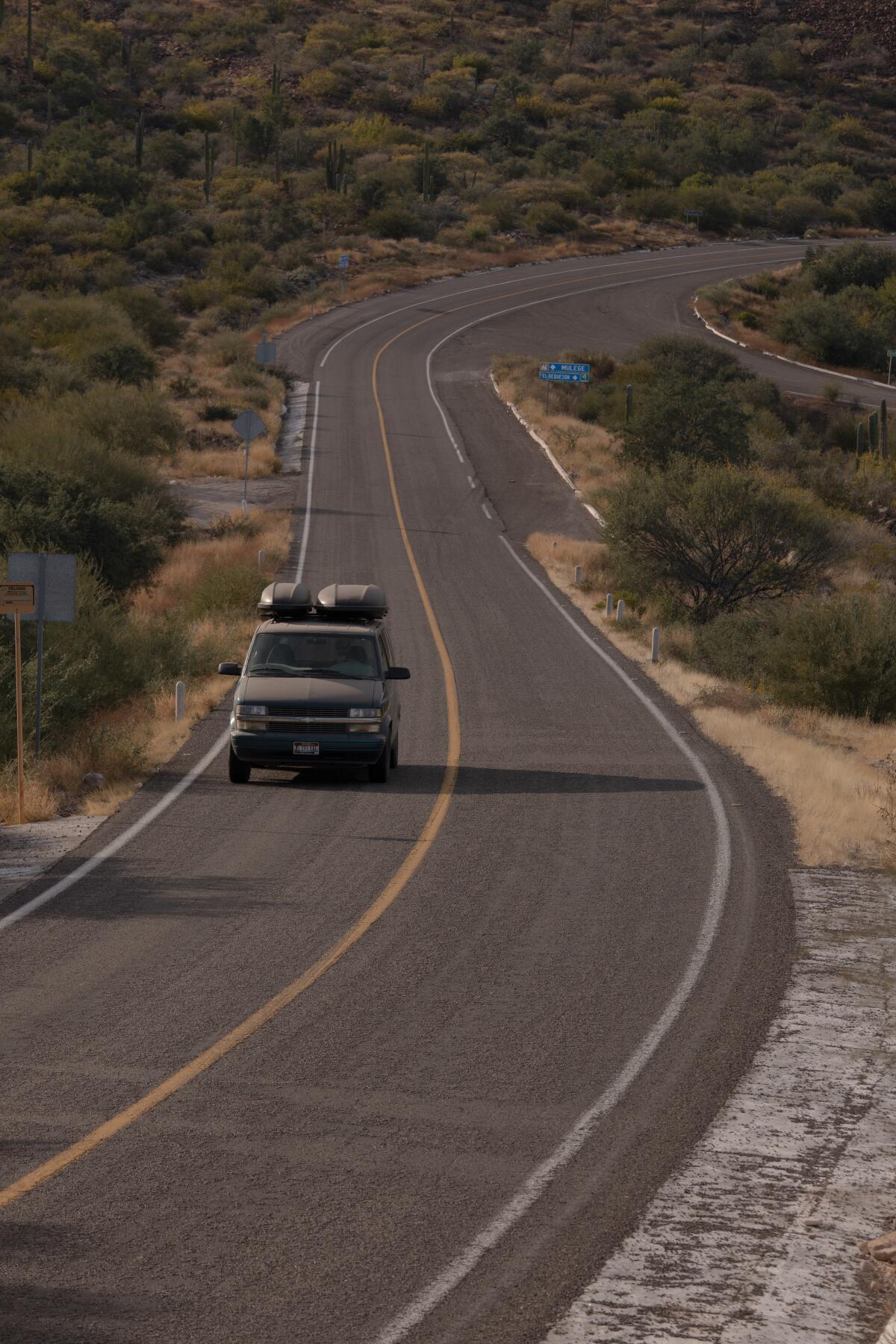
Driving in Baja
In addition to a valid driver’s license, Mexican law requires anyone driving into the country to have Mexico-specific liability insurance.
Many companies specialize in insurance for Americans driving south, offering liability policies that often cost from $10 to $40 per day. More extensive policies can double the cost but may give you more peace of mind. Vendors include AAA , Allstate , Bajabound.com , Baja-mex.com , Discoverbaja.com, Geico and Mexpro.com .
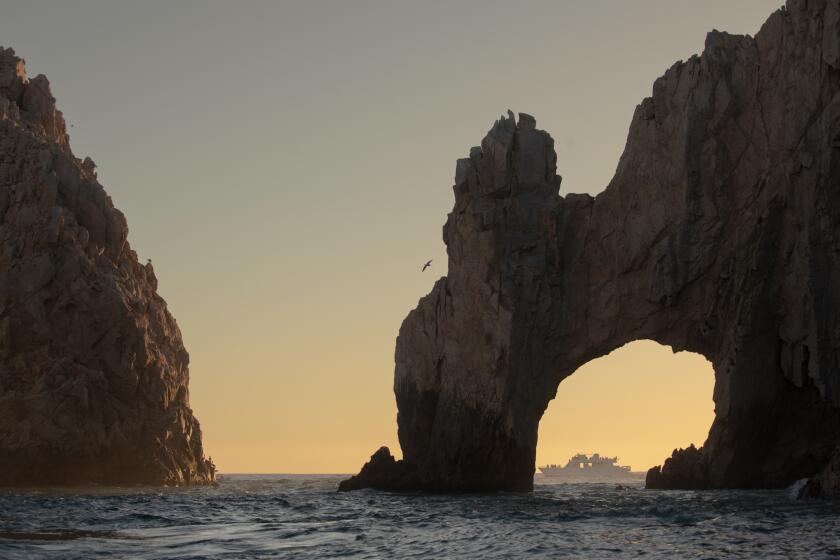
25 restaurants, hotels and hidden wonders along the Baja Highway
Cave paintings. Missions. A lagoon where gray whales gather. Whether you’re taking on the whole highway or targeting one stretch, the landscape is full of revelations.
All authorities agree that driving at night in rural Baja is dangerous because of the many roaming livestock. In addition, drivers should be ready for long, narrow stretches of two-lane blacktop without shoulders or turnouts.
Two other things: Drunk driving is just as illegal in Baja California and Baja California Sur as it is in California. Also, it’s illegal to enter Mexico with a gun without written authorization in advance from Mexican authorities.
More driving tips:
- Occasionally drivers in Tijuana, Rosarito Beach and Ensenada are pulled over after an alleged infraction and offered a chance to pay a fine at the police station or on the spot. Don’t argue or pay on the spot, many Baja veterans say. Instead, they say, the best response is to ask for a written citation and agree to pay the citation at the police station or by mail (or challenge it) . An additional option: calling Baja California’s bilingual Tourist Assistance Hotline (078, around the clock) from any cellphone with roaming privileges in Baja.
- Police checkpoints are placed every few hundred miles along the peninsula. Officers typically ask drivers where they have come from and where they’re going. We went through about six checkpoints, the conversation never lasting more than one or two minutes.
- Many roads to scenic spots are dirt, not blacktop, and best handled by vehicles with four-wheel drive and high clearance.
- The peninsula is so big that most travelers choose to explore selected portions. Many travelers fly to Los Cabos, La Paz or Loreto, rent a car at the airport, drive a loop and return the car where they began. Picking up and dropping off a rental car in different locations is possible in Baja but can double the cost. Topoterra is the only company I could find that would rent me a vehicle in San Diego and let me drop it off (for a fee) in Los Cabos.
- In Baja (and all of Mexico) distances are measured in kilometers, gas is sold by the liter (and usually pumped by an attendant) and speed bumps ( topes ) pop up in some urban areas. Gas prices in Baja have lately fluctuated around 22 pesos per liter (about $4.50 per gallon) and are often cheaper than in California.
- Beyond the Pemex station in El Rosario there isn’t another gas station until Villa Jesús María (just north of Guerrero Negro), 200 miles south.
- More detailed advice is offered by the Automobile Club of Southern California , Bajabound, AllAboutBaja.com and other sources.
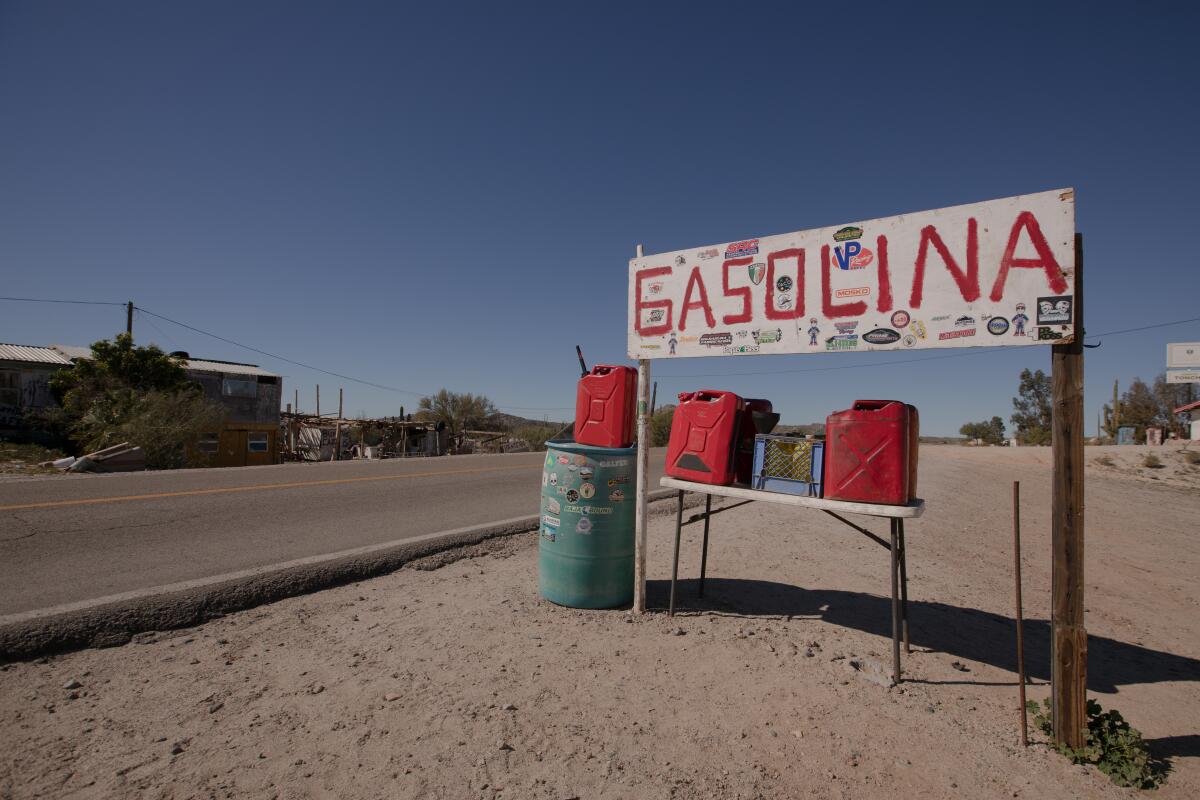
Communication and laws
Southbound travelers must show a passport or passport card and are required to get an FMM tourist permit online or in person from Mexican immigration officials at the border. For trips of more than seven days, the cost is about $36 (687 pesos).
The more Spanish you speak, the better. If you’re hoping to camp on ranch land, the best preparation may be hiring a local guide who can help get you permission.
To ease web access and communication with the U.S., many regular winter visitors to Baja use Starlink , which for $599 up front and $135 monthly allows a road-tripper or RV driver to access the internet from just about anywhere in Baja.
More to Read
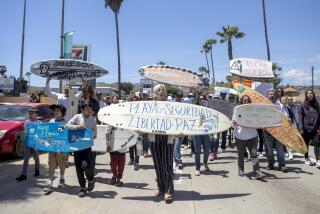
3 bodies in Mexican well identified as Australian and American surfers killed for tires
May 5, 2024

Bodies found in Baja California during search for missing tourists, Mexican officials say
May 4, 2024
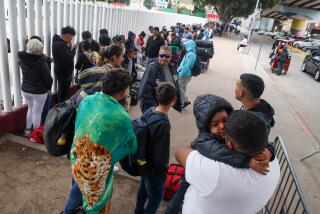
San Diego is now the top border region for migrant arrivals
April 25, 2024
Sign up for The Wild
We’ll help you find the best places to hike, bike and run, as well as the perfect silent spots for meditation and yoga.
You may occasionally receive promotional content from the Los Angeles Times.

Born and raised in California, Christopher Reynolds has written about travel, the outdoors, arts and culture for the Los Angeles Times since 1990.
More From the Los Angeles Times
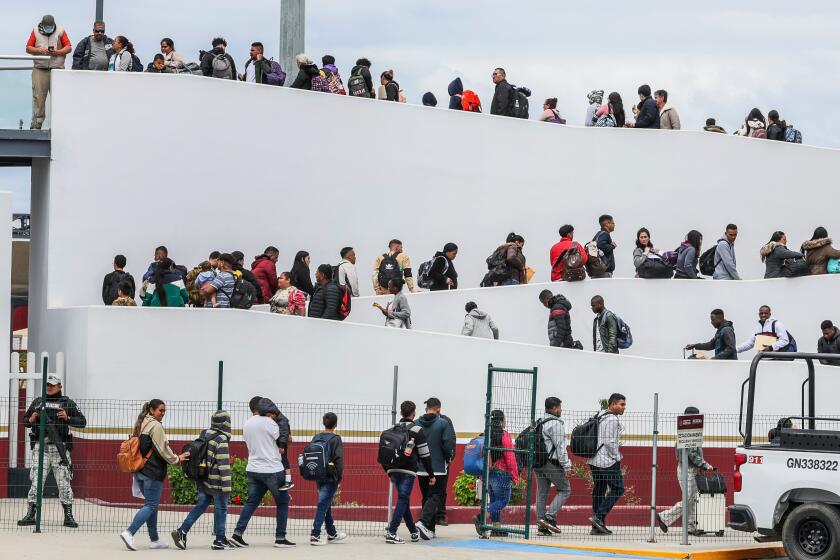
World & Nation
Migrants play ‘the asylum lottery’ on controversial U.S. government app
May 9, 2024
Man indicted in Georgia murder case at center of national immigration debate
May 8, 2024
Nicaragua cancels a controversial Chinese interoceanic canal concession after nearly a decade

Flooding in Americas, brutal heat in Asia and Africa: Extreme weather across the globe
May 7, 2024
Update April 12, 2024
Information for u.s. citizens in the middle east.
- Travel Advisories |
- Contact Us |
- MyTravelGov |
Find U.S. Embassies & Consulates
Travel.state.gov, congressional liaison, special issuance agency, u.s. passports, international travel, intercountry adoption, international parental child abduction, records and authentications, popular links, travel advisories, mytravelgov, stay connected, legal resources, legal information, info for u.s. law enforcement, replace or certify documents.
Share this page:
Mexico Travel Advisory
Travel advisory august 22, 2023, mexico - see state summaries.
Reissued after periodic review with general security updates, and the removal of obsolete COVID-19 page links.
Country Summary: Violent crime – such as homicide, kidnapping, carjacking, and robbery – is widespread and common in Mexico. The U.S. government has limited ability to provide emergency services to U.S. citizens in many areas of Mexico, as travel by U.S. government employees to certain areas is prohibited or restricted. In many states, local emergency services are limited outside the state capital or major cities.
U.S. citizens are advised to adhere to restrictions on U.S. government employee travel. State-specific restrictions are included in the individual state advisories below. U.S. government employees may not travel between cities after dark, may not hail taxis on the street, and must rely on dispatched vehicles, including app-based services like Uber, and regulated taxi stands. U.S. government employees should avoid traveling alone, especially in remote areas. U.S. government employees may not drive from the U.S.-Mexico border to or from the interior parts of Mexico, except daytime travel within Baja California and between Nogales and Hermosillo on Mexican Federal Highway 15D, and between Nuevo Laredo and Monterrey on Highway 85D.
Read the country information page for additional information on travel to Mexico.
Do Not Travel To:
- Colima state due to crime and kidnapping .
- Guerrero state due to crime .
- Michoacan state due to crime and kidnapping .
- Sinaloa state due to crime and kidnapping
- Tamaulipas state due to crime and kidnapping.
- Zacatecas state due to crime and kidnapping .
Reconsider Travel To:
- Baja California state due to crime and kidnapping .
- Chihuahua state due to crime and kidnapping .
- Durango state due to crime .
- Guanajuato state due to crime and kidnapping .
- Jalisco state due to crime and kidnapping .
- Morelos state due to crime .
- Sonora state due to crime and kidnapping .
Exercise Increased Caution When Traveling To:
- Aguascalientes state due to crime .
- Baja California Sur state due to crime .
- Chiapas state due to crime .
- Coahuila state due to crime .
- Hidalgo state due to crime .
- Mexico City due to crime .
- Mexico State due to crime .
- Nayarit state due to crime.
- Nuevo Leon state due to crime and kidnapping .
- Oaxaca state due to crime .
- Puebla state due to crime and kidnapping .
- Queretaro state due to crime .
- Quintana Roo state due to crime .
- San Luis Potosi state due to crime and kidnapping .
- Tabasco state due to crime .
- Tlaxcala state due to crime .
- Veracruz state due to crime .
Exercise Normal Precautions When Traveling To:
- Campeche state
- Yucatan state
Visit our website for Travel to High-Risk Areas .
If you decide to travel to Mexico:
- Keep traveling companions and family back home informed of your travel plans. If separating from your travel group, send a friend your GPS location. If taking a taxi alone, take a photo of the taxi number and/or license plate and text it to a friend.
- Use toll roads when possible and avoid driving alone or at night. In many states, police presence and emergency services are extremely limited outside the state capital or major cities.
- Exercise increased caution when visiting local bars, nightclubs, and casinos.
- Do not display signs of wealth, such as wearing expensive watches or jewelry.
- Be extra vigilant when visiting banks or ATMs.
- Enroll in the Smart Traveler Enrollment Program (STEP) to receive Alerts and make it easier to locate you in an emergency.
- Follow the Department of State on Facebook and Twitter .
- Follow the U.S. Embassy on Facebook and Twitter .
- Review the Country Security Report for Mexico.
- Mariners planning travel to Mexico should check for U.S. maritime advisories and alerts , which include instructions on reporting suspicious activities and attacks to Mexican naval authorities.
- Prepare a contingency plan for emergency situations. Review the Traveler’s Checklist .
- Visit the CDC page for the latest travel health information related to your travel.
Aguascalientes state – Exercise Increased Caution
Exercise increased caution due to crime.
Criminal activity and violence may occur throughout the state.
There are no restrictions on travel for U.S. government employees in Aguascalientes state.
Baja California state – Reconsider Travel
Reconsider travel due to crime and kidnapping.
Transnational criminal organizations compete in the border area to establish narco-trafficking and human smuggling routes. Violent crime and gang activity are common. Travelers should remain on main highways and avoid remote locations. Of particular concern is the high number of homicides in the non-tourist areas of Tijuana. Most homicides appeared to be targeted; however, criminal organization assassinations and territorial disputes can result in bystanders being injured or killed. U.S. citizens and LPRs have been victims of kidnapping.
U.S. government employees must adhere to the noted restrictions:
- Mexicali Valley: U.S. government employees should avoid the Mexicali Valley due to the heightened possibility of violence between rival cartel factions. The boundaries of the restricted area are: to the east, the Baja California/Arizona and Baja California/Sonora borders; to the south, from La Ventana (on Highway 5) due east to the Colorado River; to the west, Highway 5; and to the north, Boulevard Lazaro Cardenas/Highway 92/Highway 1 to Carretera Aeropuerto, from the intersection of Highway 1 and Carretera Aeropuerto due north to the Baja California/California border, and from that point eastward along the Baja California/California border.
- Travelers may use Highways 2 and 2D to transit between Mexicali, Los Algodones, and San Luis Rio Colorado during daylight hours. Travelers may also use Highways 1 and 8 to transit to and from the Mexicali Airport during daylight hours. Travel on Highway 5 is permissible during daylight hours.
There are no other travel restrictions for U.S. government employees in Baja California state. These include high-traffic tourism areas of border and coastal communities, such as Tijuana , Ensenada , and Rosarito .
Baja California Sur state – Exercise Increased Caution
There are no restrictions on travel for U.S. government employees in Baja California Sur state.
Campeche state – Exercise Normal Precautions
Exercise normal precautions.
There are no restrictions on travel for U.S. government employees in Campeche state.
Chiapas state – Exercise Increased Caution
There are no restrictions on travel for U.S. government employees in Chiapas state.
Chihuahua state – Reconsider Travel
Violent crime and gang activity are common. Most homicides are targeted assassinations against members of criminal organizations. Battles for territory between criminal groups have resulted in violent crime in areas frequented by U.S. citizens and U.S. government employees, including restaurants and malls during daylight hours. Bystanders have been injured or killed in shooting incidents. U.S. citizens and LPRs have been victims of kidnapping.
U.S. government employee travel is limited to the following areas with the noted restrictions:
- Ciudad Juarez: U.S. government employees may travel to the area of Ciudad Juarez bounded to the east by Bulevar Independencia; to the south by De los Montes Urales/Avenida Manuel J Clouthier/Carretera de Juárez; to the west by Via Juan Gabriel/Avenida de los Insurgentes/Calle Miguel Ahumada/Francisco Javier Mina/Melchor Ocampo; and to the north by the U.S.-Mexico border. Direct travel to the Ciudad Juarez airport (officially called the Abraham González International Airport) and the factories located along Bulevar Independencia and Las Torres is permitted. Travel to San Jerónimo is permitted only through the United States via the Santa Teresa U.S. Port of Entry; travel via Anapra is prohibited.
U.S. government employees may only travel from Ciudad Juarez to the city of Chihuahua during daylight hours via Federal Highway 45, with stops permitted only at the Guardia Nacional División Caminos station, the Umbral del Milenio overlook area, the border inspection station at KM 35, and the shops and restaurants on Federal Highway 45 in the city of Ahumada.
- U.S. government employees may travel between Ciudad Juarez and Ascension via Highway 2.
- Nuevo Casas Grandes Area (including Nuevo Casas Grandes, Casas Grandes, Mata Ortiz, Colonia Juárez, Colonia LeBaron, Paquimé and San Buenaventura): U.S. government employees may travel to the Nuevo Casas Grandes area during daylight hours via Mexico Federal Highway 2, and subsequently Federal Highway 10, to Nuevo Casas Grandes. Employees are permitted to stay overnight in the cities of Nuevo Casas Grandes and Casas Grandes only.
- City of Chihuahua: U.S. government employees may travel at any time to the area of the city of Chihuahua bounded to the north by Avenida Transformación; to the east by Avenida Tecnológico/Manuel Gómez Morín/Highway 16/Blvd.José Fuentes Mares; to the west by the city boundary; and to the south by Periférico Francisco R. Almada.
- U.S. government employees may travel on Highways 45, 16, and 45D through the city of Chihuahua and to the Chihuahua airport (officially called the General Roberto Fierro Villalobos International Airport).
- U.S. government employees may travel to Santa Eulalia to the east of the city of Chihuahua, as well as to Juan Aldama via Highway 16 to the northeast.
- U.S. government employees may travel south of the city of Chihuahua on Highway 45 to the southern boundary of Parral, including each town directly connected to Highway 45, including Lázaro Cárdenas, Pedro Meoqui, Santa Cruz de Rosales, Delicias, Camargo, Ciudad Jiménez, and Parral itself.
- U.S. government employees may only travel on official business from the city of Chihuahua on Highway 16 to Ciudad Cuauhtémoc bounded by Highway 21 to the north and east, Highway 5 to the west, and Bulevar Jorge Castillo Cabrera to the south.
- Ojinaga: U.S. government employees must travel to Ojinaga via U.S. Highway 67 and enter through the U.S. Port of Entry in Presidio, Texas.
- Palomas: U.S. government employees may travel to Palomas via U.S. highways through the U.S. Port of Entry in Columbus, New Mexico, or via Highway 2 in Mexico.
U.S. government employees may not travel to other areas of Chihuahua, including Copper Canyon .
Coahuila state – Exercise Increased Caution
Violent crime and gang activity occur in parts of Coahuila state.
U.S. government employees must adhere to the following travel restrictions:
- Zaragoza, Morelos, Allende, Nava, Jimenez, Villa Union, Guerrero, and Hidalgo municipalities : U.S. government employees may not travel to these municipalities.
- Piedras Negras and Ciudad Acuña: U.S. government employees must travel directly from the United States and observe a curfew from midnight to 6:00 a.m. in both cities.
There are no other restrictions on travel for U.S. government employees in Coahuila state.
Colima state – Do Not Travel
Do not travel due to crime and kidnapping.
Violent crime and gang activity are widespread. Most homicides are targeted assassinations against members of criminal organizations. Shooting incidents between criminal groups have injured or killed bystanders. U.S. citizens and LPRs have been victims of kidnapping.
Travel for U.S. government employees is limited to the following areas with noted restrictions:
- Manzanillo: U.S. government employee travel is limited to the tourist and port areas of Manzanillo.
- Employees traveling to Manzanillo from Guadalajara must use Federal Toll Road 54D during daylight hours.
U.S. government employees may not travel to other areas of Colima state.
Durango state – Reconsider Travel
Reconsider travel due to crime.
Violent crime and gang activity are common in parts of Durango state.
- West and south of Federal Highway 45: U.S. government employees may not travel to this region of Durango state.
There are no other restrictions on travel for U.S. government employees in Durango state.
Guanajuato state – Reconsider Travel
Gang violence, often associated with the theft of petroleum and natural gas from the state oil company and other suppliers, occurs in Guanajuato, primarily in the south and central areas of the state. Of particular concern is the high number of murders in the southern region of the state associated with cartel-related violence. U.S. citizens and LPRs have been victims of kidnapping.
- Areas south of Federal Highway 45D: U.S. government employees may not travel to the area south of and including Federal Highway 45D, Celaya, Salamanca, and Irapuato.
There are no other restrictions on travel for U.S. government employees in Guanajuato state, which includes tourist areas in: San Miguel de Allende , Guanajuato City , and surrounding areas.
Guerrero state – Do Not Travel
Do not travel due to crime.
Crime and violence are widespread. Armed groups operate independently of the government in many areas of Guerrero. Members of these groups frequently maintain roadblocks and may use violence towards travelers. U.S. citizens and LPRs have been victims of kidnapping in previous years.
Travel for U.S. government employees is limited to the following area with the noted restrictions:
- Taxco: U.S. government employees must use Federal Highway 95D, which passes through Cuernavaca, Morelos, and stay within downtown tourist areas of Taxco. Employees may visit Grutas de Cacahuamilpa National Park during the day with a licensed tour operator.
U.S. government employees may not travel to other areas of the state of Guerrero, including to tourist areas in Acapulco , Zihuatanejo , and Ixtapa .
Hidalgo state – Exercise Increased Caution
There are no restrictions on travel for U.S. government employees in Hidalgo state.
Jalisco state – Reconsider Travel
Violent crime and gang activity are common in parts of Jalisco state. In Guadalajara, territorial battles between criminal groups take place in tourist areas. Shooting incidents between criminal groups have injured or killed innocent bystanders. U.S. citizens and LPRs have been victims of kidnapping.
- Jalisco-Michoacan border and Federal Highway 110: U.S. government employees may not travel to the area between Federal Highway 110 and the Jalisco-Michoacan border, nor travel on Federal Highway 110 between Tuxpan, Jalisco, and the Michoacan border.
- Federal Highway 80: U.S. government employees may not travel on Federal Highway 80 south of Cocula.
There are no other restrictions on travel for U.S government employees in Jalisco state which includes tourist areas in: Guadalajara Metropolitan Area , Puerto Vallarta (including neighboring Riviera Nayarit) , Chapala , and Ajijic .
Mexico City (Ciudad de Mexico) – Exercise Increased Caution
Both violent and non-violent crime occur throughout Mexico City. Use additional caution, particularly at night, outside of the frequented tourist areas where police and security patrol more routinely. Petty crime occurs frequently in both tourist and non-tourist areas.
There are no restrictions on travel for U.S. government employees in Mexico City.
Mexico State (Estado de Mexico) – Exercise Increased Caution
Both violent and non-violent crime occur throughout Mexico State. Use additional caution in areas outside of the frequented tourist areas, although petty crime occurs frequently in tourist areas as well.
There are no restrictions on travel for U.S. government employees in Mexico State.
Michoacan state – Do Not Travel
Do not travel due to crime and kidnapping.
Crime and violence are widespread in Michoacan state. U.S. citizens and LPRs have been victims of kidnapping.
Travel for U.S. government employees is limited to the following areas with the noted restrictions:
- Federal Highway 15D: U.S. government employees may travel on Federal Highway 15D to transit the state between Mexico City and Guadalajara.
- Morelia: U.S. government employees may travel by air and by land using Federal Highways 43 or 48D from Federal Highway 15D.
- Lazaro Cardenas: U.S. government employees must travel by air only and limit activities to the city center or port areas.
U.S. government employees may not travel to other areas of the state of Michoacan, including the portions of the Monarch Butterfly Reserve located in Michoacan.
Morelos state – Reconsider Travel
Violent crime and gang activity are common in parts of Morelos state.
There are no restrictions on travel for U.S. government employees in Morelos state.
Nayarit state – Exercise Increased Caution
Criminal activity and violence may occur throughout Nayarit state.
There are no restrictions on travel for U.S government employees in Nayarit state.
Nuevo Leon state – Exercise Increased Caution
Exercise increased caution due to crime and kidnapping.
Criminal activity and violence may occur throughout the state. U.S. citizens and LPRs have been victims of kidnapping.
There are no restrictions on travel for U.S. government employees in Nuevo Leon state.
Oaxaca state – Exercise Increased Caution
Criminal activity and violence occur throughout the state.
U.S. travelers are reminded that U.S. government employees must adhere to the following travel restrictions:
- Isthmus region: U.S. government employees may not travel to the area of Oaxaca bounded by Federal Highway 185D to the west, Federal Highway 190 to the north, and the Oaxaca-Chiapas border to the east. This includes the cities of Juchitan de Zaragoza, Salina Cruz, and San Blas Atempa.
- Federal Highway 200 northwest of Pinotepa: U.S. government employees may not use Federal Highway 200 between Pinotepa and the Oaxaca-Guerrero border.
There are no restrictions on travel for U.S. government employees to other parts of Oaxaca state, which include tourist areas in: Oaxaca City , Monte Alban , Puerto Escondido, and Huatulco .
Puebla state – Exercise Increased Caution
There are no restrictions on travel for U.S. government employees in Puebla state.
Queretaro state – Exercise Increased Caution
There are no restrictions on travel for U.S. government employees in Queretaro state.
Quintana Roo state – Exercise Increased Caution
Criminal activity and violence may occur in any location, at any time, including in popular tourist destinations. Travelers should maintain a high level of situational awareness, avoid areas where illicit activities occur, and promptly depart from potentially dangerous situations.
While not directed at tourists, shootings between rival gangs have injured innocent bystanders. Additionally, U.S. citizens have been the victims of both non-violent and violent crimes in tourist and non-tourist areas.
There are no restrictions on travel for U.S. government employees in Quintana Roo state. However, personnel are advised to exercise increased situational awareness after dark in downtown areas of Cancun, Tulum, and Playa del Carmen, and to remain in well-lit pedestrian streets and tourist zones.
San Luis Potosi state – Exercise Increased Caution
Criminal activity and violence may occur throughout the state. U.S. citizens and LPRs have been victims of kidnapping.
There are no restrictions on travel for U.S. government employees in San Luis Potosi state.
Sinaloa state – Do Not Travel
Violent crime is widespread. Criminal organizations are based in and operating in Sinaloa. U.S. citizens and LPRs have been victims of kidnapping.
- Mazatlan: U.S. government employees may travel to Mazatlan by air or sea only, are limited to the Zona Dorada and historic town center, and must travel via direct routes between these destinations and the airport and sea terminal.
- Los Mochis and Topolobampo: U.S. government employees may travel to Los Mochis and Topolobampo by air or sea only, are restricted to the city and the port, and must travel via direct routes between these destinations and the airport.
U.S. government employees may not travel to other areas of Sinaloa state.
Sonora state – Reconsider Travel
Sonora is a key location used by the international drug trade and human trafficking networks. Violent crime is widespread. U.S. citizens and LPRs have been victims of kidnapping. Travelers should maintain a heightened level of awareness of their surroundings in all their travels in Sonora. Security incidents may occur in any area of Sonora.
- Travel between Hermosillo and Nogales: U.S. government employees may travel between the U.S. Ports of Entry in Nogales and Hermosillo during daylight hours via Federal Highway 15 only. U.S. government employees may not use ANY taxi services, public buses, nor ride-share applications due to a lack of secure vetting and/or dispatching procedures. Travelers should exercise caution and avoid unnecessary stops as security incidents, including sporadic, armed carjackings, and shootings have been reported along this highway during daylight hours. Travelers should have a full tank of gas and inform friends or family members of their planned travel.
- Nogales: U.S. government employees may not travel in the triangular area north of Avenida Tecnologico, west of Bulevar Luis Donaldo Colosio (Periferico), nor east of Federal Highway 15D (Corredor Fiscal). U.S. government employees also may not travel in the residential and business areas to east of the railroad tracks along Plutarco Elias Calle (HWY 15) and Calle Ruiz Cortino, including the business area around the Morley pedestrian gate port-of-entry. U.S. government employees may not use ANY taxi services, public buses, nor ride-share applications in Nogales due to a lack of secure vetting and/or dispatching procedures and the danger of kidnapping and other violent crimes.
- Puerto Peñasco: U.S. government employees may travel between Puerto Peñasco and the Lukeville-Sonoyta U.S. Port of Entry during daylight hours via Federal Highway 8 only. They may not travel on any other route to Puerto Peñasco. U.S. government employees may not use ANY taxi services, public buses, nor ride-share applications in Puerto Peñasco. due to a lack of secure vetting and/or dispatching procedures and the danger of kidnapping and other violent crimes.
- Triangular region near Mariposa U.S. Port of Entry: U.S. government employees may not travel into or through the triangular region west of the Mariposa U.S. Port of Entry, east of Sonoyta, and north of Altar municipality.
- San Luis Rio Colorado, Cananea, and Agua Prieta : U.S. government employees may travel directly from the nearest U.S. Port of Entry to San Luis Rio Colorado, Cananea (via Douglas Port of Entry), and Agua Prieta, but may not go beyond the city limits. Travel is limited to daylight hours only. Travel between Nogales and Cananea via Imuris is not permitted. U.S. government employees may not use ANY taxi services, public buses, nor ride-share applications in these cities due to a lack of secure vetting and/or dispatching procedures and the danger of kidnapping and other violent crimes.
- Eastern and southern Sonora (including San Carlos Nuevo Guaymas and Alamos): U.S. government employees may not travel to areas of Sonora east of Federal Highway 17, the road between Moctezuma and Sahuaripa, and State Highway 20 between Sahuaripa and the intersection with Federal Highway 16. U.S. government employees may travel to San Carlos Nuevo Guaymas and Alamos; travel to Alamos is only permitted by air and within city limits. U.S. government employees may not travel to areas of Sonora south of Federal Highway 16 and east of Federal Highway 15 (south of Hermosillo), as well as all points south of Guaymas, including Empalme, Guaymas, Obregon, and Navojoa. U.S. government employees may not use ANY taxi services, public buses, nor ride-share applications in these areas due to a lack of secure vetting and/or dispatching procedures and the danger of kidnapping and other violent crimes.
U.S. government employees may travel to other parts of Sonora state in compliance with the above restrictions, including tourist areas in: Hermosillo , Bahia de Kino , and Puerto Penasco .
Tabasco state – Exercise Increased Caution
There are no restrictions on travel for U.S. government employees in Tabasco state.
Tamaulipas state – Do Not Travel
Organized crime activity – including gun battles, murder, armed robbery, carjacking, kidnapping, forced disappearances, extortion, and sexual assault – is common along the northern border and in Ciudad Victoria. Criminal groups target public and private passenger buses, as well as private automobiles traveling through Tamaulipas, often taking passengers and demanding ransom payments.
Heavily armed members of criminal groups often patrol areas of the state and operate with impunity particularly along the border region from Reynosa to Nuevo Laredo. In these areas, local law enforcement has limited capacity to respond to incidents of crime. Law enforcement capacity is greater in the tri-city area of Tampico, Ciudad Madero, and Altamira, which has a lower rate of violent criminal activity compared to the rest of the state.
U.S. citizens and LPRs have been victims of kidnapping.
- Matamoros and Nuevo Laredo: U.S. government employees may only travel within a limited radius around and between the U.S. Consulates in Nuevo Laredo and Matamoros, their homes, the respective U.S. Ports of Entry, and limited downtown sites, subject to an overnight curfew.
- Overland travel in Tamaulipas: U.S. government employees may not travel between cities in Tamaulipas using interior Mexican highways. Travel between Nuevo Laredo and Monterrey is limited to Federal Highway 85D during daylight hours with prior authorization.
U.S. government employees may not travel to other parts of Tamaulipas state.
Tlaxcala state – Exercise Increased Caution
There are no restrictions on travel for U.S. government employees in Tlaxcala state.
Veracruz state – Exercise Increased Caution
Violent crime and gang activity occur with increasing frequency in Veracruz, particularly in the center and south near Cordoba and Coatzacoalcos. While most gang-related violence is targeted, violence perpetrated by criminal organizations can affect bystanders. Impromptu roadblocks requiring payment to pass are common.
There are no restrictions on travel for U.S. government employees in Veracruz state.
Yucatan state – Exercise Normal Precautions
There are no restrictions on travel for U.S. government employees in Yucatan state, which include tourist areas in: Chichen Itza , Merida , Uxmal , and Valladolid .
Zacatecas state – Do Not Travel
Violent crime, extortion, and gang activity are widespread in Zacatecas state. U.S. citizens and LPRs have been victims of kidnapping.
- Zacatecas City : U.S. government employee travel is limited to Zacatecas City proper, and employees may not travel overland to Zacatecas City.
- U.S. government employees may not travel to other areas of Zacatecas state.
Travel Advisory Levels
Assistance for u.s. citizens, search for travel advisories, external link.
You are about to leave travel.state.gov for an external website that is not maintained by the U.S. Department of State.
Links to external websites are provided as a convenience and should not be construed as an endorsement by the U.S. Department of State of the views or products contained therein. If you wish to remain on travel.state.gov, click the "cancel" message.
You are about to visit:

Is Baja California Safe? 10+ First-Hand Tips

About the author
Alex Gomez, the founder of Mexico Travel Buddy, combines his firsthand, on-the-ground experiences in Mexico with a personal connection to the country, fostered through his Mexican wife and numerous explorations. More info
Edited by Brenna Harris on 21-Nov-2023
Baja California is one of Mexico’s largest states, and it’s a big hit among avid travelers thanks to its beautiful beaches, granite mountains, and mesmerizing islands. Surely, this all sounds great on paper, but is Baja California safe?
According to the U.S. State Department , Baja California is safe to travel to, with moderate crime. There are low levels of robberies, carjackings, and hate crimes and a high level of corruption and bribery.
Among the safest cities, Ensenada, Rosarito, and Guadalupe Valley have the lowest crime rates year over year and are some of the most highly touted destinations throughout Baja in their own regard.
Ready to do a deep dive on safety in Baja? This comprehensive guide has everything you need to know to ensure your holiday goes smoothly and everyone gets home safe and sound.
Jump to 👇 – Exploring Baja As A Solo Female Traveler

Is Baja California Safe?

According to Numbeo.com, Baja California is moderately safe. However, you should still travel with increased caution. In the past three years, crime has been on the rise due to uncertainty among the people and their government.
As a tourist, you’ll most likely encounter petty crimes like theft- if any. That’s assuming you’re not doing things that could get you in trouble, such as breaking the law, making a scene, or hanging out with the wrong people.
See also: Top Things to Do in Baja California
If you decide to travel to Baja California, it’s best to go with a group of people and not alone. Also, sticking to towns that are known to be touristy such as Ensenada, Rosarito, San Felipe, and Guadalupe Valley is a great way to ensure high security levels.
What Makes Baja California Safe?
Considering the size of Baja, Mexico, and the population factor, the crime rate is actually relatively low compared to other areas in Mexico. But what is it that makes Baja, Mexico, a safe place?
Baja, Mexico is safe because the people are friendly and welcoming, and the crime, although prevalent, is usually petty.
Moreover, more than 1.9 million tourists travel yearly to Baja California Sur, Mexico. Being home to popular tourist towns such as Cabo and La Paz, you can rest assured knowing police present a strong presence in the touristy areas.
What Are The Most Common Crimes in Baja?
According to Numbeo.com, the most common crimes in Baja are:
- Petty Theft/Pickpocketing
- Drug Crimes
- Assault/Armed Robbery
What Are The Safest Areas in Baja California?
When it comes to deciding if Baja California is safe, choosing the right destination is key. Below are some of the safest areas you can visit in Baja, Mexico.
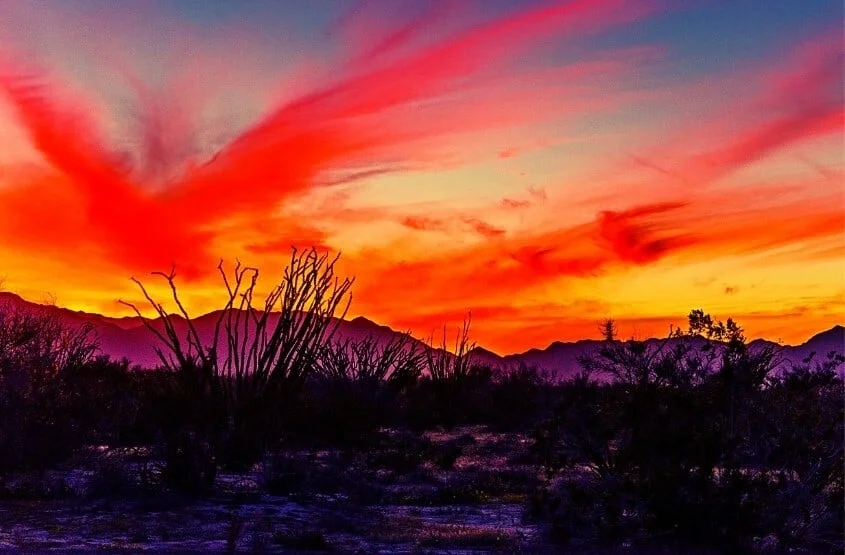
San Felipe is a very safe town on the eastern coast of Baja California. This fishing village is home to less than 20,000 citizens and is known to be much calmer than bigger cities within the state, like Rosarito.
See also: Best Hiking in Baja California
San Felipe also has a lot of gorgeous beaches where you can soak up the sun, swim, and of course, fish.

Ensenada, Mexico, is one of the most laidback cities in Baja Mexico, and as a result, this town has lower crime rates. Additionally, police and citizens carry a strong level of trust in each other, ensuring the city remains safe.
Ensenada is a coastal city and also happens to be the third-largest city when it comes to population. You can find local wines, delicious seafood, and a lot of fantastic beaches. As if that’s not enough, the weather there is consistently superb for almost nine months out of the year.
Todos Santos

Since Todos Santos is a popular tourist city, local police presence is apparent, and quick to respond to any petty crimes that may occur while visiting. This makes Todos Santos a safe and enjoyable place to visit.
Plus, it’s a hip surf town where you can find some of the most breathtaking views in the entire country. It’s situated on the Sierra de la Laguna Mountains’ foothills and the Pacific coast of the (Baja California) Peninsula. This natural paradise is made of stone streets and uncrowded beaches but it also features a ton of natural beauty and world-class waves.
Other Destinations
Overall, the southern part of Baja is known to be the safest place in the entire country. This part of Mexico is not attributed to the drug war and has had no major problems.
In addition to the aforementioned cities, here are some popular tourist destinations with a safe rap:
See also: Best Time to Visit Baja California: Events and Festivals
- San Quintin
These are some of the safest areas in all of Mexico and some of the most exciting because they’re the home to acclaimed national parks and amazing caves.
Hiking and camping are generally considered to be quite safe throughout Baja, but it’s highly recommended that you never venture out alone and try to stay close to other outdoorsy groups.
While “safety in numbers” is always a good strategy to employ, this is not just to protect you from wildlife or backroad criminals.
Many of Baja’s remote locations have really poor (or nonexistent) cell and Wi-Fi service. In the event of an emergency, you’ll want other people around to get you some help.
How to Stay Safe in Baja California
Traveling to Baja is not dangerous as long as you come prepared and know what to watch out for. Here are a few tips on how to protect yourself during your travels:

1. Check your country’s recommendations for travel to Baja Mexico
Many countries will put out safety advisories for destinations/cities that will help you understand the current political/crime climate at any given moment. It’s important to remember that the safety situation can change in an instant, so turning to the government for up-to-date information is wise.
That said, especially when it comes to Mexico, these safety concerns can be overblown. Do your homework, read the references they provide, and then you can make an informed decision in combination with articles like the one you’re reading right now.
Seeking a healthy mix of local and international context is the key to being a cautious traveler.
Need help finding resources? Here are a few helpful government advisory links:
- United States
2. Follow the laws while driving
Many travelers make the trip to Baja California in their vehicle as it’s right across the border from California. That said, the moment you cross the border, driving conditions and laws change, so make you understand all the requirements to travel to Mexico by car . To get started, these are a few quick things to keep in mind:
- Furthermore, the streets of Baja are littered with potholes and stray dogs, so always be observant while driving and drive during the day if possible .
- Be aware that you need Mexican car insurance to drive in Baja California and surrounding areas. Otherwise, you risk huge legal fees. Plus, many locals don’t have insurance, so if you do get into an accident, at least you’ll be covered. Pro tip: Don’t get just any insurance; it’s best to get affordable yet reputable insurance like Baja Bound , who’s been in business for decades.
Driving to Mexico? You MUST have third-party liability insurance. Ensure you read my guide for more info.
- It’s best to avoid driving at night if possible, as your visibility is reduced, and criminals are generally more active at this time. Cartels have been known to create illegal roadblocks as a way to demand money before allowing you to pass through.
- Also, armed muggings can occur while stopped, especially in crowded cities, so try to limit how often you stop and plan your trip ahead to ensure you’re taking the best routes.
3. Stay vigilant while wandering the streets
When it comes to exploring the cities in Baja, there are a few very simple rules you should follow to increase your safety.
- Never walk alone . Walking around alone is never a good idea, especially in a foreign city. It’s best to travel in a large group, or at least with two other people. Venturing around a city in Baja alone is just inviting trouble. Skip the trouble, don’t walk alone. Simple.
- Avoid exploring Baja at night – Exploring a city at night is not the best idea, as this is when crime is at its highest and you’re most vulnerable. If you do decide to explore at night, go with a group and make sure to bring an extremely bright flashlight and try to stay near the tourist areas as they tend to be safer.
4. Watch out for petty crimes
Thefts, snatch-and-grabs, and pickpocketing happen a lot in Mexico, especially in crowded areas, so try to avoid them. With that being said, be aware of who is around you at all times, don’t leave your personal belongings lying around, and certainly don’t carry all of your money with you.
Use common sense, stay alert, and don’t draw attention to yourself. Avoid wearing fancy jewelry and brand-name clothes, which may draw unwanted attention, ultimately leading the criminals right to you.
There are a also few common tourist scams you’ll want to look out for, especially in the larger cities. For example, people asking you to take their picture/offering to take yours do not always have the best intentions, and if anyone offers you assistance at the ATM, you should politely decline and walk away.
Trust me, at the end of the day, staying vigilant and keeping to yourself should be enough to keep you safe, so there’s no need to panic.
5. Don’t resort to violence
Although petty crime is the most common experience for all visitors, both physical and sexual violence is also at an all-time high. In fact, in recent years, it’s been well documented that Mexico has had a notably high murder rate (with most of the victims being Mexican nationals).
If you’re in a situation where you are being threatened for money or valuables, do not resist and/or fight back.
My aim is not to scare anyone but rather to inform you of the reality. Although, violent crimes should be easily avoidable using common sense.
Here are some key tips to avoid violent crimes:
- Don’t get involved with the wrong people
- Avoid attracting any kind of attention to yourself
- Be respectful and courteous
- Never find yourself in a situation where you are alone
- Don’t buy, sell, or use drugs
6. Don’t get involved with drugs
Most of the violent crimes in Mexico revolve around cartels and drugs. So the equation is simple. Avoid drugs and cartels. Then you avoid violence.
Expect to find yourself in trouble if you consider buying drugs while in Baja, Mexico. If I were you, I would avoid drugs, drug dealers, and any drug-related activities altogether in order to increase your overall safety.
Exploring Baja As A Solo Female Traveler
As we all well know, traveling on your own as a woman comes with its own unique set of challenges and safety concerns. While Baja is considered a safe destination for solo female travelers, you’ll want to take some additional measures to protect yourself.
Here are just a few tips and tricks if this will be your first trip without a companion:
1. Invest in an international phone plan so you can check in with your loved ones
It’s important that someone knows where you are and that you’ve made it back to the hotel safely. You can also share Uber driver information and other tracking info this way in case it’s needed.
2. Be mindful of your social media use
I totally understand the urge to post about your vacation as soon as you set foot on international soil, but giving away your location as a solo female traveler isn’t the wisest course of action. I typically avoid placing any geotags on my content and keeping my location ambiguous if I really can’t wait.
Otherwise, I will avoid sharing any highly specific content (hotel partnership anyone?) until I return home. Get those brand deals and brag about staying at that 5-star resort, by all means, but protect yourself while you’re at it.
3. Read reviews written by other solo female travelers
If another woman felt unsafe or insecure at any given hotel/vacation rental/attraction/part of town, chances are she’s going to warn others. We have to stick together, right? Before booking anything, I always comb through reviews for ones that seem to be written by someone like myself. If the overwhelming consensus is that they felt safe during their stay, then I go ahead with my plans.
4. Don’t feel bad about telling a fib
I get it, you don’t want to lie to someone’s face. But if you feel like a conversation is veering in a direction you’re uncomfortable with or you have to get into a taxi alone, there’s no harm in mentioning that you have a boyfriend/husband waiting for you back in the hotel room/at the restaurant. Being polite is never worth sacrificing your safety.
5. Take a walking tour before venturing out on your own
This might sound a little silly, but local tour guides know all the best spots in town (and the shadiest). If you want to know which areas to avoid, they’ll almost certainly point them out, and there’s no harm in asking about which areas are okay after dark or where to steer clear of. That said, I’d avoid mentioning that you’re on your own.
Police corruption and bribes in Baja California
Police corruption and “mandatory” bribes are not a huge concern in Baja, but this is something that occurs in some of the larger, more dangerous cities, especially those near the border.
Namely, this is more of a concern in Tijuana. Mexicali and Tecate. While the chances of being stopped are low, if you are, it is important to remain calm and level-headed. They will never be framed as a bribe right off the bat, and the officers will inform you that you have broken the law in some way, such as a minor driving infraction.
Generally, the bribes requested could range from $100-$500 USD, and will typically go up if they can see that you have a lot of cash on you. For this reason, it’s best not to flash your money around while counting it out.
Advice on how to handle these bribe stops is varied, but from what I’ve seen, it may be best to pay the fine and move on rather than run the risk of garnering too much attention.
You may find it’s worth requesting that they take you to the police station to pay the fine, but this is not a foolproof strategy.
Is Baja California Safe? – FAQs
Is the food in baja safe.
The food in Baja California is relatively safe to consume. To minimize your risk of foodborne illness, here are a few tips:
1. Always check the reviews of restaurants online before dining out 2. Avoid eating perishable foods that are room temperature or look like it’s been left out for a long time. 3. Make sure the meat you eat is cooked all the way through before consuming. 4. If eating at a street stand, watch to see if the person who handles the money is also the same person making and serving the food.
Is it safe to drink tap water in Baja California?
Waterborne illness can also be a concern, so to avoid a medical emergency (or even some uncomfortable tummy grumbles) don’t drink the tap water.
You can easily stock up on bottled water at convenience and grocery stores, but you’ll also want to be mindful about ice at the bar or produce that doesn’t have a peel.
Is Driving through Baja Safe?
Driving through Baja is generally safe. Be sure to stick to the main roads, avoid picking up hitchhikers, and try not to stop unless it’s an emergency. Also, drive during the day if possible and have Mexican vehicle insurance in case of an accident.
Is the Cartel in Baja?
There is always a cartel presence in Baja California. However, the cartel does not generally wreak havoc on tourists because they are their main source of income. As long as you don’t get involved in any of the cartel’s business, they will leave you alone.
Is Baja California safe for the LGTQIA2S+ community?
Within the smaller, catholic communities throughout Mexico, there’s definitely still a lingering stigma when it comes to LGBTQIA2S+ people, and PDA is discouraged for your own safety. This is true of Baja as well. That said, there are several “resort” destinations throughout the state that are gay-friendly and highly inclusive. Los Cabos, Cabo San Lucas, and La Paz all come highly recommend and purpleroofs.com is a great resource if you’re looking for places where you’re 100% free to be yourself.
In Conclusion – Is Baja California Safe?
If you’re looking to travel to Baja, Mexico, but you’re worried about the state’s overall safety, you can travel with confidence, knowing you’re already increasing your safety just by consuming helpful content such as this article.

Alex Gomez, the founder of Mexico Travel Buddy, combines his firsthand, on-the-ground experiences in Mexico with a personal connection to the country, fostered through his Mexican wife and numerous explorations. As a professional writer and avid travel enthusiast, his favorite destination remains anywhere within Mexico's diverse landscapes. His extensive travels have equipped him with a treasure trove of tips, tricks, and insights, which he enthusiastically shares with his audience. Alex's stories and photos on the website not only showcase his love for Mexico but also offer readers a deeply authentic and engaging perspective.
Read more by Alex Gomez
Leave a Comment Cancel reply
Welcome to mexico travel buddy.
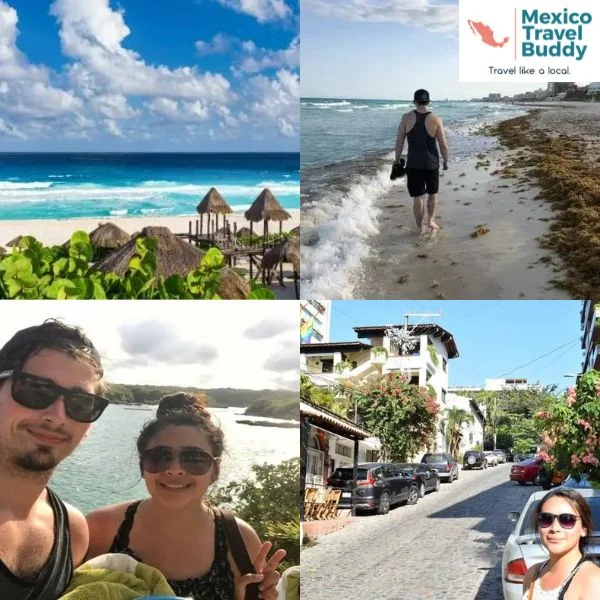
We are excited to help you make the most out of your travels to Mexico, in a safe and joyful manner!
We share our personal experiences and expert advice so you can travel Mexico like a local.
Find out more about our journey and our love for Mexico.
Follow us on our socials!
Looking for something or somewhere specific? We might just have it!
Travel Like A Local Where's Your Next Stop?
Recent Posts
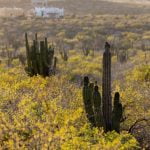
San Ignacio Mexico Travel Guide
March 30, 2024
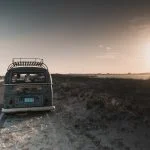
Everything You Need to Know About Punta Baja: The Sleepy Seaside Camp of Your Dreams

Pescadero Mexico Travel Guide

Mulege Baja California Travel Guide
- Search Please fill out this field.
- Manage Your Subscription
- Give a Gift Subscription
- Newsletters
- Sweepstakes
U.S. Issues Travel Warning for Mexico Ahead of Spring Break
The warning is asking travelers to “travel smart” and “be informed."
:max_bytes(150000):strip_icc():format(webp)/alison-fox-author-pic-15f25761041b477aaf424ceca6618580.jpg)
marako85/Getty Images
The United States is warning travelers heading to Mexico to be aware of their surroundings ahead of the spring break holiday season.
The warning , which was issued this week by the U.S. Embassy and Consulates in Mexico, reminds travelers to “travel smart” and “be informed” as “thousands of U.S. citizens visit Mexico during spring break” each year. The embassy continued that “while the vast majority travel safely,” visitors should be aware of issues with crime, drugs, unregulated alcohol, drownings, and more.
“Crime, including violent crime, can occur anywhere in Mexico, including in popular tourist destinations. Travelers should maintain a high level of situational awareness, avoid areas where illicit activities occur, and promptly depart from potentially dangerous situations,” the embassy warned. “U.S. citizens should exercise increased caution in the downtown areas of popular spring break locations including Cancun, Playa Del Carmen, and Tulum, especially after dark.”
The warning also reminded American travelers that drug possession and use is illegal in Mexico, including medical marijuana. It also advised that unregulated alcohol may be contaminated, that counterfeit medication is common, and that guns are illegal in Mexico.
When it comes to the country’s popular beaches, the embassy reminded travelers some beaches may have strong rip tides and “may lack lifeguards, warnings, or signs of unsafe conditions.”
The U.S. Embassy and Consulates in Mexico issued a similar spring break warning last year .
The U.S. Department of State classifies different states in Mexico under different warning levels. While travelers can “exercise normal precautions” when traveling to the Campeche and Yucatan states, the State Department warns them to “exercise increased caution” when heading to places like Baja California Sur (where Los Cabos is), Mexico City, and Quintana Roo (where Cancun is) due to crime.
The State Department also asks American travelers to “reconsider” going to the state of Jalisco, which is home to popular destination Puerto Vallarta , due to the danger of crime and kidnapping.
The State Department recommends Americans who do travel to Mexico keep people at home informed of their travel plans and enroll in the department’s Smart Traveler Enrollment Program (STEP) to both receive alerts and make it easier to locate them if an emergency occurs.
Travelers heading to international destinations can view all current travel advisories on the State Department's website at travel.state.gov .
Related Articles
- Skip to main content
- Skip to secondary menu
- Skip to primary sidebar
- Skip to footer
AllAboutBaja.com
Travel Guide to the Baja California Peninsula
5 or More Baja Safety Tips
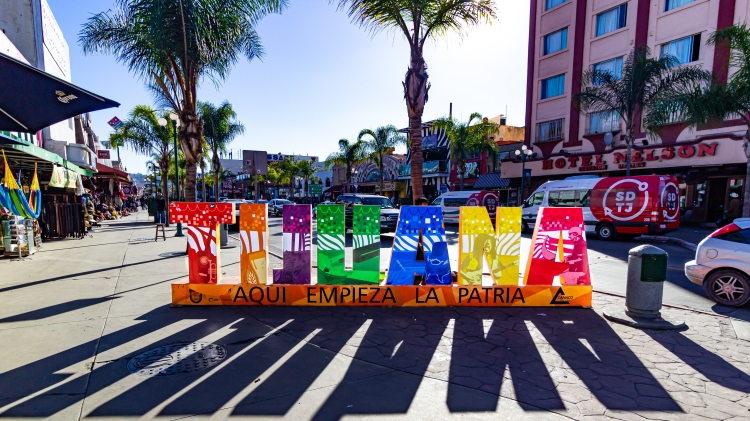
Is Baja California Safe for Travelers? Exploring Safety Measures and Recommendations
Let’s review some Baja safety tips. The most rewarding way to experience Baja is by driving and living out an incredible adventure. If you are driving to Baja from California, we recommend using the Tijuana border crossing map . We do not recommend taking the Otay Mesa border crossing because you’ll experience quite a bit of traffic.
Is Baja really safe? This is a very good question and it is certainly warranted by these unprecedented times that we are living in.
To put it simply, Baja is much safer than Mexico and parts of the United States. In fact, many people believe that Baja is much safer than many major cities in the US.
However, like with any other place in the world, there are places in Baja that should be avoided and there are places that are also much safer than others.
First, there are many real problems that exist in Baja that the Mexican government is doing its best to combat. Almost all of these problems are caused or related to drug use in the United States.
Example: If you were traveling to California, from anywhere in the U.S. would you avoid the whole state because of the constant news reports about the violent crime and brutal murders that happen daily in South Central Los Angeles?….Answer: NO! Would you avoid Los Angeles?….Answer: NO!
The northern part of Baja should be avoided. Places such as Tijuana experience lots of criminal activity from drug cartels to gang violence. The Mexican government has cracked down on criminal activity in the area, however, it is still a dangerous place and you should exercise caution.
Other areas to avoid are Tecate and Mexicali. These border cities are known for major problems and we recommend staying away from border cities when you can. Gang violence and drug cartels are serious issues in northern Baja.
Staying away from cities known to have gang violence and drug activity is recommended and encouraged. Be sure to research the place you’re visiting to update yourself on the safety of the area.
Southern Baja is known to be the safest place in all of México. There have been no major problems, attributed to the drug war, in any area of Southern Baja.
While visiting Baja, you should always be ready for anything. Some general rules of thumb are to keep all your belongings in a secure place. Leaving valuables in cars or in the open will almost always result in the loss of those items.
When out and about, make sure to never leave your things unattended. Pickpockets are common and may sometimes carry weapons. It’s important that you always keep your eyes peeled and your belongings secured.
Additionally, never go anywhere alone and stick to well-lit areas. While some places may be safer than others, there is always a risk of crime. Ask the locals about safe places to visit and places to avoid.
Drink conservatively as you will need to be able to navigate back to your lodgings afterward. Be careful if you are offered a free drink as there have been reported cases of these drinks being spiked or poisoned.
There is also the risk of running into scam services such as scam taxis or fake policemen. When needing a taxi, have your hotel or restaurant call a taxi for you. When the taxi arrives, make sure that the driver has a driving license and that it looks safe (taxi drivers will usually display their license on the window or seat and will usually wear a uniform). Always try to use licensed taxis or your own car when traveling, especially after dark.
Be wary of fake police officers as well. Often, these individuals will ask you to pay a fine or return to the station with them. If you believe that a false officer has approached you, call 9-1-1 or 1-1-2 immediately for emergency services.
Some safe places we recommend visiting are San Felipe (great fishing!), Loreto, and Ensenada.
If you are driving to Baja from anywhere east of California, we suggest you drive, at least, to Yuma, AZ on Interstate 8, before crossing the border. You can also cross just west of Yuma, at Andrade, CA (not recommended), or drive even farther west to Calexico where there are two border crossings.
If you are driving to Baja, from California, we highly recommend that you use our Tijuana border crossing map. Remember that recent U.S. laws require you to have a passport to re-enter the U.S.
If you plan on flying to Baja, there is no need to change your plans. The Los Cabos Airport and the La Paz Airport are well connected to American and Canadian Airlines. Once you’ve arrived, make sure to use common sense. Stay low-key and remain polite.
Baja Safety Driving Tips
DRIVING PRECAUTIONS: Fill up with gas, get some pesos, and purchase your Mexican Car Insurance (this is a must) before you enter México, either online or from one of the many outlets on the U.S. side of the border. Cross the border as early in the morning as possible and do it with a full tank of gas.
Do not forget to get your (FMM) Immigration form, if you are planning on driving south of Ensenada or San Felipe on the eastern coast.
Travel in groups or caravans, if possible. Look for others, when you are stopped, that may be driving south, and try to arrange a small caravan. Get as far south as possible before stopping for the night.
After you cross the border, try to drive to San Quintín , El Rosario , Cataviña , or even Guerrero Negro for your first overnight stop. We often drive as far south as San Ignacio . Then, for your second day, you may plan a more leisurely pace.
Enjoy your drive, take in the beautiful scenery, and enjoy the abundant pleasures that Baja has to offer.
2023 Baja Safety Advisory Update
According to the U.S. State Department, Baja California is a **Level 3 – Reconsider Travel** destination due to an increased risk of crime and kidnapping¹. However, some areas like Rosarita, Ensenada , and the Guadalupe Valley are relatively safe for visitors¹.
If you do decide to travel to Baja California, you should exercise caution and avoid remote locations, travel during daylight hours, and stay on highways¹.
Baja Safety Source: (1) Mexico Travel Advisory. https://travel.state.gov/content/travel/en/traveladvisories/traveladvisories/mexico-travel-advisory.html.

ALL ABOUT BAJA
- About this Site
- Advertise with Us
- Privacy Policy & TOS
Baja Car Insurance
We’re sorry, this site is currently experiencing technical difficulties. Please try again in a few moments. Exception: request blocked
Get Daily Travel Tips & Deals!
By proceeding, you agree to our Privacy Policy and Terms of Use .

Is Cabo San Lucas Safe? Swimming Dangers, Drinking Water, and More
The Editors
We are the editors of SmarterTravel! Together we have appeared in countless travel publications including ABC News, Huffington Post, Travel + Leisure, USA Today, and more. We dedicate our days to creating and producing expert travel content, including packing tips, general travel advice, destination inspiration, and helpful videos. Follow us across social media on YouTube , Pinterest , Facebook , Instagram , and Twitter or drop us a line to say hi at [email protected]!
Travel Smarter! Sign up for our free newsletter.
Cabo San Lucas is one of the world’s prime vacation spots for good reason. Accommodations range from ultra-luxury retreats to down-to-earth glamping getaways, with levels of hospitality to match. There’s a rich, uplifting culture to enjoy; adventures galore, whether organized or not; that unbeatable Cabo San Lucas weather; and, of course, the main attraction: the vast, inviting sea, alongside the region’s other iconic natural wonders.
Still, if you’re planning a trip here, you might wonder: Is Cabo San Lucas safe? That’s a valid thing to ask, especially considering that in recent years, the city has experienced the highest crime rate in Baja California Sur.
The U.S. government recommends “ increased caution ” when traveling to the state of Baja California Sur , where Cabo San Lucas is located. It should be noted, however, that most forms of violence in Baja California—homicides, kidnappings, extortions, and so on—are related to the drug war , so travelers have mostly been spared.
While that’s reassuring to know, it’ll behoove you, before landing in Cabo, Mexico, to be informed about what not to do in Cabo, whether you can drink the water in Cabo San Lucas, what you need to know about swimming in Cabo, plus key information about wildlife like snakes and scorpions in Cabo San Lucas.
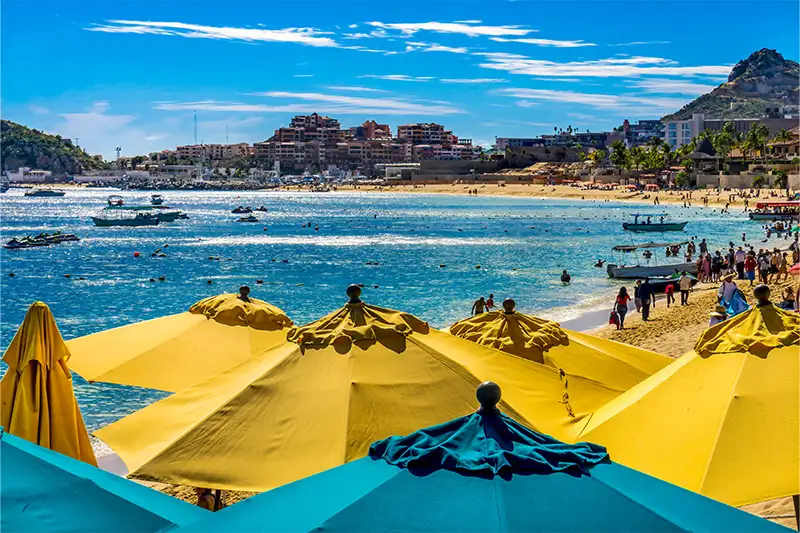
Tips for Safety in Cabo San Lucas
- When making your way around Cabo San Lucas, limit your explorations to daytime hours, beware of pickpockets and other thieves, don’t hail taxis off the street, and—as with any destination—if you get into an Uber, share your ride’s progress with a friend or loved one.
- Drinking water in Cabo San Lucas should be restricted only to bottled water and glasses of water poured at reputable hotels, resorts, and restaurants where your server has reassured you that what they’re serving is agua purificada— purified water . And skip the ice.
- In Cabo San Lucas, swimming in the ocean can be a risky proposition. The riptides are fierce, the jellyfish are plenty, and the lifeguards are all but nonexistent. Stick to swimming only at your hotel’s swimming pool, or at a beach that’s known to be safe, most of which are on the eastern side of the Baja Peninsula. Never enter a closed beach, and heed all posted signs and flags.
- Some of Cabo’s wildlife species are forces to be reckoned with. Snakes and scorpions in Cabo San Lucas can cause serious injuries and medical emergencies—especially rattlesnakes, yellow-bellied sea snakes, and the bark scorpion. Know how to identify and avoid these species, but if you get bitten, seek immediate medical attention. Worried about bug bites in Cabo San Lucas? The key ones to avoid include the Baja brown recluse and mosquitoes, so wear DEET and pack antihistamines
- Topping the list of what should you not do in Cabo San Lucas: drugs. Not only do they incapacitate you, making you more likely to be targeted as a victim, but if you’re caught using drugs in Cabo San Lucas, the punishment will be severe—Americans charged with drug possession can be kept in a Mexican prison for months before their cases finally go to court..
What Is the Safest Hotel Floor to Stay On?
How to Get Around Safely in Cabo San Lucas
Yes, there are larger security issues going on throughout Baja California, as well as in adjacent parts of Mexico. But in Cabo San Lucas, crimes that affect tourists are mostly relegated to pickpocketing and other petty forms of theft —so hide your valuables, lock your doors, and use common sense when it comes to exploring anywhere off the beaten path or going out after dark. If you get mugged or forced to access an ATM, don’t resist—your physical safety is always more important than your money.
In terms of what to avoid in Cabo San Lucas, the U.S. Department of State recommends that travelers not hail taxis directly off the street anywhere in Mexico. Instead, use hotel transportation services or taxis that have been officially dispatched; unlicensed cab drivers have been known to scam travelers . Taxis are not metered in Cabo San Lucas, so always negotiate the price before getting in, and don’t pay until you arrive at your destination. Taking public transportation in Cabo San Lucas is not recommended either, since buses have been hijacked and theft is commonplace.
Uber runs in Cabo as well, though tensions between taxi and Uber drivers have sparked protests at times. If you decide to use a ridesharing app in Cabo San Lucas, take all the usual precautions: Share the progress of your ride with a friend or family member so that someone always knows where you are. When waiting for your ride, choose a busy, well-lit area. And when your driver arrives, confirm that his or her face and license plate match what comes up on your phone. Then sit in the back seat—never the front.
The American government also recommends that travelers in Mexico “avoid driving alone or at night” and to use toll roads when possible. If you must drive, keep your gas tank as full as possible, carry a spare tire, and charge your phone.
10 Travel Safety Mishaps and How to Avoid Them
Natural Disasters in Cabo San Lucas
How dangerous is Cabo San Lucas in terms of natural disasters? The region is prone to hurricanes from roughly July through September; if one should hit while you’re there, take cover and follow authorities’ instructions. Baja California Sur is also subject to earthquakes and volcano eruptions, so read up on what to do in case either of those happens while you’re visiting, follow official advice, and pay attention to any and all warnings.
Drinking Water in Cabo San Lucas
Can you drink the tap water in Cabo San Lucas? The short answer: It’s not recommended . The pipes here can contaminate the Cabo San Lucas water, which often causes digestive issues for anyone not used to drinking water in Cabo right out of the faucet.
Instead, stick to bottled water, or ask your restaurant server for purified water— agua purificada— with no ice. (Speaking of drinking in Los Cabos—or anywhere you may travel—never leave your beverage or meal unattended, since spikings are not unheard of.)
Other hygienic factors to keep in mind while traveling in Los Cabos: be judicious with the street food you buy and avoid raw vegetables—similarly to the tap water, these items may be prepared in a way that your digestive system is unused to.
The Ultimate Solution for Nervous Flyers
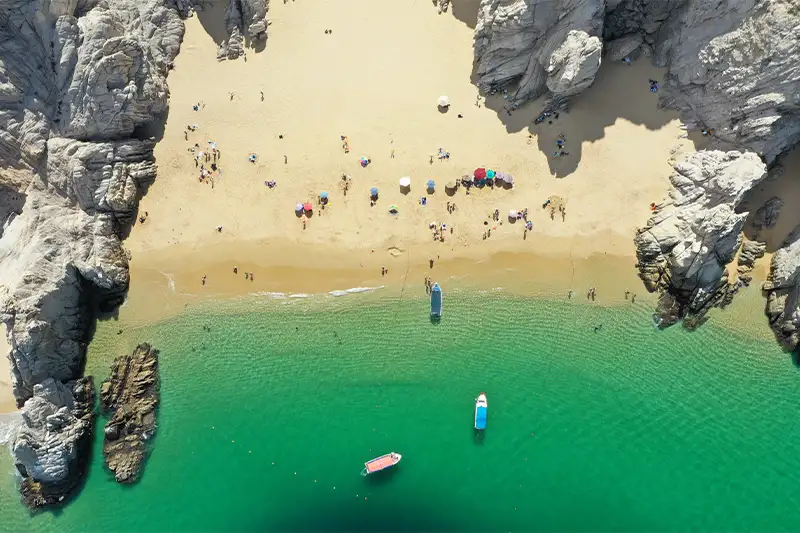
Swimming in Cabo San Lucas
The expansive sea, of course, is the main draw in this part (and many other parts) of Mexico. But is swimming in Cabo San Lucas safe? Not always. There’s much to know before submerging yourself in the Cabo ocean. The fiercest danger is riptides , which make many Cabo beaches unswimmable. Along with rogue waves, they regularly drown strong swimmers, tragically sweeping them out to sea. They can even knock over adults who are standing in water that’s only ankle-deep.
If you do find yourself getting pulled out by a riptide, try to stay calm and swim parallel to the beach into the breaking waves. Should you need saving, try to float, raise one arm up in the air, wave, and call for help.
Most beaches in Cabo San Lucas don’t have lifeguards, unfortunately, but officials often put out colored flags to let beach-goers know where and when swimming in the Cabo San Lucas ocean is safe—and where and when it’s not. It’s critical to obey all posted signs, never enter a closed beach, and know that this isn’t the place to rent or play around in water vehicles, since many aren’t maintained to standard . Instead, swim at your resort’s swimming pool or at a beach that’s well-known to be safe, including several on the eastern side of the Baja Peninsula.
One other danger to be alert for if you’re planning on swimming in Cabo San Lucas: jellyfish . You can wear a Lycra skin for protection, or just consider this just one more reason why you shouldn’t swim in Cabo seas.
Tiny Travel Products That Will Save Your Health
Snakes, Scorpions, and Insects: Wildlife Dangers in Cabo San Lucas
Besides jellyfish, there are other animals to be wary of in Baja California. There are 35 species of snakes in Cabo San Lucas, about half of which are venomous. Most people never encounter one, but it’s still good to know what the poisonous snakes in Cabo San Lucas look like: The yellow-bellied sea snake looks like a floating stick in the water, while the area’s 18 species of rattlesnake are identifiable by their signature noisemakers.
Cabo’s snakes tend to hide in rock piles, brush, or trash piles , so avoid those. It helps to wear closed-toe shoes, stay on the beaten path, and carry a travel first-aid kit . If you get bitten, keep the wound below your heart and don’t cut open the wound or try to suck the venom out. Most importantly, get to a doctor or hospital as soon as possible.
Bugs in Cabo San Lucas are also worth knowing about. The Baja brown recluse spider , in particular, can cause extremely damaging bites. Identify it by its tan to brown color; long, fuzzy legs; and the “violin” pattern on its back.
Cabo has plenty of mosquitoes, too, so wear DEET repellent and pack antihistamines . There haven’t been many cases of Zika in Mexico recently, but the CDC reminds travelers that a risk of the mosquito-borne illness may still remain.
Mexico has upwards of 200 scorpion species, though only eight of those are dangerous to humans. The scorpions in Baja, Mexico, that travelers need to know about include the venomous bark scorpion , which is yellow and about three inches long. You definitely don’t want it to sting you, especially if you’re older or a child. If you do get stung, apply ice and seek medical help immediately.
Scorpions are more active in summer and at night. To keep your life free of them, tap and shake out your shoes before putting them on, shut your bags tightly so they can’t crawl in, and leave them alone if you see them. You can also carry a scorpion toxin antidote, available at some Mexican pharmacies .
—original reporting by Avital Andrews
You Might Also Like:
We hand-pick everything we recommend and select items through testing and reviews. Some products are sent to us free of charge with no incentive to offer a favorable review. We offer our unbiased opinions and do not accept compensation to review products. All items are in stock and prices are accurate at the time of publication. If you buy something through our links, we may earn a commission.
Top Fares From

Don't see a fare you like? View all flight deals from your city.
Today's top travel deals.
Brought to you by ShermansTravel
9-Nt Dublin, Cork, Killarney & Galway...
Railbookers

Luxe, 7-Night Caribbean & Mexico Cruise...
Regent Seven Seas Cruises

Ohio: Daily Car Rentals from Cincinnati

Trending on SmarterTravel
State Department Issues Travel Warning for Baja California, Tijuana
By nbc bay area staff • published march 25, 2022 • updated on march 27, 2022 at 12:32 pm.
The U.S. Department of State recently issued a travel warning for Americans planning of visiting either Tijuana or Baja California in Mexico due to a rise in crime and kidnappings.
The State Department is particularly concerned because of a high number of homicides in non-tourist areas of Tijuana.
The State Department is warning anyone who does travel to Tijuana or Baja California to stay on highways, travel during daylight hours and avoid remote locations.
Officials are also asking U.S. citizens to avoid traveling the following areas due to the ongoing crime and kidnapping :
Get a weekly recap of the latest San Francisco Bay Area housing news. Sign up for NBC Bay Area’s Housing Deconstructed newsletter.
The warning comes almost a year after Hayward teen Manuel Reyes disappeared while visiting family in Jalisco .
NBC Bay Area’s sister station Telemundo 48 spoke with Reyes' brother Josue Contreras Friday. He said that his family haven't gotten any clues about where the teen might be.
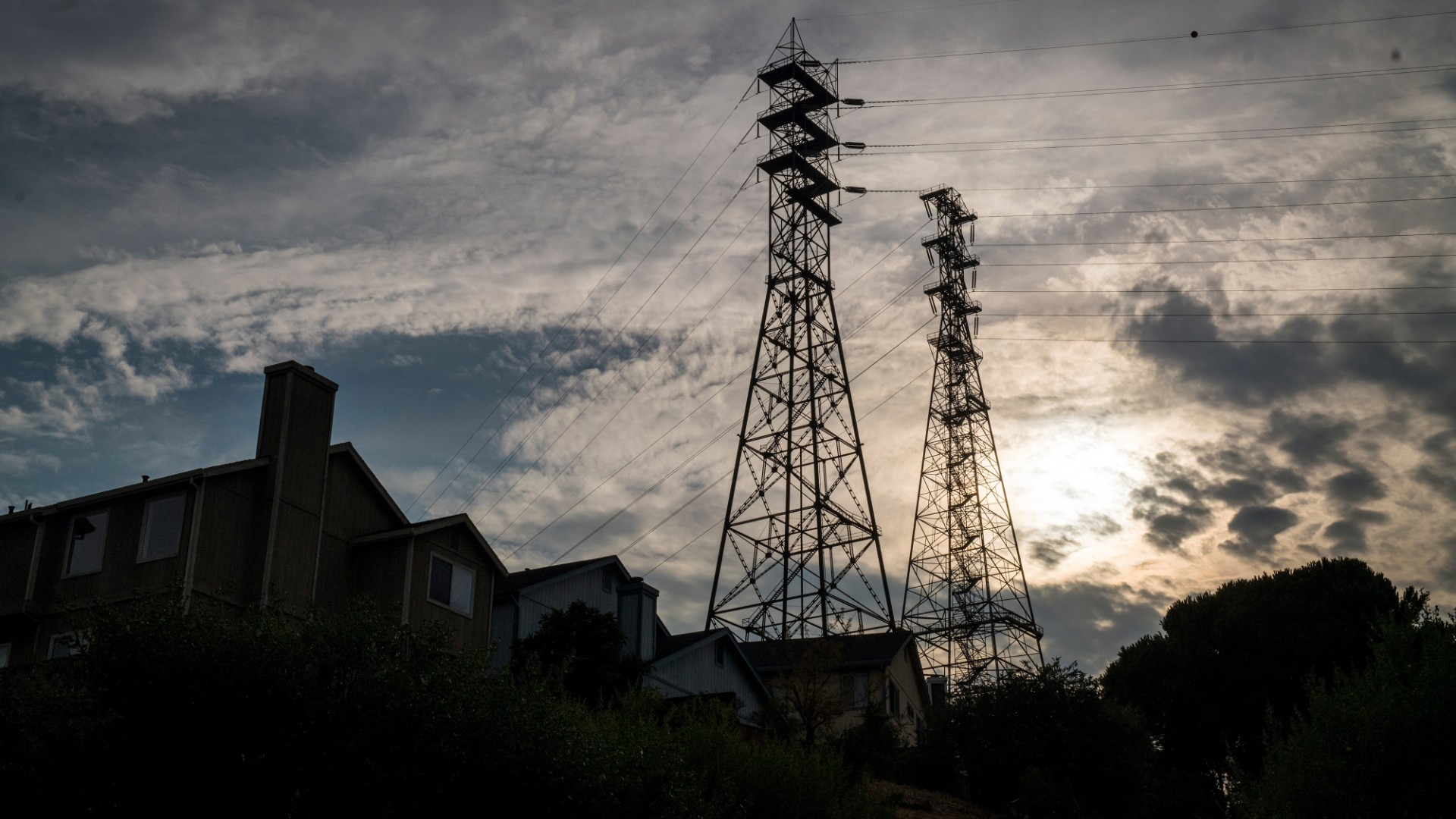
California regulators to vote on changing how power bills are calculated
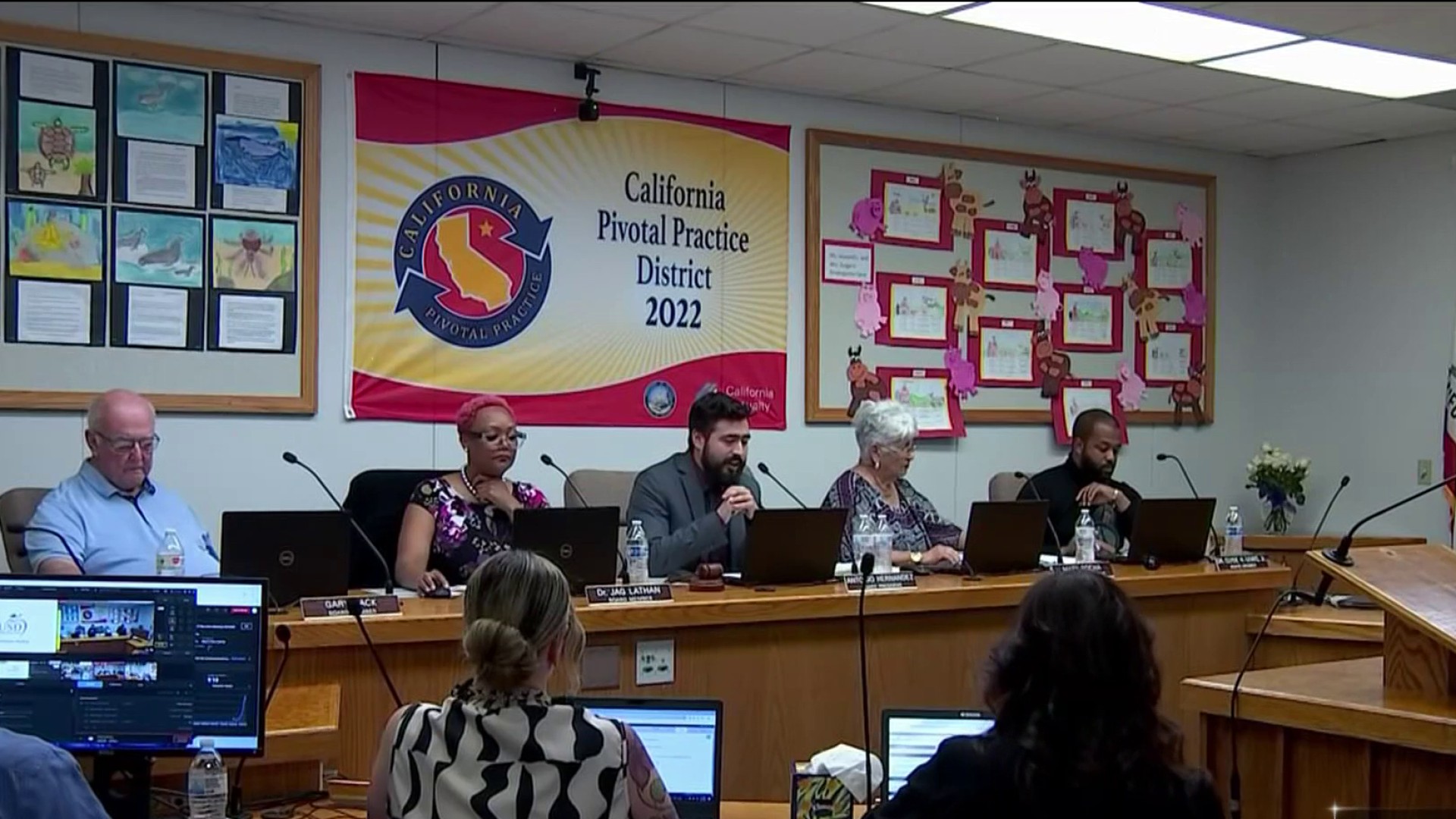
Antioch school board votes not to remove superintendent amid bullying claims against supervisor
“Knowing Mexico, I thought they would ask for money. In this case, they didn't. We haven't gotten any calls,” Contreras said.
For more information on the travel advisories in Mexico, visit travel.state.gov .
This article tagged under:
Safety tips from the US government for Americans traveling to Mexico
A travel advisory for the country has been in effect since late august 2023, by dana williams • published may 4, 2024 • updated on may 4, 2024 at 5:24 pm.
The U.S. Department of State has been cautioning Americans to reconsider travel to Baja California, the region of Mexico, where four bodies were recently found .
The warning is part of a travel advisory for the country that has been in effect since late August 2023. According to the department’s website, “violent crime – such as homicide, kidnapping, carjacking and robbery – is widespread and common in Mexico.”
It also adds that because U.S. government employees are restricted or prohibited from going to certain areas in Mexico, it makes it difficult for them to provide emergency services to U.S. citizens who might need it.
However, they shared tips for Americans who travel to the region against their warning:
Get San Diego local news, weather forecasts, sports and lifestyle stories to your inbox. Sign up for NBC San Diego newsletters.
- Keep friends and family informed of your travel plans.
- If separating from a group, share your GPS location with a friend.
- If taking a taxi alone, take a photo of the taxi’s number and/or plate and send it to a friend.
- Use toll roads when you can and do not drive alone or at night.
- Be extra cautious when visiting local bars, nightclubs or casinos.
- Do not show any signs of wealth (i.e. jewelry, etc.)
- Be vigilant around banks and ATMs.
The department also suggests enrolling in the Smart Traveler Enrollment Program .
For more information on the travel advisory, click here .
This article tagged under:

Is Rosarito, Mexico Safe? For Visitors in 2024

Not many people think of Rosarito when they think of Mexico’s prime beach towns. However, for those of us who live in California, Rosarito is actually quite the fun city to visit for a quick escape over the border. Visitors to Baja California will often be concerned and wonder “is Rosarito safe?”. In this blog, we’ll dive into safety questions and concerns as well as tips for staying safe while exploring Rosarito.
I’ve lived in California my whole life (in the South Bay LA then college at UCSB ), so Rosarito is a relatively easy destination for me to visit. I’ve gone down for a few spring breaks in and after college and always enjoy my time there. Rosarito is a safe destination if you’re prepared and aware.
❗️ SAFETY TIP ❗️ In an emergency, call Baja California’s bilingual Tourist Assistance Hotline by dialing 078 , from any cellphone with roaming privileges in Baja. The toll-free number is available from 6am to 6pm.
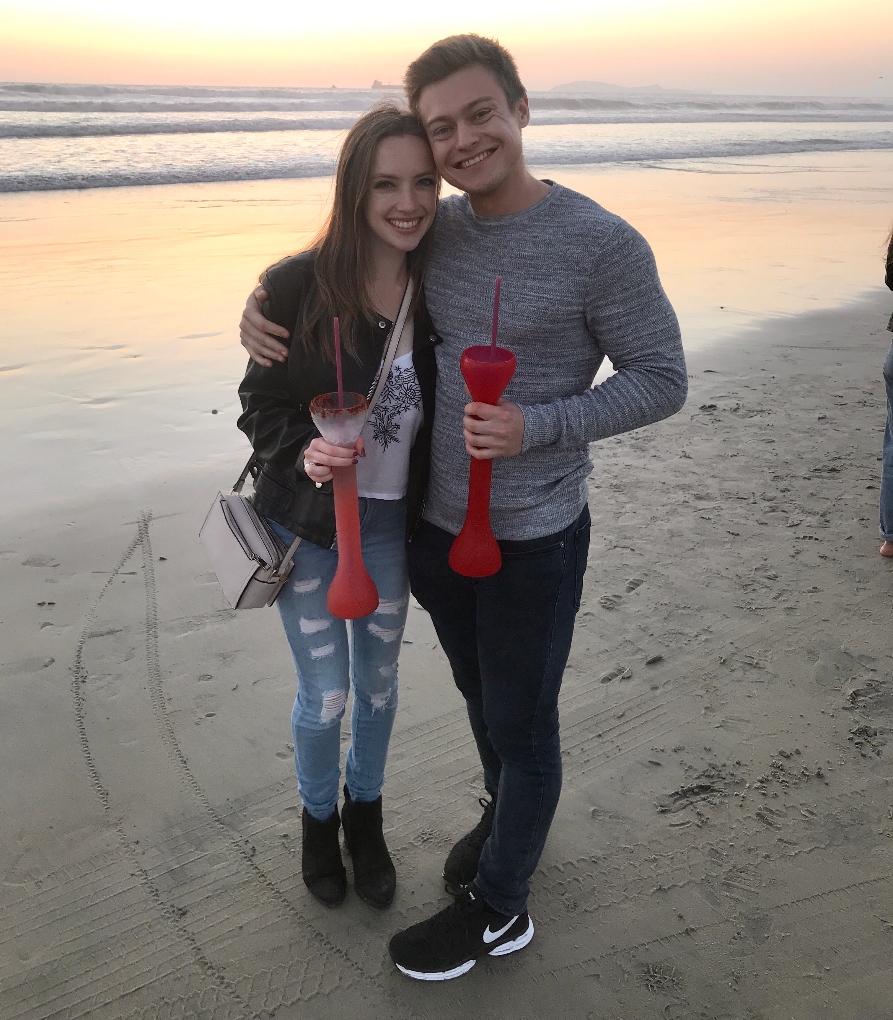
Why Is Rosarito So Popular?
Rosarito is popular for being a quick trip over the southern California border into Mexico, it’s only a 25-minute drive south of the border. It has a fun nightlife , affordable accommodation , and of course, excellent Mexican food. The city is known for its beaches, offering a relaxing atmosphere and a variety of water activities.
Rosarito tends to be a popular spot for spring break and summer trips. It’s also home to the famous Rosarito Beach Hotel and holds an annual music festival on the beach – Baja Beach Fes t in August.
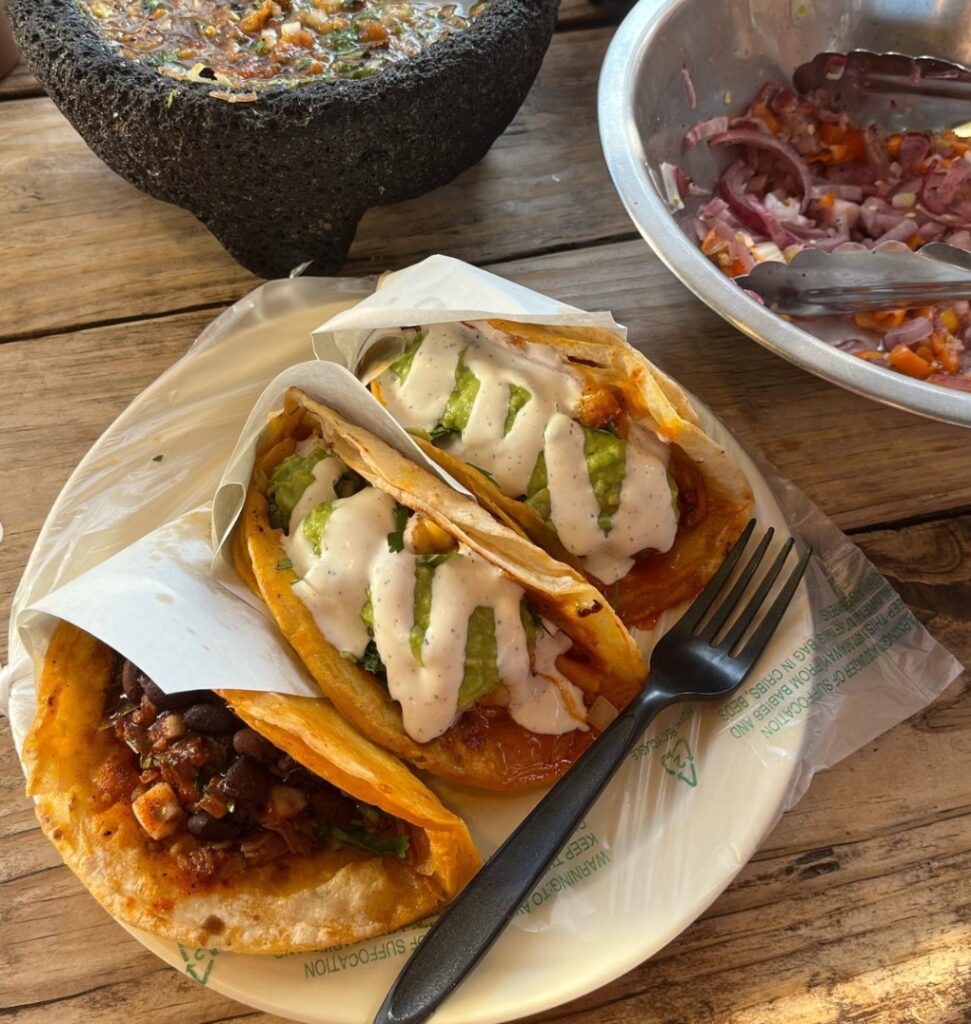
Is Rosarito, Mexico Worth Visiting?
Rosarito is worth visiting if you live in or find yourself in southern California for an extended amount of time and want a quick, cheap trip to Mexico.
Personally, I would NOT say Rosarito is worth a visit if you are traveling far simply to specifically to visit this part of Mexico. It’s not that great of a beach town when compared with more popular spots (think Cabo, Cancun, Sayulita) and while it’s cheaper, it’s not as safe or enjoyable as other parts of the country.
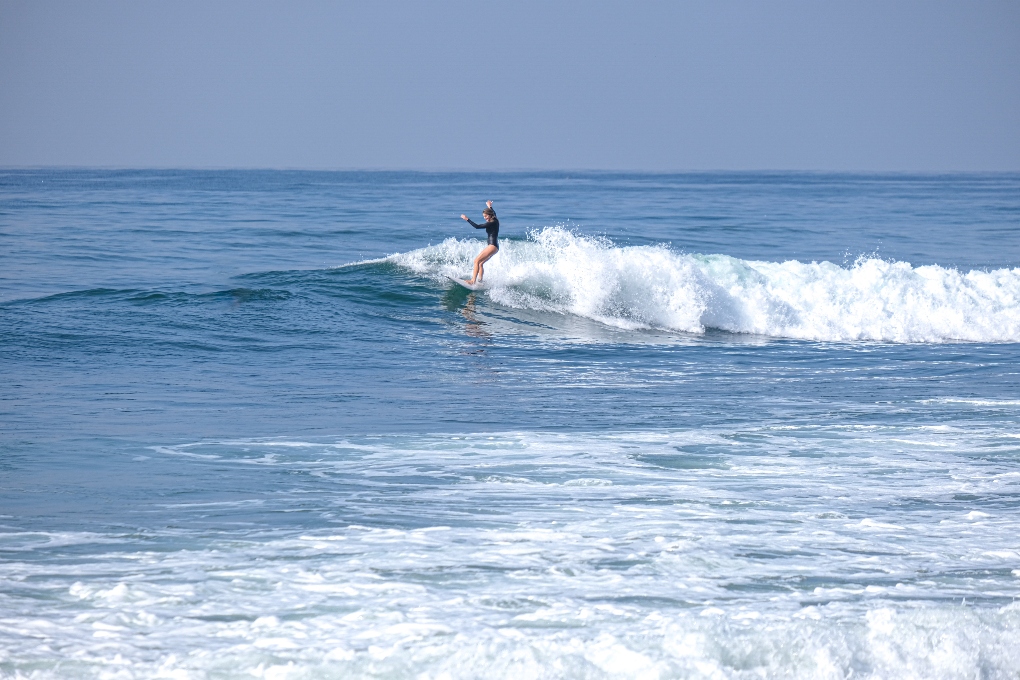
Rosarito Safety Questions and Concerns
Is baja california safe.
The U.S. official travel recommendation often puts Baja in the category of “reconsider travel,” most often due to crime and kidnapping. You can check the most up-to-date recommendations here .
For the most part, the crime is gang-related and happens in the non-tourist parts of Tijuana. The travel advisory recommends that travelers remain on main highways and avoid remote locations .
Is Rosarito Safer Than Tijuana?
Yes, Rosarito is safer than Tijuana . Most of the crime tends to happen near the border, and as you drive past Tijuana the atmosphere begins to feel safer.
I do know quite a few people who pop into Tijuana regularly to buy cheaper items and services or to visit family. Even Tijuana tends to be relatively safe if you visit during the daytime and stay in well-populated areas.
There can be a lot of hagglers and people who want you to follow them to help you with crossing the border. To be on the safe side, don’t engage with them (outside of buying some snacks while in the border crossing line) and keep your windows rolled up and doors locked .
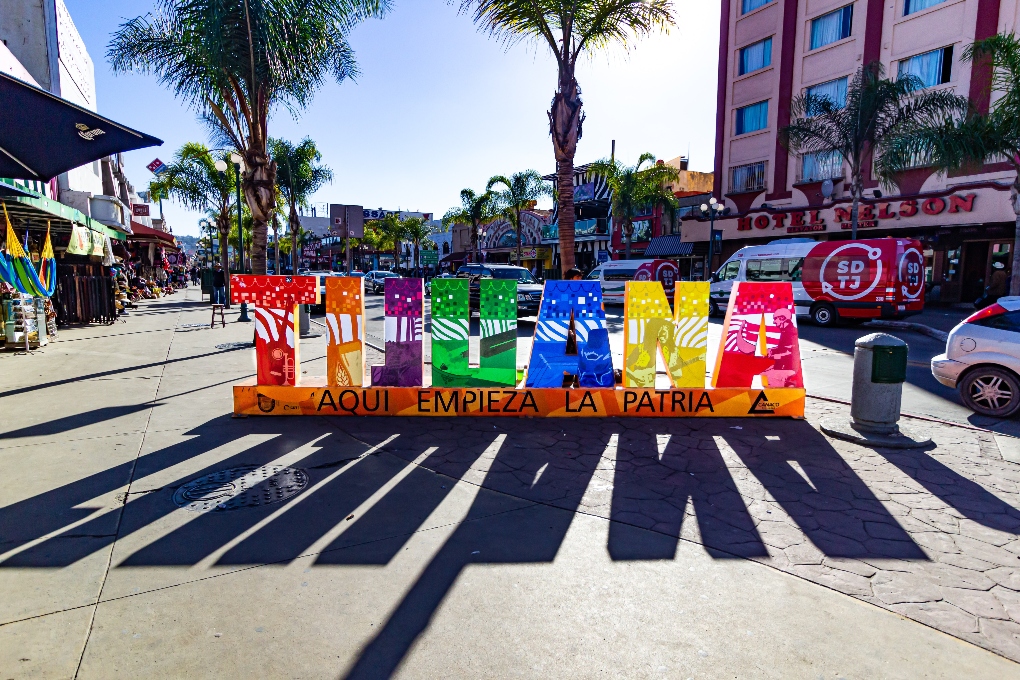
How Is the Crime in Rosarito?
Crime Index: 52.96 (moderate) Safety Index: 47.04 (moderate)
There are high concerns for property crimes such as vandalism and theft as well as problems with corruption and bribery.
There are moderate concerns for crimes such as being mugged or robbed, having your car stolen or broken into, people using or dealing drugs, and violent crimes such as assault and armed robbery.
There are low concerns for crimes such as being attacked, insulted, or subject to a physical attack because of your skin color, ethnic origin, gender, or religion.
(Statistics according to Numbeo )
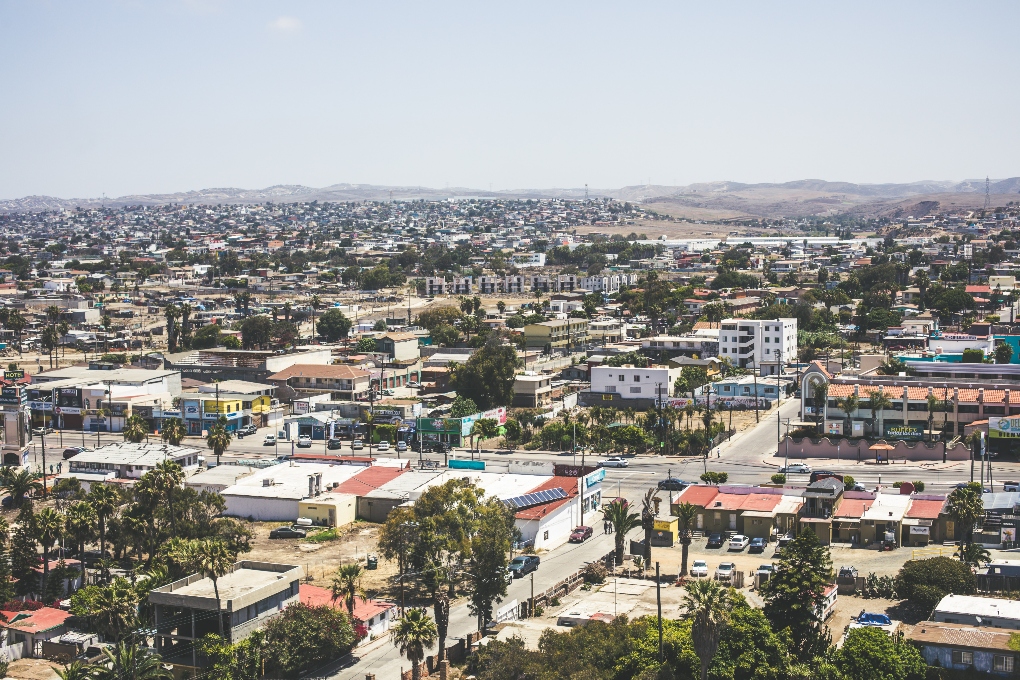
Is It Safe to Walk Around Rosarito?
For the most part, yes it’s safe to walk around Rosarito . I would NOT recommend walking around Rosarito alone or at night.
During the day we would walk from our accommodation down to the beach and surrounding restaurants and felt completely safe. We would walk around the main beach town area in groups at night but would take a taxi from the town to our accommodation after dark.
Is Rosarito Safe at Night?
Rosarito is fairly safe at night. As I mentioned above, I recommend staying in the main beach town areas and not walking through the city streets at night , especially on your own.
The main town area is full of bars and eateries that are well-populated and mostly well-lit. Use common sense and caution , watch your drinks, and don’t overindulge and you will be able to safely enjoy the nightlife in Rosarito.
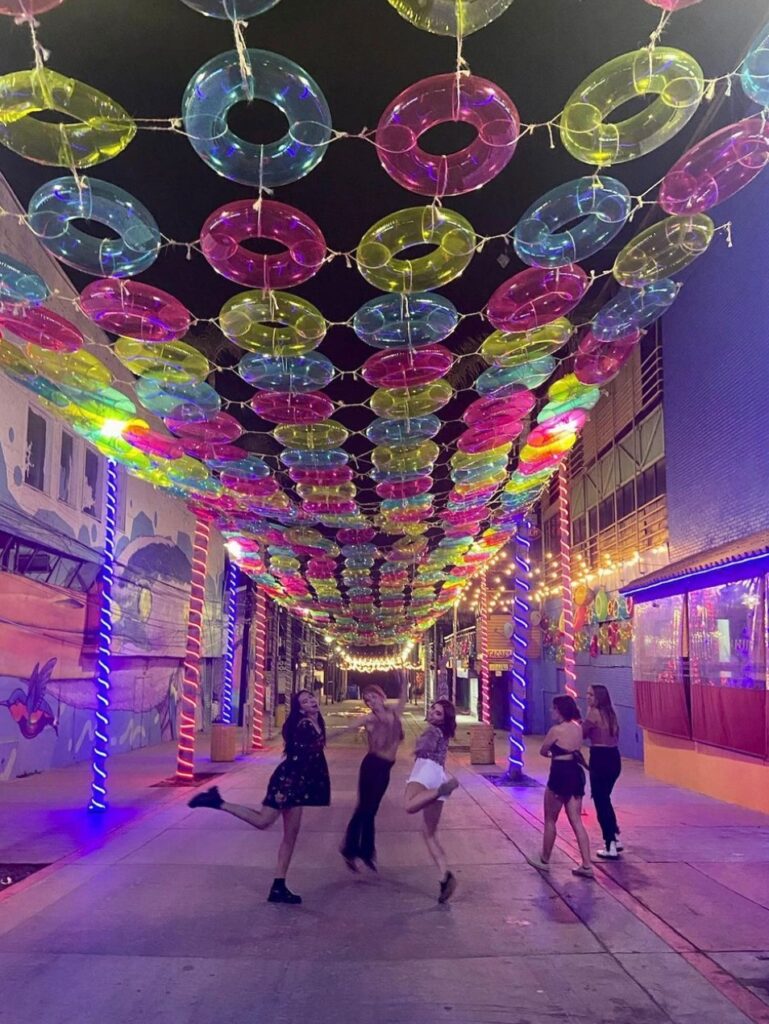
Is Rosarito Safe for Solo Travel?
I wouldn’t recommend Rosarito for solo travel. It’s generally considered safe for solo travel but it’s not somewhere that would be very enjoyable or exceptionally safe to be there on your own, especially if you present as a woman.
It’s best to enjoy Rosarito with a partner or group of people.
❗️ Some of the best things to do in Rosarito include: ✔️ Valle de Guadalupe Wine Tour ✔️ ATV Ride Tour ✔️ Horse Ride On Rosarito Beaches
Is Rosarito Safe for Female Travelers?
Rosarito is safe for female travelers in a group . I do not recommend solo female travel in Rosarito and highly encourage traveling with at least one male-presenting companion.
While a group of exclusively women can have a safe and enjoyable experience, you may experience more verbal harassment and it’s possible people may try to take advantage of you.
The few times I visited Rosarito we had at least one to two guys in our group and felt much safer that way and fortunately never ran into any problems.

Is Rosarito Safe to Live?
There is a growing population of U.S. expats comfortably and safely living in Rosarito, the majority of whom are older retired people. There are safer neighborhoods than others , so you will need to do your research and consult with local real estate agents.
Is Rosarito Kid Friendly?
Rosarito can be kid-friendly, yes. I don’t recommend going during spring break or the popular Baja Beach Fest! Otherwise, you will be able to enjoy your time with kids in Rosarito by playing on the beaches, hiking, renting ATVs, or riding horses.
👉🏼 TIP: The Rosarito Beach Hotel is recommended for families. It has a kid-friendly pool, plenty of activities and rentals, outdoor play equipment, and offers kids’ meals.
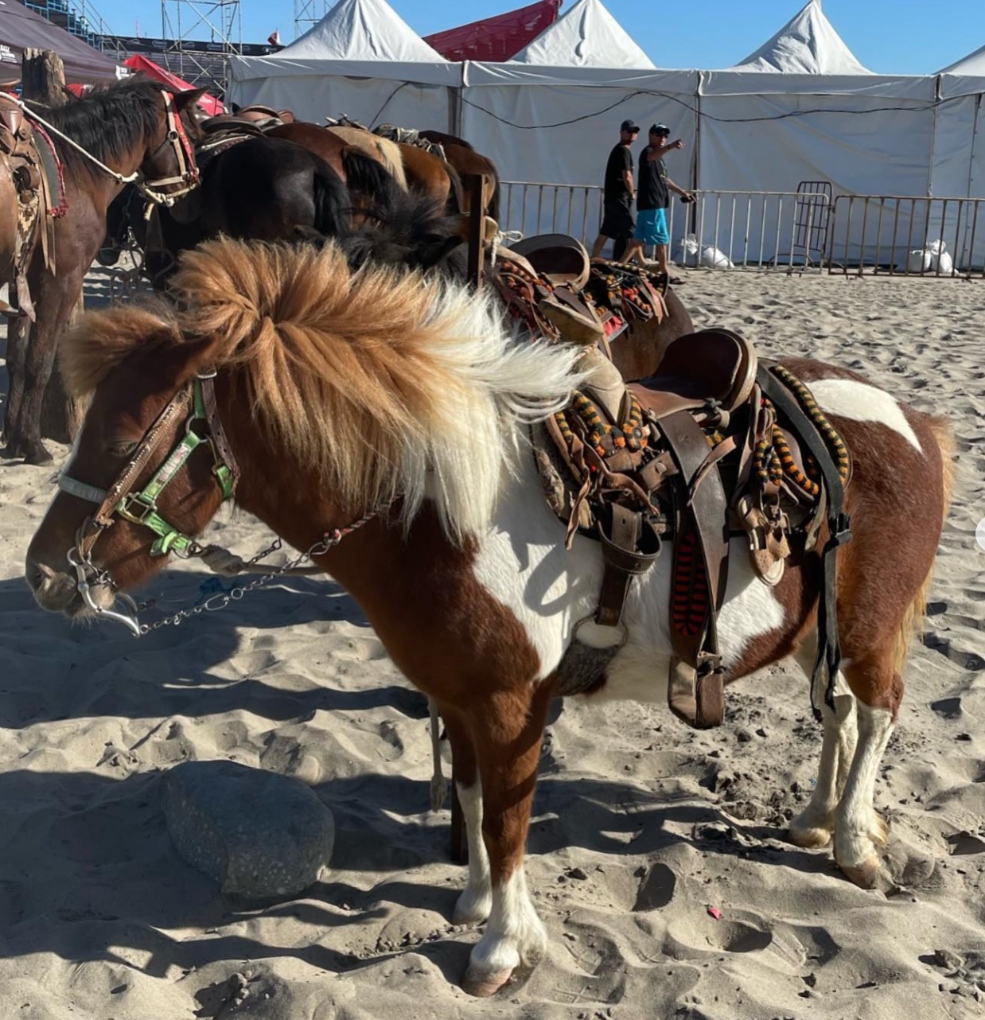
Can You Drink the Water in Rosarito?
While the water supply in Tijuana and Rosarito is sourced from the Colorado River, there is concern with the state of the water distribution pipes. To play it safe, it’s best to bring or buy bottled drinking water for personal consumption.
For personal hygiene purposes such as brushing your teeth, using tap water is generally considered safe.
Can You Swim in Rosarito Beaches?
Yes, you can swim on the beaches in Rosarito. The beaches in Rosarito are generally safe for swimming , but it’s important to be mindful of ocean conditions and any posted warnings. I found that some beaches seemed cleaner than others , for example, I would probably move away from the downtown area where parties happen on the beach for swimming.
Pay attention to local signage as well and check for information on strong currents or rip tides . As with any beach, it’s advisable to prioritize safety, especially if you are not familiar with the specific conditions of the area.
Do People Speak English in Rosarito Mexico?
Yes, many people speak English in Rosarito, especially in the tourist areas. However, speaking Spanish will get you a lot further as there are still plenty of people who do not speak English.
U.S. dollars are generally accepted and most major restaurants, shops, and hotels take credit cards.

Driving in Rosarito
Many people who visit Rosarito tend to drive down from southern California (some will rent a car in San Diego ). Driving in Rosarito is fairly safe, so long as you stay on major highways and roads.
Also, pay extra attention ! Some of the roads may not be in great condition and between road signs being in Spanish and traffic, there will be plenty to distract you.
There may be occasional police checkpoints , where the driver will be asked to show identification and vehicle documentation.
Adhere to traffic rules, be prepared for occasional toll booths on highways , and make sure to fuel up before longer journeys as gas stations may not be as frequent in certain areas.
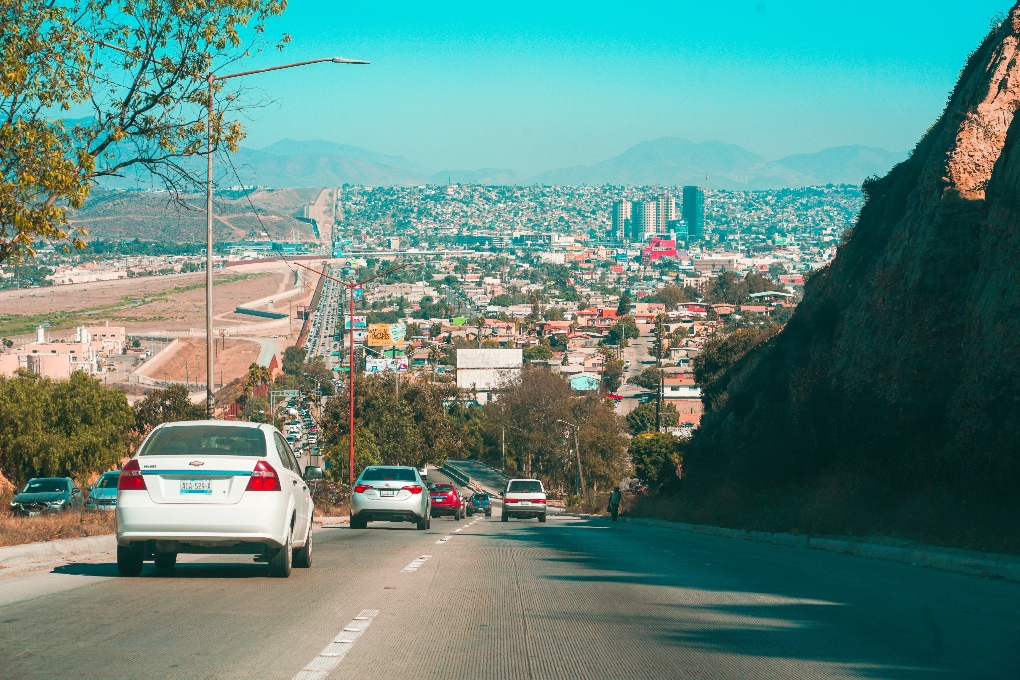
SOMETHING TO KNOW… Unfortunately, the police can be corrupt in Rosarito. Sometimes, drivers in Tijuana, Rosarito Beach, and Ensenada might get pulled over for an alleged infraction and be given the option to pay a fine either at the police station or immediately on the spot.
According to many experienced Baja travelers, it’s advised not to argue or make an on-the-spot payment. Instead, they suggest the most effective response is to request a written citation and agree to settle the matter at the police station or through mail (or even challenge it if needed).
Need a Trusted Car Rental Company?
DiscoverCars is my go-to for me, my family, and my clients when traveling. They pull the best rates across leading rental companies to save you time and money.
Is It Safe to Take My Car to Rosarito?
Yes, it’s fairly safe to take your car to Rosarito. There have been cases of car theft and burglary but the risk is lower in tourist areas and if you are parking at a hotel.

Car Insurance in Mexico
If you plan to drive in Mexico, you have to obtain Mexican auto insurance, as your U.S. car insurance alone does not meet the requirements of Mexican Federal Liability Law.
To comply with this law, you must purchase a Mexican liability insurance policy from a licensed Mexican insurance provider or a U.S. company that works with Mexican insurers.
Various policies are available to accommodate different durations of stay ; for instance, both Allstate and Geico offer Mexican car insurance policies covering trips from one day up to one year.
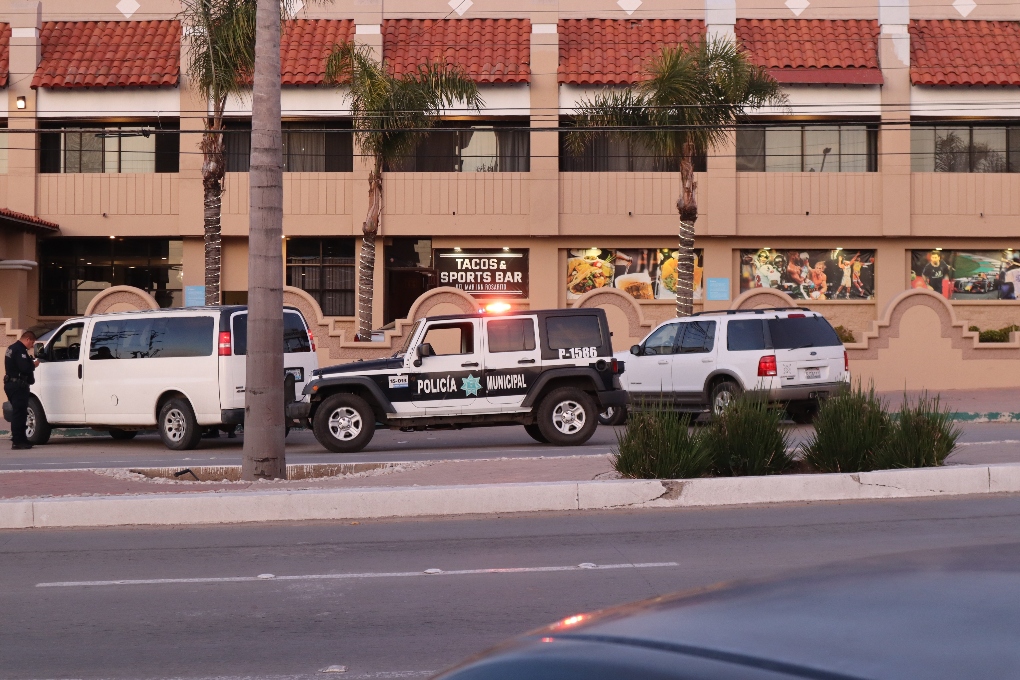
Is It Safe to Drive From San Diego to Rosarito?
Yes, driving from San Diego to Rosarito is generally considered safe, and many travelers make this journey without encountering major issues. If you are a U.S. citizen, you will likely fly over the border to Mexico but end up in a long line (it’s taken me more than 3 hours in the past) to return to the U.S.
Plan accordingly and be prepared when driving over the border and you should have a safe and easy trip.
What to Know About Crossing the Border Into Tijuana
Crossing the U.S.-Mexico border at San Diego and Tijuana requires awareness of several important factors. Here are a few things to be prepared for:
- Passport and ID: Have a valid passport or other accepted identification ready. It’s crucial for both entry into Mexico and re-entry into the United States.
- Visa Requirements: Check if you need a visa to enter Mexico based on your nationality. U.S. citizens typically do not need a visa for short visits, but longer stays may require one.
- Vehicle Documentation: If driving, have your vehicle registration and, if applicable, a temporary import permit for your vehicle. Mexican auto insurance is also required.
- Know Customs Regulations: Be aware of items prohibited for import or export, including agriculture and certain quantities of alcohol and tobacco.
- Traveling with Pets: If bringing pets, ensure you have the required documentation, including proof of required vaccinations.
- Lane Choices: Choose the appropriate lane for your type of travel – whether it’s for pedestrians, vehicles, or commercial purposes.
- Global Entry and SENTRI Programs: If you’re a member of the Global Entry or SENTRI programs, use the designated lanes for expedited processing.
- Border Crossing Hours: Be mindful of the operating hours of the border crossing, as they can vary. Plan your travel accordingly.
- Traffic Conditions: Check real-time traffic conditions and border wait times to better plan your crossing.
- Currency Exchange: Have some Mexican pesos on hand for immediate expenses.
- Stay Informed: Keep up to date with any travel advisories or border-related news for a smoother experience.
Always refer to official government sources and guidelines for the most accurate and current information before crossing the U.S.-Mexico border.
How Far Is Rosarito From the Mexican Border?
Rosarito is located about 10 to 15 miles south of the U.S.-Mexico border. The exact distance can vary depending on your specific starting point at the border, as there are different crossing points.
The most common border crossing near San Diego is the San Ysidro Port of Entry . From there, it’s a relatively short drive down the Mexican Federal Highway 1 (Carretera Federal 1) to reach Rosarito.
It typically takes about 20 to 30 minutes to get from the border to Rosarito, depending on traffic conditions and the specific location of your destination within Rosarito.
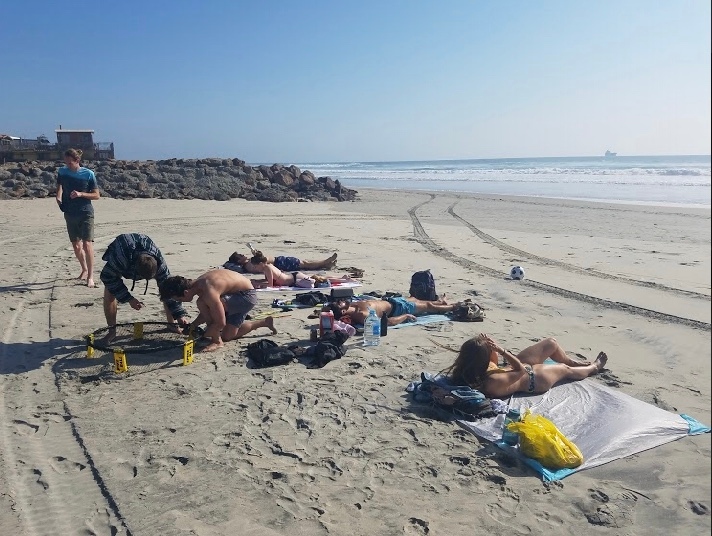
Can I Go to Rosarito Without a Passport?
No, typically you need a passport to enter Mexico . There may be other acceptable forms of identification depending on your nationality and situation. Check with an official government site to confirm what identification you need to enter Mexico.
Extra Safety Tips and Precautions
Rosarito is a fairly safe location to visit, though it’s always a good idea to prioritize safety. In addition to the general safety tips, here are some extra precautions you can take:
- Emergency Contacts: Save local emergency contact numbers in your phone and familiarize yourself with the location of the nearest hospital or medical facility.
- Local Customs and Etiquette: Respect local customs and cultural norms to avoid unintentional misunderstandings.
- Cash and Valuables: Carry only necessary cash and keep valuables secure. Use hotel safes for passports, important documents, and extra cash.
- Language Basics: Learn some basic Spanish phrases. While many people in tourist areas may speak English, locals appreciate it when visitors make an effort to communicate in their language.
- Public Transportation Safety: If using public transportation, be cautious with personal belongings and stay alert to your surroundings.
- Travel Insurance: Consider purchasing travel insurance that covers medical emergencies, trip cancellations, and other unforeseen events.
- Weather Awareness: Be aware of the local weather conditions and plan accordingly. Rosarito experiences a Mediterranean climate, but weather conditions can vary.
- Food and Water Safety: While trying local cuisine, choose reputable eateries to minimize the risk of foodborne illnesses. Stick to bottled water for drinking.
- Street Vendors: Be cautious when interacting with street vendors. While many are legitimate, be wary of scams, and negotiate prices respectfully.
- Transportation Safety: If using taxis, opt for official taxi services and agree on the fare before starting your journey. If renting a car, be familiar with local traffic rules.
- Local Advice: Ask locals or hotel staff for recommendations on safe areas and places to visit. They often provide valuable insights.
- Photocopies of Documents: Make photocopies of important documents, including your passport and ID, and keep them in a separate location from the originals.
Always stay informed about the current local news and adhere to any travel advisories. Use common sense and trust your instincts and you will no doubt have a safe and enjoyable visit to Rosarito!
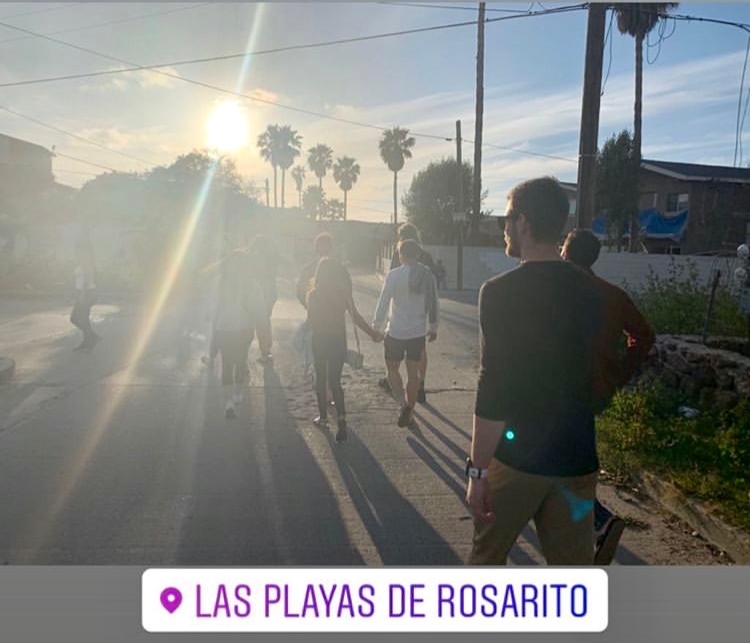
Safe Places to Stay in Rosarito
Best all around: rosarito beach hotel ★★★.
🏆 Rating: 4.5/5 | 📍 Zona Centro | 💲 🏨 Check Availability on Booking.com | Expedia | Hotel s .com

A LITTLE BIT EXTRA: Vista Hermosa Resort ★★★★
🏆 Rating: 4.5/5 | 📍 Ensenada | 💲💲 🏨 Check Availability on Booking.com
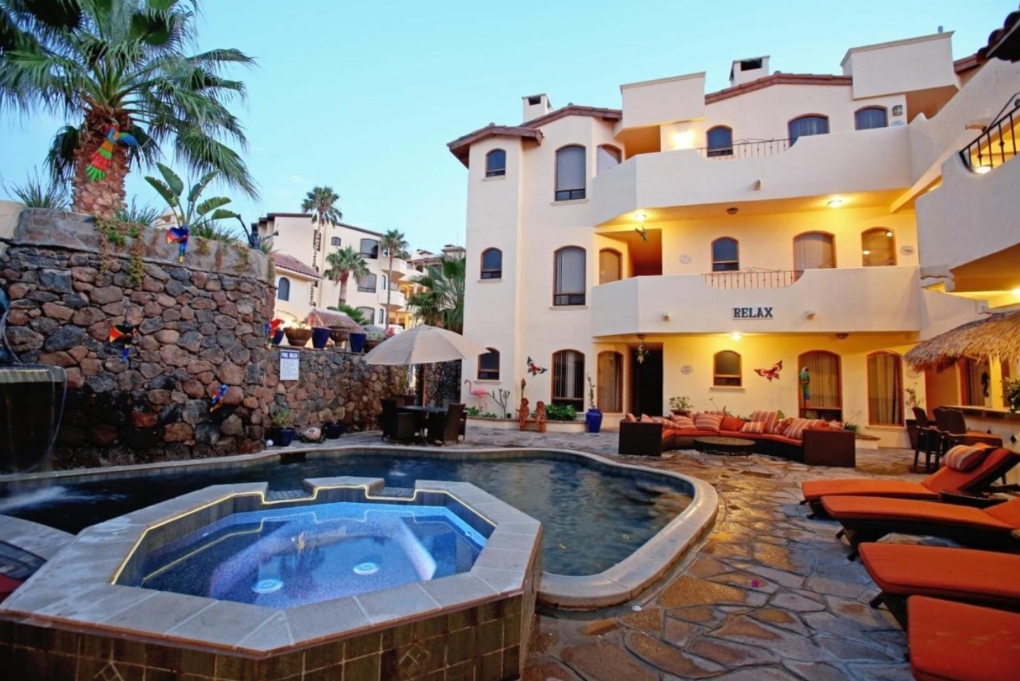
SO, Is Rosarito Safe?
While Rosarito is a popular destination with beautiful beaches and exciting cultural offerings, there are a few safety precautions you should take . Adhere to travel advisories, have proper documentation, purchase Mexican auto insurance, follow local guidelines, and be aware of your surroundings.
Try to travel in a group setting and don’t wander around the city alone at night . By staying informed on any potential risks and respecting the local environment, you can enjoy the charm of Rosarito while minimizing any potential risks.
Related Posts: Top 15 Safest Cities in Los Angeles Is Santa Barbara Safe?
Janelle Axton is a travel consultant and owner of Make the Trip Matter, a service dedicated to helping people create a lifestyle around frequent travel and extended time abroad. She grew up in California and spent time living abroad in Ireland in addition to traveling to over 25 countries.
Similar Posts
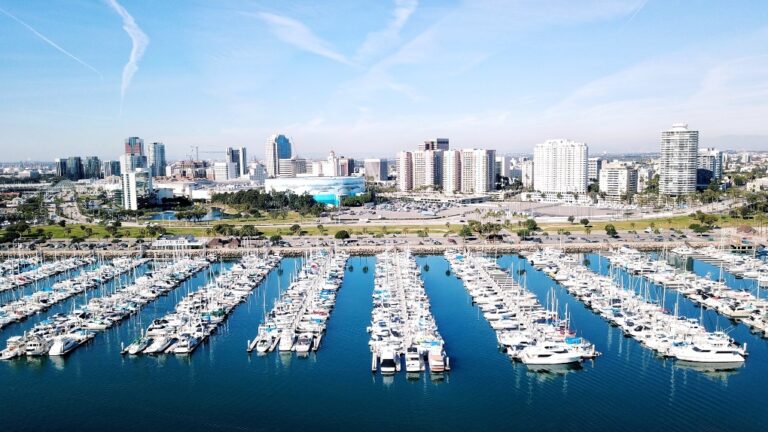
Is Long Beach Worth Visiting? 43 Pros and Cons to Consider
- Today's news
- Reviews and deals
- Climate change
- 2024 election
- Fall allergies
- Health news
- Mental health
- Sexual health
- Family health
- So mini ways
- Unapologetically
- Buying guides
Entertainment
- How to Watch
- My watchlist
- Stock market
- Biden economy
- Personal finance
- Stocks: most active
- Stocks: gainers
- Stocks: losers
- Trending tickers
- World indices
- US Treasury bonds
- Top mutual funds
- Highest open interest
- Highest implied volatility
- Currency converter
- Basic materials
- Communication services
- Consumer cyclical
- Consumer defensive
- Financial services
- Industrials
- Real estate
- Mutual funds
- Credit cards
- Balance transfer cards
- Cash back cards
- Rewards cards
- Travel cards
- Online checking
- High-yield savings
- Money market
- Home equity loan
- Personal loans
- Student loans
- Options pit
- Fantasy football
- Pro Pick 'Em
- College Pick 'Em
- Fantasy baseball
- Fantasy hockey
- Fantasy basketball
- Download the app
- Daily fantasy
- Scores and schedules
- GameChannel
- World Baseball Classic
- Premier League
- CONCACAF League
- Champions League
- Motorsports
- Horse racing
- Newsletters
New on Yahoo
- Privacy Dashboard
Is Baja safe? Should you drive? Things to know before you go
Homework is vital before travel in Baja California, especially if you're considering a road trip.
Questions over Americans' safety in Mexico have been underlined by the mid-January death of Orange County public defender Elliot Blair, who suffered unexplained head injuries at a Rosarito Beach resort; and by the early March shooting deaths of two Americans and one Mexican in an apparently botched kidnapping in Matamoros, 1,570 miles east of Tijuana.
Here's a rundown of sources I consulted and factors I weighed before my eight-day drive to Cabo San Lucas in early January.
Read more: Joshua Tree with beaches and taquerias? No, just an epic Baja road trip
Overall safety
The U.S. State Department classifies Mexico's states in four ways for would-be travelers. The most severe advice is "do not travel," which currently covers the states of Colima, Guerrero, Michoacán, Sinaloa, Zacatecas and Tamaulipas (which includes Matamoros) on Mexico's east coast.
The state of Baja California is in the second most severe category — "reconsider travel" — because of crime and kidnapping, especially homicides in the non-tourist areas of Tijuana. The State Department urges those who do travel to remain on main highways. The State Department also puts the states of Chihuahua, Durango, Jalisco, Morelos, Sonora and Guanajuato (the latter includes San Miguel de Allende) in that category.
The state of Baja California Sur, which begins about 450 miles south of the U.S. border, is in the State Department's less extreme "exercise increased caution" category.
Canada's government urges Canadians to "exercise a high degree of caution" in Mexico.
The website elcri.men , which summarizes and analyzes Mexican crime statistics, said Baja California had the third-highest homicide rate among Mexican states in 2022, in large part because of Tijuana. By the same measure, Baja California Sur had the fourth-lowest rate among Mexican states.
If studying up on conditions in the Baja peninsula makes you or your companions uncomfortable, stay away. Even if nothing goes wrong, feeling unsafe can ruin a trip. (I didn't drive the peninsula with my family; I drove it with two people who felt comfortable with it.)
Driving in Baja
In addition to a valid driver's license, Mexican law requires anyone driving into the country to have Mexico-specific liability insurance.
Many companies specialize in insurance for Americans driving south, offering liability policies that often cost from $10 to $40 per day. More extensive policies can double the cost but may give you more peace of mind. Vendors include AAA , Allstate , Bajabound.com , Baja-mex.com , Discoverbaja.com, Geico and Mexpro.com .
Read more: 25 restaurants, hotels and hidden wonders along the Baja Highway
All authorities agree that driving at night in rural Baja is dangerous because of the many roaming livestock. In addition, drivers should be ready for long, narrow stretches of two-lane blacktop without shoulders or turnouts.
Two other things: Drunk driving is just as illegal in Baja California and Baja California Sur as it is in California. Also, it’s illegal to enter Mexico with a gun without written authorization in advance from Mexican authorities.
More driving tips:
Occasionally drivers in Tijuana, Rosarito Beach and Ensenada are pulled over after an alleged infraction and offered a chance to pay a fine at the police station or on the spot. Don't argue or pay on the spot, many Baja veterans say. Instead, they say, the best response is to ask for a written citation and agree to pay the citation at the police station or by mail (or challenge it) . An additional option: calling Baja California's bilingual Tourist Assistance Hotline (078, around the clock) from any cellphone with roaming privileges in Baja.
Police checkpoints are placed every few hundred miles along the peninsula. Officers typically ask drivers where they have come from and where they're going. We went through about six checkpoints, the conversation never lasting more than one or two minutes.
Many roads to scenic spots are dirt, not blacktop, and best handled by vehicles with four-wheel drive and high clearance.
The peninsula is so big that most travelers choose to explore selected portions. Many travelers fly to Los Cabos, La Paz or Loreto, rent a car at the airport, drive a loop and return the car where they began. Picking up and dropping off a rental car in different locations is possible in Baja but can double the cost. Topoterra is the only company I could find that would rent me a vehicle in San Diego and let me drop it off (for a fee) in Los Cabos.
In Baja (and all of Mexico) distances are measured in kilometers, gas is sold by the liter (and usually pumped by an attendant) and speed bumps ( topes ) pop up in some urban areas. Gas prices in Baja have lately fluctuated around 22 pesos per liter (about $4.50 per gallon) and are often cheaper than in California.
Beyond the Pemex station in El Rosario there isn't another gas station until Villa Jesús María (just north of Guerrero Negro), 200 miles south.
More detailed advice is offered by the Automobile Club of Southern California , Bajabound, AllAboutBaja.com and other sources.
Communication and laws
Southbound travelers must show a passport or passport card and are required to get an FMM tourist permit online or in person from Mexican immigration officials at the border. For trips of more than seven days, the cost is about $36 (687 pesos).
The more Spanish you speak, the better. If you're hoping to camp on ranch land, the best preparation may be hiring a local guide who can help get you permission.
To ease web access and communication with the U.S., many regular winter visitors to Baja use Starlink , which for $599 up front and $135 monthly allows a road-tripper or RV driver to access the internet from just about anywhere in Baja.
Sign up for L.A. Goes Out, a weekly newsletter about exploring and experiencing Los Angeles from the L.A. Times.
This story originally appeared in Los Angeles Times .
Recommended Stories
The fdic change that leaves wealthy bank depositors with less protection.
Affluent Americans may want to double-check how much of their bank deposits are protected by government-backed insurance. The rules governing trust accounts just changed.
Former NBA guard Darius Morris dies at 33
Former NBA guard Darius Morris has died at the age of 33. He played for five teams during his four NBA seasons. Morris played college basketball at Michigan.
Timberwolves coach Chris Finch calls Jamal Murray's heat-pack toss on court 'inexcusable and dangerous'
Murray made a bad night on the court worse during a moment of frustration on the bench.
Former House Speaker Paul Ryan says he’s not voting for Trump : 'Character is too important'
Ryan says he would be writing in a Republican candidate instead of voting for Donald Trump.
Post-draft NFL fantasy power rankings: Offenses we love, like and want to stay away from
With free agency and the draft behind us, what 32 teams look like today will likely be what they look like Week 1 and beyond for the 2024 season. Matt Harmon and Scott Pianowski reveal the post-draft fantasy power rankings. The duo break down the rankings in six tiers: Elite offensive ecosystems, teams on the cusp of being complete mixed bag ecosystems, offensive ecosystems with something to prove, offenses that could go either way, and offenses that are best to stay away from in fantasy.
Fantasy Baseball Waiver Wire: Jonny DeLuca leads intriguing pickups
Fantasy baseball analyst Andy Behrens offers up a fresh batch of midweek pickups to consider, led by a former Dodgers prospect.
Ranking the best situations for the rookie quarterbacks: Start with Michael Penix in Atlanta at No. 1
It’s key to note that we’re not saying the “best team” or “best roster.” Instead, we’re talking about the best confluence of factors that can outline a path for survival and then success.
Cardinals lose C Willson Contreras after left arm fractured by J.D. Martinez's swing
The Cardinals' nightmare season continues.
These 3 stocks are poised to benefit from the massive energy transition
The energy transition will benefit companies providing electrical needs for surging demand. Analysts point to these three stocks as a Buy.
Bulls' Lonzo Ball picks up $21.4 million option for 2024-25 season amid knee concerns
Ball hasn't played since the 2021-22 season.

Is Baja California Safe? Understanding Baja California Crime Rates and Travel Concerns
Is Baja California safe? With stunning desert landscapes, beautiful beaches, vibrant cities, and excellent cuisine and wine, Baja California has become an alluring destination for travelers seeking vibrant experiences. From the Valle de Guadalupe’s wine country to the stunning beaches, Baja entices visitors with its natural beauty and cultural attractions.
However, according to the U.S. State Department, Baja California falls under the second-highest severity level , urging travelers to “reconsider travel” due to crime and kidnapping. By being aware of the risks, using caution in troubled areas, and focusing on safer tourist destinations, it’s possible to experience Baja’s Baja’slluring sights safely.
So, keep reading to uncover Baja crime rating, the safest and the most dangerous neighborhoods. Moreover, learn risk when you driving a car, using a taxi, or bus. And know 9 essential tips for making the most of your Baja dreams without compromising personal safety. Let’s get it started!
Is Baja California Safe to Visit in 2024 – Key Takeaways
- Cartel Violence Risk – MODERATE (in tourist zones)
- Kidnappings Risk – MODERATE
- Fraud Risk – HIGH
- Petty Theft Risk – MODERATE
- Level of Danger When Driving – MODERATE
- Bad Areas – Tijuana, Tecate, Mexicali
- Safe Places – Ensenada, San Felipe
- Number of crimes in the Baja California state compared to other states in Mexico:
All material presented in this article is based on official Mexican and U.S. government data and recommendations, statistics from reputable publications, and local news reports. The information is intended for general guidance purposes only and does not constitute professional travel advice.
Our danger level study is based on:
- Mexican government statistics National incidents of crime for 2023, January 2024.
- US Government travel advisory levels and precautions in 2024.
- US Government travel map in 2024.
- Risk map analysis of the Mexico Cartel War in 2023.
- Elcri map of most violent tourist destinations and homicides map upon on the Mexican Justice System and the INEGI in 2023 and 2024.
- Numbeo’s statistics are derived from the real experiences of travelers and residents in 2024.
- News summaries from local presses as well as authoritative resources from Mexico and the United States in 2023 and 2024. In some cases, these data are taken for an earlier period if the type of crime or hazard is not present in 2023 and 2024.
Each risk level will be indicated by a different color red for high risk, orange for medium risk, and green for low risk.
Risk Levels Meaning:
- High Risk : High number of offenses in the last year, skyrocketing incidents, crime rate higher than the Mexican average. Regarding Numbeo travelers express fear and concern.
- Medium Risk : The amount of infractions over the past year is close to the national average. Visitors’ worries and concerns are at a moderate level according to Numbeo.
- Low Risk : Low number of prior year offenses, there has been a decrease in incidents, and crime is lower than the Mexican average. Travelers feel safe according to Numbeo statistics.
Is Baja Mexico Safe? Crime in Baja Mexico
Blessed with beautiful beaches, vibrant cities, and excellent cuisine, Baja California has become a popular tourist destination in Mexico. From swimming with whale sharks in La Paz to enjoying Valle de Guadalupe’s acclaimed wines, Baja lures visitors with its natural landscapes and cultural attractions.
However, Baja has witnessed rising safety issues. The Mexican government released an official report documenting over 121,065 crime cases in Baja, California. Out of the total, 9,908 incidents happened in December 2023. In January 2024 this value was 9,929 . Another report by the National Network of Observatories using Mexican Justice System data shows Baja California State suffered a total of 29 homicides and femicides in December 2023 alone.

While parts of the state remain risky, it’s still possible for travelers to safely experience Baja’s beauty by exercising caution, avoiding trouble spots, and focusing on safer tourist areas. Let me shed light on common crimes to watch for in the state. By being aware and vigilant, you can still fulfill your Baja-bound dreams. Let’s dive further:
Cartel Violence Risk – Moderate in Tourist Zones
Behind its beautiful façade of beaches and vineyards, Baja California masks an ongoing battle between powerful drug cartels. The Sinaloa Cartel and Jalisco New Generation Cartel continue to clash over control of lucrative drug smuggling and other illicit enterprises in the state. This has fueled outbreaks of cartel violence, including broad daylight shootouts, homicides, and kidnappings that threaten locals and travelers alike.

While cartel violence has plagued parts of Mexico City, the risk in Baja California’s tourist zones remains moderate, according to official data in The Tweek. The state registered 2,618 homicides in 2023, some of which were likely linked to cartel and gang activity. The Mexican government has bolstered security to protect visitors, including:
- Deploying more National Guard troops across Baja California.
- Partnering with the UN and Interpol on new enforcement strategies.
- Enacting stricter anti-organized crime laws with longer sentences.

Kidnapping Risk – Moderate
Despite concerns elsewhere in mainland Mexico, the risk of kidnapping remains relatively moderate in Baja California’s tourist areas. In 2023, there were only 10 reported kidnappings in Baja California. For comparison in 2022 according to news outlets KETX and FOX 51 , only in Tijuana were registered 60 kidnappings. Primarily they were targeting locals rather than foreign visitors.
The popular travel destinations of Cabo San Lucas, La Paz, and Locations near border crossings saw few to no abductions. However, caution is still advised near the US border. The State Department warns travelers to avoid certain border regions.

Fraud Risk – High
Fraud poses a major risk in Baja California, with 3,753 reported incidents in 2023. The most common schemes involve:
- Trust abuse: There were 651 reported incidents of trust abuse in 2023. This involves financial scams or manipulation by someone the victim trusts. Common schemes include romance fraud, fraudulent investments, and identity theft by “friends.”
- Extortion: 106 extortion cases were reported last year. This involves threats to obtain money or information. Phone extortion scams are common, with criminals impersonating officials demanding payment.
- Other popular frauds: Additional street frauds involve rigged games, money exchange manipulation, and hotel booking schemes.
Petty Theft Risk – Moderate
Petty theft and property crimes pose a moderate risk:

- A total of 33,458 were reported in beach camping areas in 2023.
- Home robberies occurred 3,215 times, though the majority (2,998) involved no violence.
- There were 11,563 motor vehicle thefts, mostly (10,783) car thefts.
- Violent robbery totaled 1,193 incidents.
Exercising vigilance, securing belongings, and avoiding ostentatious displays of wealth help reduce risks. Overall, Baja’s main tourist zones remain relatively safe if smart precautions are taken.
Baja California Safety: Avoiding Bad Areas
The best way to explore a city or state is to know the best areas to land and where to avoid visiting. The northern region of Baja bordered by San Diego should be avoided by all means. Areas like Tijuana experience significant criminal incidents ranging from drug cartels to gang-related violence.
While the Mexican government has intensified efforts to combat criminal activity in the vicinity, it remains a hazardous place and you should exercise caution. Discover more places that are to be avoided and the reasons behind them.

Tijuana is deemed unsafe for visitors due to its high crime level, notably one of the world’s highest homicide rates, largely linked to cartel operations. Regarding Statista a murder rate of 105.15 per 100,000 people in 2023. As for Elcri.men homicides in Tijuana were 1651 to 1,854,041 people, with a crime rate of 89, from February 2023 to January 2024.
Though violence tends to target specific demographics and is concentrated in particular areas, tourists may still encounter incidents of petty theft, robbery, and assault.

Just like Tijuana, Tecate is also a border town renowned for its bear. Public Security in Baja California announced that there was a 146.9% increase in intentional homicides in the city of Tecate in 2022. From February 2023 – January 2024 a crime rating of 90.6 and 107 homidicies to 118,126 people.
This shows that this region has a high crime, therefore, it’s advisable to observe safety. To add to that, the Centers for Disease Control and Prevention (CDC) issued a warning in December 2023 against traveling to Tecate due to the risks of contracting Rocky Mountain spotted fever (RMSF).
3. Mexicali
Mexicali has a high crime rate, with only 6.96% of the population having confidence in the state police. The primary safety concerns in Mexicali pertain to petty crime and scams that target tourists. Furthermore, Mexicali recorded a total of 2996 complaints for December 2023. Out of those complaints, 428 were for violence and 316 for property damage.
As for homicides from February 2023 to January 2024, a crime rating in Mexicali was low at 15,4, 175 cases to 1,133,409 people.
How Dangerous Is It to Drive in Baja California? – Moderate
Driving alone in Baja California poses safety risks due to cartel violence and road hazards. Regarding the US Department of State, the region contains major drug trafficking routes , making it prone to cartel activity and banditry. According to the latest government crime report, the overall risk index for vehicles is moderate at around.

However, some roads are considered safer for travel, such as:
- Mexican Federal Highway 1 – runs along the entire Pacific coast of the Baja California peninsula.
- Mexican Federal Highway 1D – a toll highway that runs parallel to Highway 1, but with less traffic.
- Mexican Highway 3 – connects the cities of Ensenada and San Felipe on the east coast.
- Mexican Federal Highway 5 – runs through the Mexicali Valley to the southern tip of the Peninsula.
Army patrols and ground checkpoints are present on these major federal highways to increase the safety of travel along them.
Safe Places to Visit in Baja California
Despite the Baja Peninsula having high crime rates, some places are safe to visit, especially in the southern tip areas. These renowned spots include Ensenada and San Felipe, all recognized as safe places to explore. Whether you are planning for a honeymoon or a family getaway, they present themselves as beautiful and enjoyable safety destinations. Keep scrolling to discover why they are considered secure:

1. Ensenada
Located in the northern part of Baja California, Ensenada is known for its beautiful coastline, wineries, and outdoor activities. It has a low crime rate index of 39.52 , according to Numbeo, meaning it is generally safe for travelers compared to other cities in the region.
Ensenada is considered secure to visit because of good safety measures, infrastructure improvements, and intolerance of crime. This Pacific coast destination has seen a recent booking rise , highlighting its status as a low-risk and popular tourist location. Popular attractions include La Bufadora blowho le and the wine region of Guadalupe Valley.
2. San Felipe
Major investments in tourism security help keep risks low. On Baja California’s eastern coast, San Felipe typically reports a low incidence of petty crimes. According to the latest data regarding DATA MEXICO:
- 12.4% of the population claimed high confidence in the state police, while 14.7% have high distrust.
- 16.9% expressed high trust in the Public Ministry and State Prosecutors.
- 25.3% have high confidence in the Federal Police.
This indicates relatively strong public trust in law enforcement. Last year saw no reported kidnappings or homicides related to organized crime. With under 100 total crimes, San Felipe is very safe for Baja and offers peace of mind with gorgeous beaches, fishing, and water sports.
Safety Tips for Baja California Mexico
Baja California (not to be confused with Baja California Sur) is not one of the safest states to live in Mexico. And to be assured of your safety, you need to take into consideration several aspects. Here are some of the tips:
- Purchase Mexico travel insurance before driving across the border. Mexican law requires liability coverage for all foreign vehicles .
- Steer far clear of any drug activity. Cartel violence is confined to border towns like Tijuana, but drug charges carry severe penalties, including a 25-year jail sentence.
- If pulled over, politely ask for the officer’s citation and ID before paying bribes. Call the Tourist Assistance Hotline at 078 for better clarification in case of any doubts.
- Stick to daylight driving. Livestock wandering at night and cartel threats make night travel dangerous.
- Monitor local news and advisories. Social media and outlets like Baja Post provide updates on any incidents of concern.
- Use only regulated taxis or shuttle services. Avoid hitchhiking, which poses kidnapping risks.
- Stay in well-known tourist spots and avoid remote areas without guidance. This reduces risks.
- Keep emergency contacts at the police station and inform loved ones of your itinerary. This allows checking in if trouble arises.
With proper precautions, Baja California offers incredible experiences. Use good judgment; you’ll find warm locals, delicious cuisine, and stunning landscapes to enjoy safely.
Is Baja Mexico safe for tourists?
The U.S. Department insists Baja is unsafe and it’s best to avoid traveling. However, tourist areas like Ensenada, and San Felipe have lower crime rates. Popular beach towns can see petty theft. Border cities like Tijuana and Mexicali have cartel violence risks.
Is Baja a safe place to live?
Living in Baja depends on the location. Coastal cities like Ensenada and San Felipe have good infrastructure and less crime, making them safer. Ensenada has a crime index of 39.52 , making it relatively safe to live in.
Is it safe to drive through Baja California?
It is not safe to drive in Baja and you should take precautions. Avoid remote roads at night due to livestock and banditry risks. Stick to Mexican Federal Highways like 1, 1D, 3, and 5 during the day. Keep doors locked and don’t pick up hitchhikers. Monitor travel warnings for cartel roadblocks or carjackings.
Let’s recap: is Baja California safe for travel? The state has varying risks depending on location. Border towns like Tijuana and Mexicali have high homicide rates tied to cartel violence. Rural roads also pose hazards at night. However, popular family-oriented tourist destinations Ensenada and San Felipe have lower crime rates. Tourism police patrols make them safer.
The U.S. government advises reconsidering travel to Baja, California, due to crime. Avoid isolated areas and northern border regions. Exercise caution at night, especially at gas station. Monitor weather and news to prepare for emergencies. Getting insurance, using registered transportation, and informing others of your itinerary are smart steps. Ultimately, travelers to Baja can stay relatively safe by sticking to recommended locales and proper precautions.

- Before You Go
- Applications
- Baja California Map
- Baja California Mileage Guide
- Baja Road Signs
- Before You Go Checklist
- Border Chart
- Conservation Passports
- Crossing the Border to Mexico
- Driving Directions
- Driving in Mexico
- FMM Tourist Permits
- Local Customs
- Mexican Fishing Licenses
- Mileage Chart
- Nautical Sportfishing FMMs
Personal Safety
- Peso Currency Exchange
- Phone/Internet
- Returning to the U.S.
- Temporary and Permanent Resident Visas
- Temporary Boat Importation
- Travel Resources
- Traveling With Pets
Despite the stories that have been infiltrating U.S. media, Baja is generally a safe place to travel. It is statistically safer than many cities in the U.S. Most of the violence that you hear about in Mexico is related to narcotics trafficking and takes place in border towns. It is important to remember that you’re a visitor in a foreign country though so we recommend taking the following precautions:
- Don’t make yourself a target – flashy electronics, expensive jewelry and irreplaceable items are best left at home. Remove extra credit cards, your social security card and other unnecessary items from your wallet before you go to Mexico.
- Do your driving during daylight hours
- As a general rule, anything that is illegal in the U.S. is illegal in Mexico
- Don’t drink and drive
- It is illegal to drink on the streets or in your car in Mexico.
- Do not do or take drugs to Mexico. You will go to jail.
- Guns and ammunition are not allowed in Mexico.
- Make three copies of your passport, driver’s license, Mexican insurance policy and vehicle registration. Keep one set of copies in your vehicle, one set in your wallet or luggage and one set with a friend or family member at home.
- It’s also a good idea to make copies of any credit cards that you take with you so that you can easily call to cancel them if they are lost or stolen. Leave one copy with a friend or family member at home and have one copy in your wallet or luggage.
- Carrying extra passport photos with you is always a good idea when traveling. If your passport is lost or stolen, you will need a new passport photo in order to get a replacement passport and it can often be difficult to find a place that processes passport photos in another country.
- Register with your country’s consulate before you go. U.S. citizens should register with The Department of State
- Water is safe to drink at the large resorts, hotels and restaurants in the major cities. If you are outside a major city, ask for bottled water or just stick with cerveza.
If you dial 078 in Baja from any public, private or cell phone it will direct you to the tourist assistance hotline. Their bilingual staff can help you out with anything from emergency response to general travel information.
911 will get you emergency services.
U.S. Consulates in Mexico:
Tijuana: Paseo de las Culturas s/n Mesa de Otay Delegación Centenario C.P. 22425 Tijuana, Baja California 664-977-2000
After-hour emergency hotline: 001-619-692-2154
Los Cabos: Tiendas de Palmilla Carretera Transpeninsular Km 27.5 Local B221 San José del Cabo, Baja California Sur, C.P. 23406: Telephone: (624) 143-3566 Fax: (624) 143-6750

7 Cultural places you must see in Tijuana
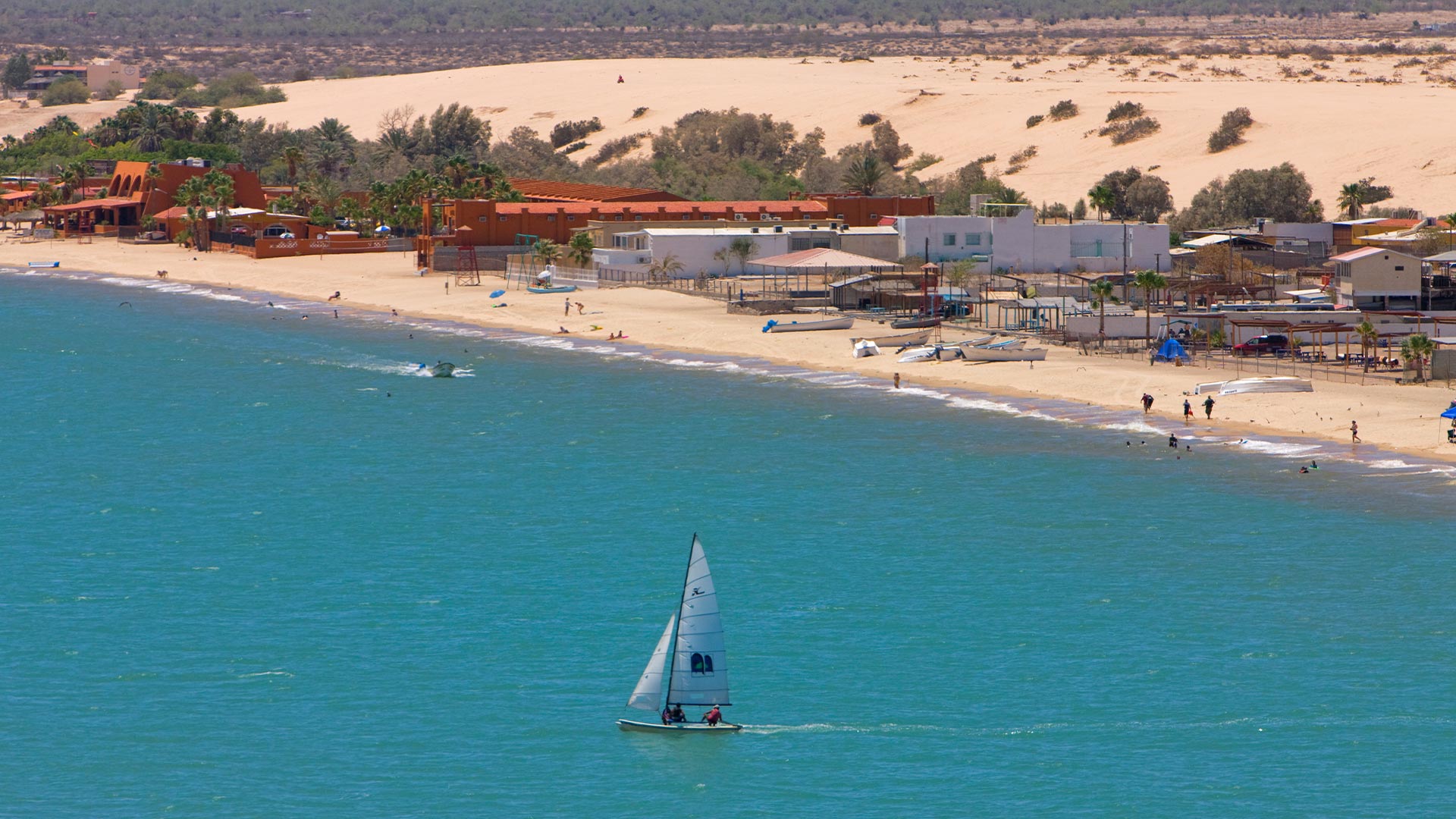
San Felipe, The Jewel of the Sea of Cortes
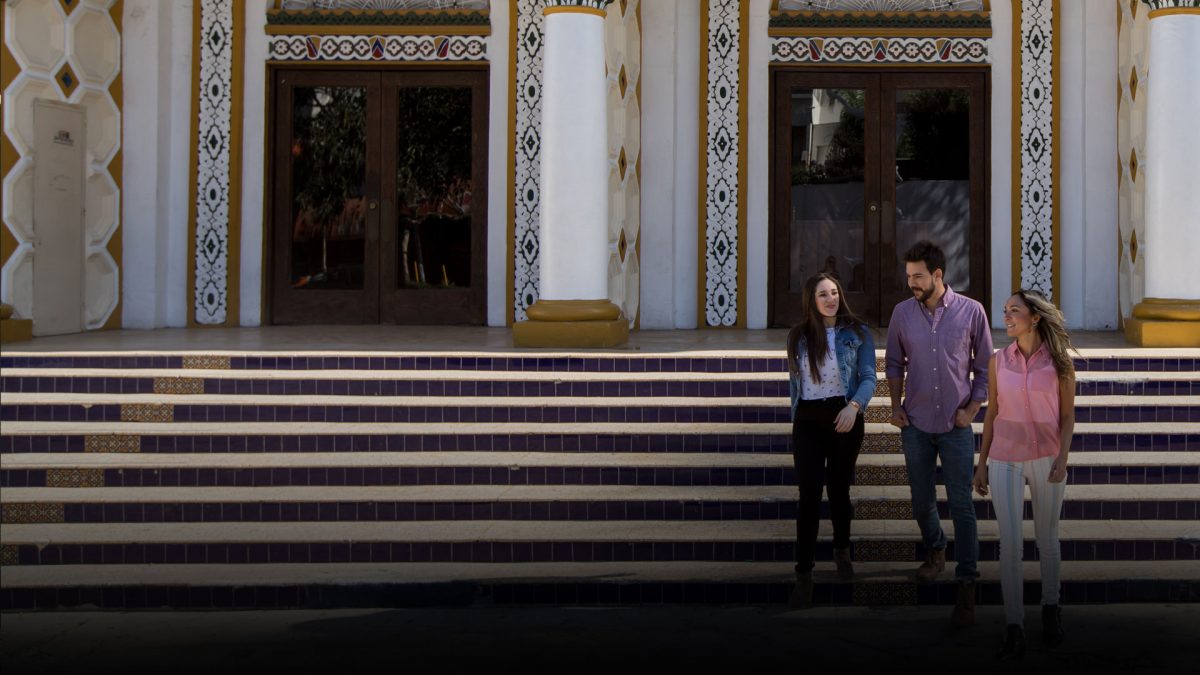
Baja California Awarded “Safe Travels” Stamp from World Travel and Tourism Council for Outstanding Health and Hygiene Protocols

Tijuana, Baja California Oct 5, 2020 - The State of Baja California today announced it has been awarded the Safe Travels Stamp by the World Travel and Tourism Council (WTTC) in recognition of the health and hygiene protocols put in place by the state. This milestone marks one of the many ways Baja California is diligently working to begin safely welcoming visitors back to the region.
Created in collaboration with governments, health experts and industry leaders, the WTTC Safe Travels Stamp offers a way for travelers to distinguish which destinations, businesses and governments are implementing best practices for keeping visitors safe during the COVID-19 pandemic.
“ The health and safety of our visitors is paramount to us, ” said Baja California Secretary of Tourism and Sustainable Economic Development (SEST) Mario Escobedo Carignan . “ Over the past several months, we have worked closely with hotels, restaurants and other tourism service providers in the state to implement the highest sanitation standards and protocols for staff and visitors. This recognition further showcases the progress we have made. We are thrilled to receive the Safe Travels Stamp and hope travelers will consider visiting Baja California as they look for safe ways to travel in the near future. ”
Working closely and collaboratively, the United States and Mexico land borders are currently closed to non-essential travelers until October 21, 2020. The restrictions are meant to slow the spread of COVID-19 and are subject to re-evaluation and extension as needed. U.S. Citizens and permanent residents returning home to the U.S. will not be affected by restrictions, and closures do not affect air travel to and from the two countries.
Destinations that have been awarded the Safe Travels Stamp comply with the WTTC protocols, designed and modeled in accordance with the World Health Organization (WHO) guidelines along with the Center for Disease Control and Prevention (CDC), and were created in collaboration with International Air Transport Association (IATA), the Airports Council International (ACI) and the Cruise Lines International Association (CLIA).
For more information, or to begin planning a trip to Baja California, please visit www.bajanorte.com/en/safetravel .
Related Posts

Start Planning your Dream Wedding in Ensenada
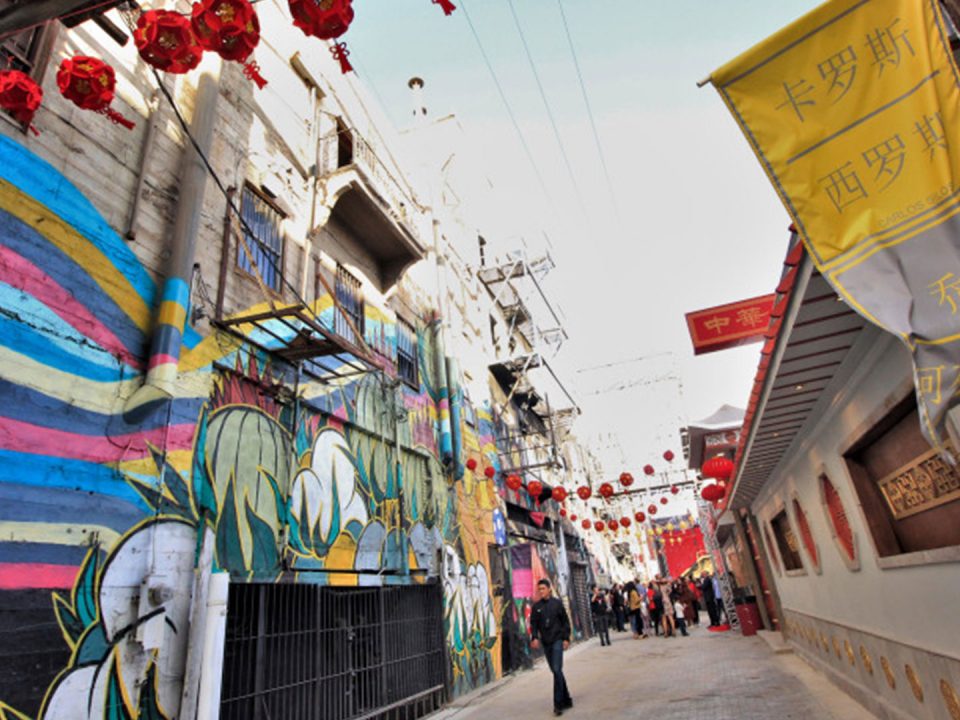
La Chinesca- A journey through Mexicali history
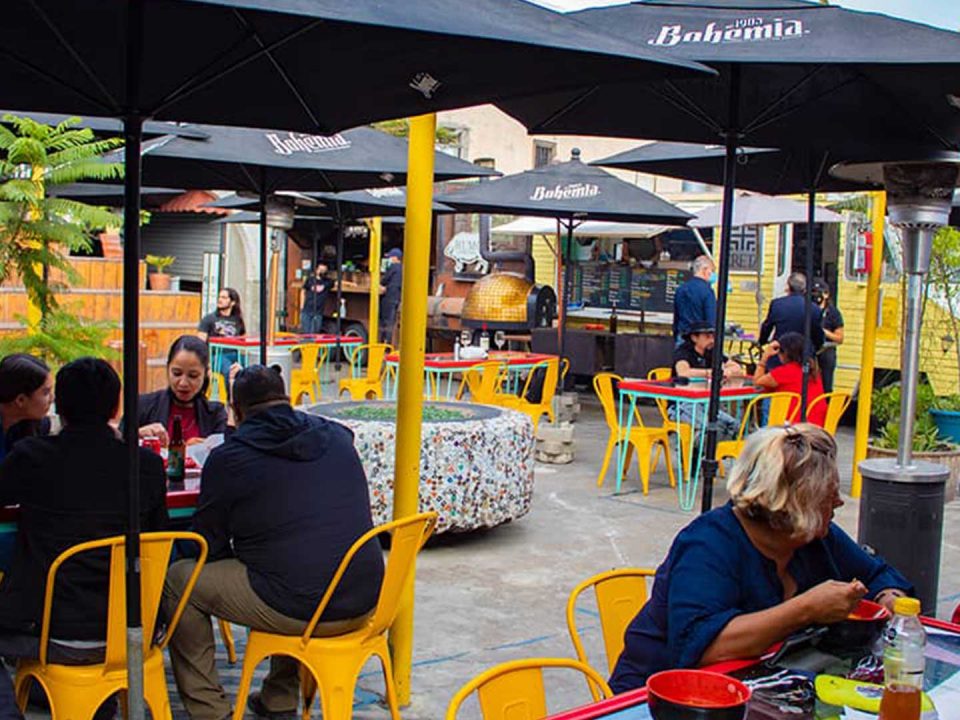
Forget the scale and start planning your holiday meals in Tijuana and Rosarito this winter season!

Must-see in Tijuana: The Collector’s & Lucha Libre Museum
- No translations available for this page
CURRENT PRICES END MAY 12
Outside Festival feat. Thundercat and Fleet Foxes.
FROM JUST $44

Is it Still Safe for Me to Camp in Baja California?
After the brutal murder of three surfers in Baja California last week, travelers are wondering if the area is more dangerous than it used to be and if they should stop camping.
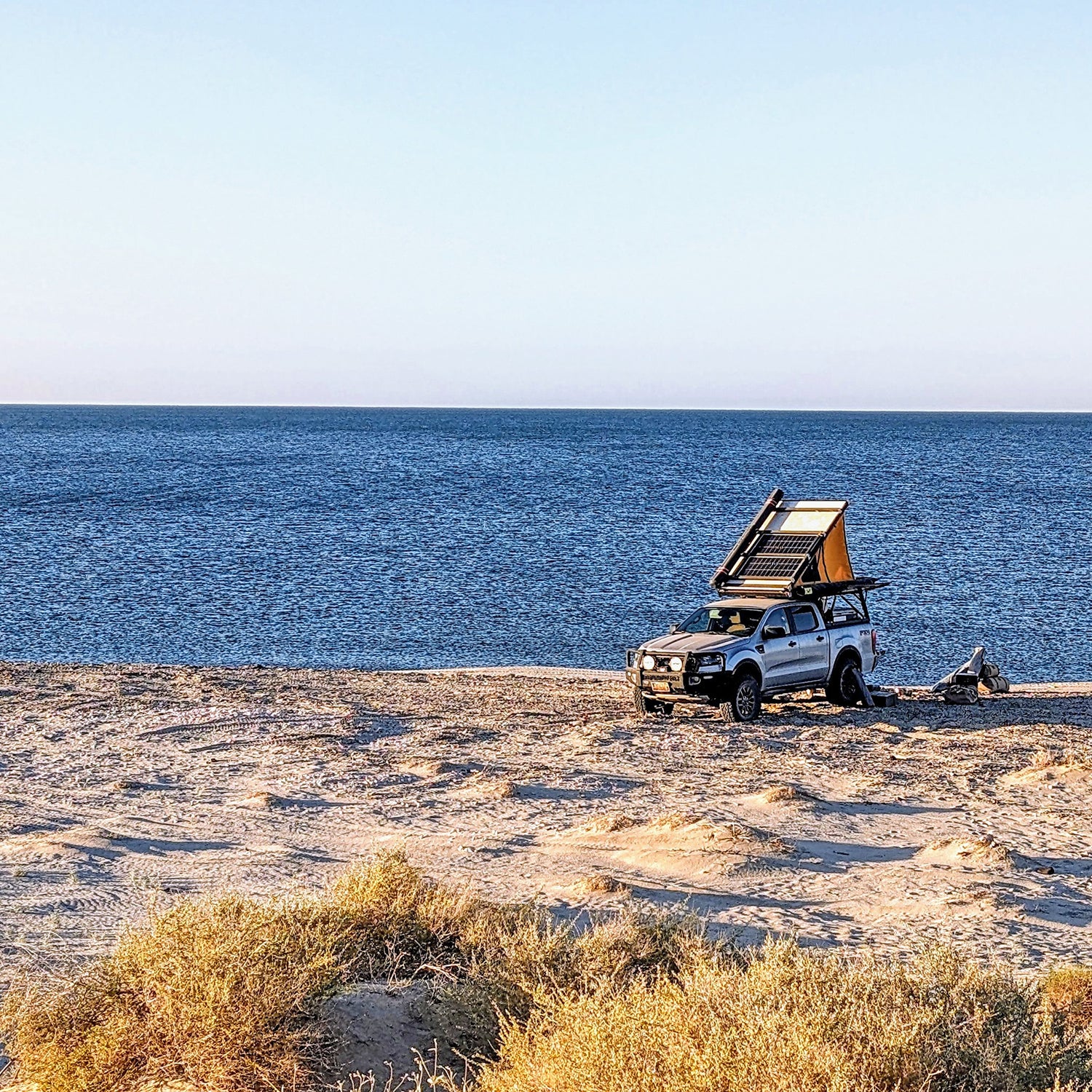
Heading out the door? Read this article on the Outside app available now on iOS devices for members! >","name":"in-content-cta","type":"link"}}'>Download the app .
On May 3, authorities in the Mexican state of Baja California discovered the bodies of three surfers —two Australians and one American—who had been missing for a week. Authorities announced the arrest of three people in connection with the alleged murder.
The crime has generated headlines and intense media scrutiny around the world, turning a spotlight onto the Baja peninsula and the infrequent-but-shocking collisions between its beautiful, austere landscapes and the violence occurring by its border with the United States.
Is Baja more dangerous than it used to be? Is it still safe to camp there?
For me, those questions are personal. I’ve been visiting the peninsula regularly for over a decade to go fishing, off-roading, and camping across its remote beaches, deserts, and mountains. I married my wife there just before the pandemic was declared in 2020. We spent our honeymoon driving from Montana down to Todos Santos and back, camping along the way. Part of the region’s draw for us is its demand for personal reliance and the opportunity to test ourselves.
While my wife and I have never had even a whiff of trouble, we do know people who have experienced violence. Among them is Ron Gomez Hoff, who runs the popular TalkBaja website and its multiple associated social media groups. TalkBaja’s online community is an essential resource for people traveling and living in Baja, and Hoff has lived there for the last 24 years. He married into a Mexican family, and lives as part of the local community outside a small town on the peninsula’s Pacific coast.
In an editorial addressing the murders , Hoff shared his experience with violence, telling the story of a time when he and his wife were attacked by criminals near their home—and left for dead.
It’s not just Hoff’s personal experience that’s relevant here. TalkBaja’s main Facebook group is where news of the surfers’ disappearance first broke when the Australians’ mother posted photos of her sons and their friend, seeking help. Hoff sits at the epicenter of information sharing for the region. If there’s anyone who can authoritatively weigh in on the question at hand, it’s him.
“There’s nowhere you can go in the world today that’s totally safe,” Hoff told me. “But down here there are two things working against each other. You’ve got smaller police forces with limited budgets, and then you add to that the fact that the vast majority of this large peninsula is off-grid, it’s remote, there are few paved roads, and there’s no cell phone signal in most places. You can drive hundreds of miles without even seeing a gas station.”
Measured in a straight line, from the U.S. border in the north to Los Cabos in the south, the Baja Peninsula is about 760 miles long. The drive along Highway 1 from Tijuana to San Jose del Cabo is over 1,000 miles. Throughout most of that distance, that highway is barely two lanes wide, irregularly paved, and is so rough and remote that it presents more danger than most Americans have likely ever before experienced.
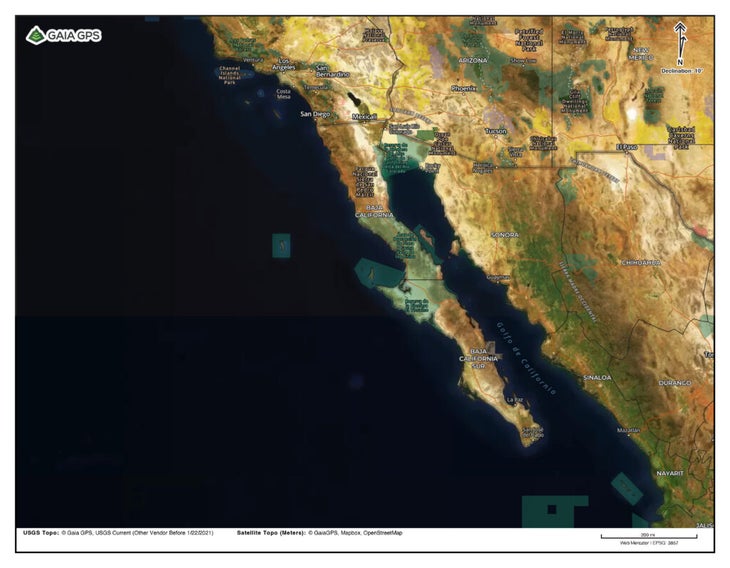
There are also two states on the peninsula—Baja California and Baja California Sur. The former, which is closer to the U.S. border, contains cities like Tijuana, Ensenada, Mexicali, and Tecate, which have some of the highest rates of violent crime in all of Mexico . South of Ensenada, it’s nearly a 400-mile drive to the border with Baja Sur, then another 260 miles from there to Loreto, a seaside town of 20,000 residents on the peninsula’s east coast which has seen two murders in the last year , a much higher rate than is typical there.
Is the murder rate in Tijuana applicable to a remote beach in the same state, 300 miles south? Of course not. But Hoff said it’s equally inaccurate to look at the very low murder rate for American tourists visiting all places in Mexico, and conclude that Baja is entirely safe.
“Mexico had 33.5 million American visitors in 2022, and only 46 of those were murdered,” said Hoff. At first glance, that represents a lower murder rate than north of the border.
“But murder rates are calculated in homicides per-100,000 people per-year,” Hoff continued. “An average tourist is here for three days. So you’ve got to take the 46 murders, multiply it by 365, and divide it by three.”
Doing that math takes the homicide rate for Americans in Mexico from 0.14 to 17.5 per-100,000 people. In 2022, the overall murder rate in the U.S. was 6.8 homicides per 100,000 people .
“Baja has a reputation as a place that is very remote, and it is,” Hoff continued. “But no matter how remote you get, there’s always somebody around, and that somebody is not always a good guy.”
Hoff said that’s a change he’s witnessed during his time visiting and living in Baja, explaining that an amendment to the Mexican constitution in 1991 that permitted ejido land (a type of communal agriculture land that’s widespread on the peninsula) to be privatized has led to a booming number of small farms and similar being constructed, some in extremely rural areas.
That’s something my experience backs up. I’m a skilled off-road driver who builds my own 4x4s into custom vehicles capable of unsupported travel through extreme terrain, and yet everywhere I’ve been in Baja—even on the other side of really challenging trails—I’ve encountered people.
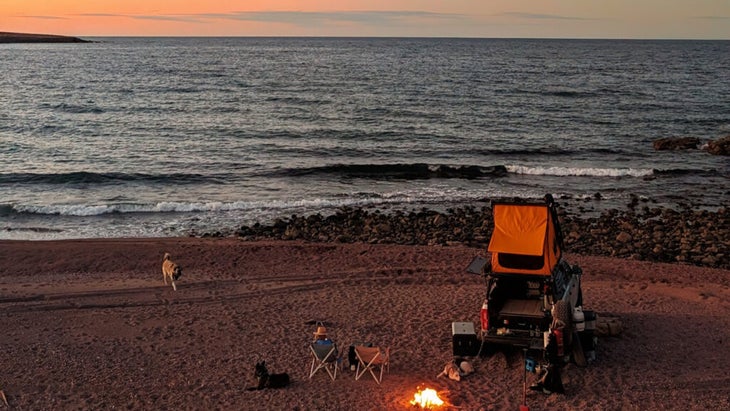
“You’re just not alone anymore,” Hoff continued. “When you see somebody out there these days they’re either working at a fish camp or ranch, they’re a foreign tourist because Mexican tourists won’t go out there anymore, or they’re a malandro (best translated as ‘bad guy’).”
Hoff went on to share information he’s gathered from local law enforcement and other sources over the decades. Lower levels of cartel operations—drug growing or production sites, or smuggling waypoints—are often staffed by the local equivalent of freelancers. Sometimes they might be busy working, and sometimes they might be between jobs. Because those operations take place in remote areas, that means you could come across malandros with free time on their hands pretty much anywhere. He also said that should you inadvertently find yourself camping in proximity to a cartel operation, they may send people to keep an eye on you, to make sure you don’t pose a threat.
Despite the large number of contacts, friends, and people I know in the Mexican tourism industry, no one wanted to discuss the murders or even safety protocols. People I’ve known for years ghosted me when I asked them. But Hoff’s assessment was backed up by conversations I had with Mexican friends born on the peninsula. I spoke to three of them—locals in the surfing community who told me they did not want to be named in this story.
Instead of sharing their thoughts on crime trends, they gave me practical advice for how to avoid problems in Baja. One, a surfer who recently had their first child, said that they no longer camp in unfamiliar areas, and where possible, try to stay on private land owned by friends or family. Others shared various strategies or approaches to determining areas in which they will or won’t camp that essentially amount to the same advice.
My local sources were reluctant to speak about criminal activities on the record, too. But these conversations are still fruitful. They focus less on an overall assessment of safety either historical or current, and instead immediately dive into the ins and outs of avoiding crime and violence while traveling the peninsula.
“Tell people to use paid-for campgrounds,” one of those friends told me. “That way they’re not only contributing to the local community, but you’re for-sure safe in those.”
I asked Hoff if simply finding a good campsite before nightfall, and making sure no one was around, would reduce that risk. That’s always been my strategy, and I wanted to run it past someone with much more experience.
Hoff told me he wouldn’t recommend winging it anymore, as that can get you into trouble.
The U.S. State Department last updated its longstanding travel advisories around the peninsula in August 2023. Those include a “Reconsider travel” warning for Baja, “due to crime and kidnapping,” and an, “Exercise increased caution due to crime,” for Baja Sur.
“Travelers should remain on main highways and avoid remote locations,” the State Department continues in the advisory. “Transnational criminal organizations compete in the border area to establish narco-trafficking and human smuggling routes. Violent crime and gang activity are common.” It goes on to order that U.S. government employees avoid driving after dark in areas of Mexico adjacent to the border.
“If you want to remote camp safely today, you need to do a lot of research,” Hoff continued. “And I don’t mean look at stuff people posted 10 or 20 years ago, you need to look for something that’s been posted in the last 30 to 60 days about that spot. And don’t just look for one source, find sources that have multiple people commenting on them, supporting or disagreeing.”
Multiple resources exist right now for people looking for good, remote campsites and other areas in Baja. I reference iOverlander , which is full of user generated content reviewing and locating campsites, taco stands, hostels, and similar. BajaNomad is a forum for the same that’s been operating for decades. Friends frequently share coordinates for spots they’ve stayed in or traveled through.
And there’s Hoff’s own TalkBaja , TalkBaja Road Conditions , TalkBaja Weather , and now, Safe Camping in Baja Mexico , a private Facebook group he started just this week, in response to the murders.
“It’s been a long-standing tradition for some of you to keep your favorite remote camping spots a secret but in light of recent events, the time has come for us to come together as a community and share what we know—good and bad—about the different off-road campsites down here in an effort to create a pool of shared knowledge,” Hoff wrote in a post introducing the Safe Camping group.
Despite the recent murders, Hoff believes that information sharing forums like his Safe Camping group will help future travelers and campers stay safe.
“Something changed with this event, and I think it has to do with the amount of coverage it has gotten,” he said. “It’s exponentially greater than other similar events we’ve seen in the past.” Not only did word of the missing surfers break on TalkBaja, but it was followed by multiple eyewitness accounts that tracked their movements in the run up to the murders, described the location and crime scene, and even connected the murderers to another missing persons case.
Despite the increased availability of information on crime and safety in Baja, Hoff believes the murder could become a pivotal moment for tourism on the peninsula.
“Because there’s been so many details provided outside of official sources, I think people are really seeing a detailed story of what these guys went through,” Hoff said, “And people are going, ‘that could be me.’ That’s really hitting home for a lot of travelers.”
For safer travel on the peninsula, you can always go to tourist centers with lower crime rates.
I reached out to the Baja D.A.’s office and the Baja California Tourism Board and its local representatives in Ensenada, Mexicali, and Rosarito for comment, but at press time have not received a response.
- Backcountry Camping
Popular on Outside Online

Enjoy coverage of racing, history, food, culture, travel, and tech with access to unlimited digital content from Outside Network's iconic brands.
Healthy Living
- Clean Eating
- Vegetarian Times
- Yoga Journal
- Fly Fishing Film Tour
- National Park Trips
- Warren Miller
- Fastest Known Time
- Trail Runner
- Women's Running
- Bicycle Retailer & Industry News
- FinisherPix
- Outside Events Cycling Series
- Outside Shop
© 2024 Outside Interactive, Inc
- Mexico Travel News
- Seaweed Updates
- Hidden Travel Gems

Is Baja California Safe? Travel Advisory 2024
In recent years, Baja California has emerged as a captivating destination for travelers seeking diverse experiences, from serene beaches to vibrant culture.
However, safety concerns have surfaced, prompting many potential visitors to question the region’s security status.
Baja California is generally considered safe for tourists, especially in areas frequented by travelers but it has a couple of areas that should be reconsidered or visited with high caution.
Our comprehensive 2024 travel advisory for Baja California offers an in-depth analysis, providing travelers with essential information and guidance to ensure a safe and enjoyable trip.
LATEST NEWS/UPDATES:
January 3, 2024: los cabos remains one of the safest destinations in mexico coming into 2024.
According to thecabosun.com, despite a 38.7% increase in drug dealing cases in Los Cabos in 2023, the municipality remains one of the safest in Mexico for tourists.
This increase is based on data from the National Public Security System, with over half the cases in Los Cabos. Local authorities are actively addressing the issue with initiatives like “Ponte Trucha” to protect tourists from fraud and enhance tourist safety.
The Los Cabos government prioritizes safety to prevent an economic impact on its tourism-dependent community.
Popular destinations in Baja California
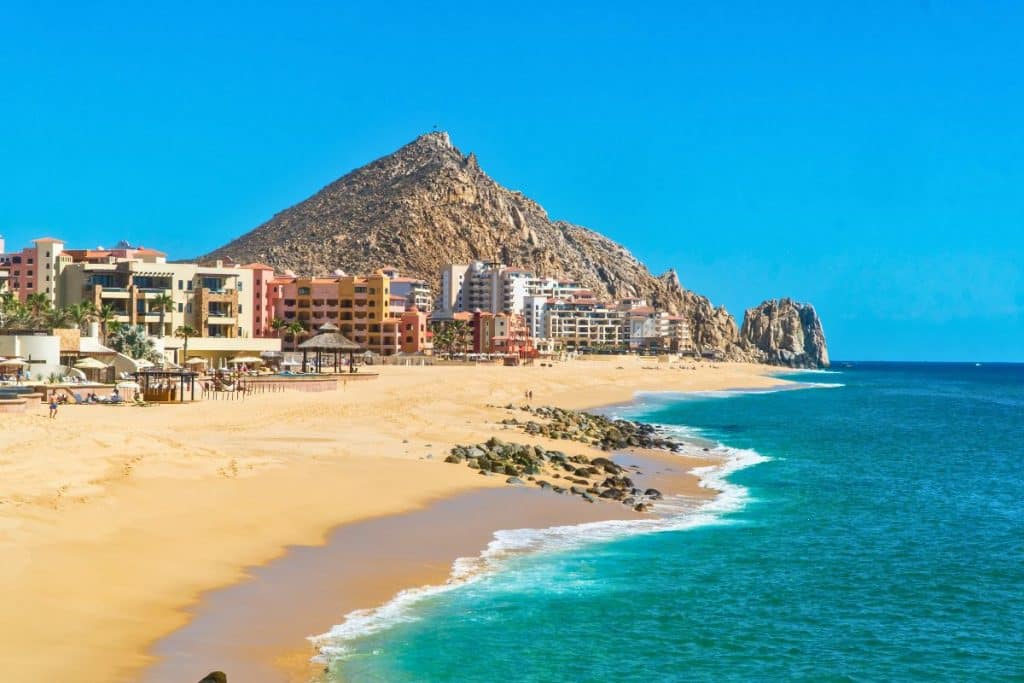
Rosarito is generally regarded as a relatively safe destination for tourists. As in any tourist location, it is wise for visitors to stay vigilant, especially in crowded areas, and to follow standard safety precautions.
Ensenada is generally considered a safe destination for tourists, especially in areas popular with visitors. However, like any travel destination, it is advised to exercise common sense and stay aware of your surroundings. Precautions such as avoiding isolated areas, not displaying valuables, and adhering to local safety guidelines are recommended.
Tijuana’s safety for visitors can vary. While some areas are popular tourist destinations and safe, the city also faces challenges with crime, particularly in non-tourist areas. Visitors are advised to exercise caution, stay on main roads, and avoid traveling at night. As with any destination, awareness of surroundings and adherence to local safety advisories are crucial for a safe visit.
Los Cabos is generally considered safe for tourists, especially in areas frequented by visitors. The region is known for its active efforts to maintain safety and security for travelers.
Official Travel Advisories (U.S., Canada, UK)
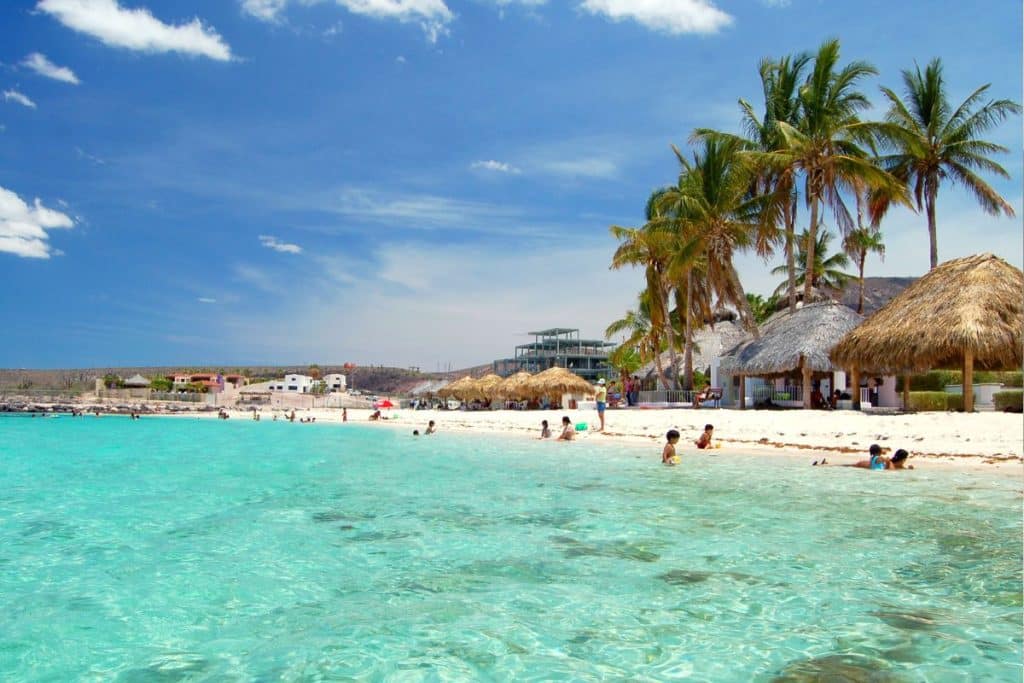
U.S. Travel Advisory
Baja California state – Level 3 – Reconsider Travel
Travel advisories urge reconsideration of trips to regions of Baja California affected by crime and kidnapping. The presence of transnational criminal organizations, particularly in border areas, escalates risks, including narco-trafficking and human smuggling. Violence and gang activity are prevalent, and travelers are advised to stick to main highways and shun remote locations.
Tijuana, especially in non-tourist sectors, has witnessed a notable rise in homicides, often linked to targeted criminal actions or territorial conflicts, posing risks to bystanders. There have been instances of U.S. citizens and Legal Permanent Residents falling victim to kidnappings.
Baja California Sur state – Level 2 – Exercise Increased Caution
In Baja California Sur state, travelers are advised to be particularly cautious due to the potential for crime.
The entire state may experience instances of criminal activity and violence.
Source: travel.state.gov
Canada Travel Advisory
The travel advisory for Mexico, as provided by the Canadian government, includes important information for travelers but doesn’t focus on particular areas/states. It covers a range of topics including safety and security concerns, entry and exit requirements, health precautions, laws and culture, natural disasters and climate, and consular assistance.
Source: travel.gc.ca
UK Travel Advisory
The FCDO advises against all but essential travel to Tijuana in Baja California, with exceptions for airside transit through Tijuana airport, using the cross-border express, and passage via federal toll road 1D and Via Rápida.
Similar advice is given for Tecate, including roads 2D and 2. Tijuana, known for extreme violence and high rates of kidnapping, murder, and organized crime, is particularly risky after dark. Violent robberies are common in urban centers like Tijuana, Mexicali, and Ensenada.
Travelers are advised to stay on established routes, be cautious in Ciudad Juárez, and avoid traveling at night.
Source: gov.uk
Basic Safety Rules for Baja California Travel
- Stay on main roads and avoid remote areas, especially after dark.
- Keep a close watch on personal belongings and avoid displaying expensive items.
- Stay informed about local news and safety advisories.
- Use reputable transportation services and avoid hitchhiking.
- Stay in well-known tourist areas and avoid venturing into unfamiliar neighborhoods.
- Keep emergency contact information handy and inform someone of your travel itinerary.
- Respect local laws and customs to avoid any legal issues.

3 surfers shot in the head while visiting Mexico were found dead in a well, in an area where tourists are usually safe
- Three men were found dead in a well in Baja California, Mexico, after being shot on a surfing trip.
- Officials believe the tourists were attacked by three people who attempted to steal their truck.
- The incident has sparked protests in Ensenada, demanding safety for tourists and locals alike.
Three men in their early 30s have been found dead in a well after being shot in the head while on a surfing trip in Baja California, Mexico.
Two Australian brothers, Callum and Jake Robinson, and their American friend, Jack Carter Rhoad, were near the popular coastal town of Ensenada when they went missing last week.
Their bodies were found in the 15-foot-deep well on Saturday after a dayslong search, and have since been identified by family members, Reuters reported .
Jake, 30, had flown to the US to visit Callum, 33, who was pursuing his dream of being a professional lacrosse player. The week after his trip, Jake was due to start a new job as a doctor in Victoria, Australia. Carter Rhoad, 30, was working as an apparel designer in San Diego, the New York Post reported.
They were last seen on 27 April and, when they didn't show up to an Airbnb booking a couple of days later, were reported missing and an investigation was launched by local authorities and the FBI.
It's thought that the tourists were attacked after they defended themselves from three people who were trying to steal their truck.
Baja California state prosecutor Maria Andrade suggested that the attackers wanted the truck for its tires and shot the three men in their heads when they resisted, Reuters reported.
A burnt-out vehicle suspected to be the surfers' truck was also found in the area, alongside abandoned tents, and a phone linked to them.
Three Mexican nationals, two men and a woman, have been arrested as suspects.
A fourth body was also found in the well, but it's believed to be older and from an earlier incident, the Guardian reported .
Turf wars between drug gangs are common in Baja California , which is one of Mexico's most dangerous and violent states. However, Ensenada is generally considered to be safe — about 75 miles south of California, it is a popular spot for US tourists.
The surfers' loved ones have paid tribute
Friends and family of the Robinsons and Carter Rhoad have been sharing tributes to the young men.
"Callum and Jake are beautiful human beings. We love them so much and this breaks our heart," the brothers' parents said in a statement, the BBC reported .
Callum's teammates from Stevenson University Lacrosse Club said in a statement on social media: "With his beautiful long hair and charming smile, he truly embodied the nickname 'big koala' — warm, friendly, and always there to lend a helping hand."
His girlfriend, Emily Horwath, said in an Instagram story that her heart was "shattered into a million pieces."
"I don't have the words right now... I will love you forever," she wrote.
Protesters and mourners took to the streets of Ensenada on Sunday to share their sadness and anger.
They marched with messages on surfboards, such as "They only wanted to surf — we demand safe beaches."
Surfers also held a "paddle out" ocean vigil in memory of the Robinsons and Carter Rhoad.
If you enjoyed this story, be sure to follow Business Insider on Microsoft Start.

National Geographic content straight to your inbox—sign up for our popular newsletters here

"Rocky, wild and unpredictable" — why Baja California is ideal offroading country
Unfurling for more than 750 miles down a stick-thin peninsula, Baja California has long been known for water adventures — but new off-roading tours help travellers see it from a different perspective.
Gripping the roof handle and staring silently over the dashboard, I avert my gaze from the 160ft drop to my left. There’s just six inches of dirt road standing between us and the cliff edge: one wrong move from our driver, and the pickup truck we’re in is going straight into the Sea of Cortez.
The first time I visited Mexico’s Baja California, the world’s second-longest peninsula, it was on a backpacking trip through Central America. I hitchhiked and bussed over 650 miles from Tijuana, on the border with the US, to Todos Santos, just short of Baja’s most southerly point, Cabo San Lucas. Travelling along the Carretera Transpeninsular, I stopped at every major town along Baja’s main highway, wine-tasting in Ensenada, whale-watching in Guerrero Negro and swimming with sea lions on Espiritu Santo Island.
During those long drives, I’d stare out at the stark desert landscape for hours: salt-encrusted greasewood shrubs and giant cardón cacti sprouted from swathes of sand and clay-red mountains, which often turned candyfloss pink at sunset. But what caught my eye were the narrow dirt tracks, hundreds of them crisscrossing the desert like a map drawn in the sand, veering off the highway towards sun-baked sierras and hidden turquoise coves. One day, I thought to myself, I’d return to Baja California to see where those roads led.
Five years on, I’ve come to La Paz, in the south of the Baja California peninsula, to join Baja Expeditions’ first-ever overlanding trip. The company has specialised in whale-watching, kayaking and wild camping in the state since the 1970s, but has recently branched out with off-roading tours to encourage visitors to explore the peninsula’s less-visited interior.

“People think Baja is just beaches and whales,” says our driver Mike Thorneycroft, a Canadian who moved to Baja California in 2020. “But it’s more than that. These trips are about getting people out of the resorts and into Baja’s least-visited communities, and learning some of their history and culture.”
Mike gets us past the cliff edge safely, manoeuvring around asteroid-sized potholes and boulders with ease as we climb up and over Sierra de la Laguna, part of a mountain range that connects Baja California Sur, the southern state of Baja California, with southern California in the US.
On slightly wider roads, I start to relax and take in the views: unlike the parched desert I’d seen from the highway years ago, these mountains are lush from recent hurricane rains, flourishing with lime-green mesquite trees and pink and yellow wildflowers. We cross arroyos — dry riverbeds that fill up after heavy rainfall — flowing with crystalline water, where orange butterflies and free-roaming piglets from a nearby ranch are taking a drink. A vulture and a flaming red cardinal bird join soon after.
“Baja California is perfect for off-roading,” says Mike, who organises and competes in long-distance off-road rallies across the state. “The roads are rocky, wild and unpredictable, changing quickly in the rainy season. But that’s what makes it exciting.”
Near the former silver-mining town of El Triunfo, we stop at the Santuario de los Cactus, a community-run garden with some of the oldest and rarest cacti on earth, including the cardón, the world’s largest cactus. The garden’s grey-moustached volunteer caretaker, Guadalupe ‘Lupe’ Gonzalez, shows us around, pointing out which cacti fruits are edible and how to extract water from their flesh. He also shows us cacti species used to treat kidney stones, stomach aches and open wounds.
“I learnt about the medicinal properties of cacti from the rancheros (ranchers),” says Lupe, caressing the spines of a 400-year-old cactus as if they were whiskers. He’s been caring for the plants here for more than 30 years and offers guided tours of the garden for a small donation. “But this knowledge comes from the Indians. There are none left here now, but we know how to survive in the desert because of them.”

Before the Spanish arrived, Baja California was inhabited by three major Indigenous groups: the Cochimí, the Guaycura and the Pericú. Ancient rock paintings in Sierra de San Francisco, around 465 miles north of where I am and described by UNESCO as some of the most impressive collections of rock paintings in the world, suggest that these tribes had lived on the peninsula for at least 10,000 years.
Although the Spanish colonised Baja California much later than Mexico’s mainland, around the late 17th century, the culture and history of these local Indigenous groups was erased more quickly than in the rest of Mexico. Some experts believe this is because the region’s Indigenous groups were nomadic hunter-gatherers, who lacked the big cities and societal structures that helped preserve the legacies of the Mayans and Aztecs in other Mexican states. Today, very few Indigenous groups remain, with most living in the north of Baja California.
After a few hours of driving along the spectacular Barriles Santa Teresa coastal road, we make the steep descent to Palo Blanquito beach, where we’ll be spending the night. It’s a wild strip of sand, where milky-red cliffs crumble into a dazzling turquoise sea studded with volcanic rock. Come sunset, it’s just our truck on the beach and a flock of pelicans floating on the dead-still water, like rubber ducks in a jade-coloured bath. We eat refried beans and chicken burritos under the stars, watching a brilliant-white crescent moon rise over the water. That night, I sleep to the sound of the waves lapping gently at the shoreline.
The next morning, I watch the beach come to life from my tent. As the sun rises above the horizon, the sea turns from liquid silver to light pink, illuminating the inside of the tent with a warm glow. A family of pelicans — each one resembling a light aircraft — skim across the water with mouths agape, hoping to catch one of the flying fish backflipping through the air. Eager to join the action, I roll out of the tent and into the sea, plunging head first into the crystal-clear water with my mask and snorkel. Below the surface is an underwater city made of coral and volcanic rock, and colourful fish: I see a long, translucent cornetfish; a tiny cortez rainbow wrasse; and an enormous shoal of California yellowtail, the soft morning light bouncing off their tinfoil-like skin. It’s tempting to stay longer on this wild, empty beach, lounging on the rocks and floating in the warm turquoise waters as the resident pelicans do. But Mike has packed up camp and started the engine — it’s time to continue our journey through the desert roads of Baja California. “That’s the thing with overlanding,” says Mike, opening the passenger door for me to get in. “There’s always one more road to explore.”
Related Topics
You may also like.

Here are the best ways to get outdoors in all 50 states

Visiting Scotland? Here’s what the locals love
For hungry minds.

10 best things to do in Alaska

8 campervanning essentials you must have

An ‘impenetrable’ wildlife sanctuary in Argentina opens to the world

Essential kit for cold-weather camping

Visiting North Carolina: Here’s what the locals love
- Environment
History & Culture
- History & Culture
- Mind, Body, Wonder
- Paid Content
- Terms of Use
- Privacy Policy
- Your US State Privacy Rights
- Children's Online Privacy Policy
- Interest-Based Ads
- About Nielsen Measurement
- Do Not Sell or Share My Personal Information
- Nat Geo Home
- Attend a Live Event
- Book a Trip
- Inspire Your Kids
- Shop Nat Geo
- Visit the D.C. Museum
- Learn About Our Impact
- Support Our Mission
- Advertise With Us
- Customer Service
- Renew Subscription
- Manage Your Subscription
- Work at Nat Geo
- Sign Up for Our Newsletters
- Contribute to Protect the Planet
Copyright © 1996-2015 National Geographic Society Copyright © 2015-2024 National Geographic Partners, LLC. All rights reserved
Bodies found in Baja California near where surfers from San Diego went missing

Mexican officials have not confirmed the identifies of the deceased. Australian brothers Jake and Callum Robinson and San Diegan Jack Carter Rhoad have been missing since last weekend
- Show more sharing options
- Copy Link URL Copied!
Three bodies have been found south of Ensenada near the surf break where two San Diego men and a brother visiting from Australia were last seen before disappearing under suspicious circumstances, and an arrest warrant has been issued in connection with the case, Mexican officials said Friday.
The bodies were discovered nearly a week into the search for Callum Robinson, 33, an Australian living in San Diego; his visiting brother, Jake Robinson, 30; and their friend, Jack Carter Rhoad, 30, a U.S. citizen and San Diegan.
Mexican authorities have not yet positively identified the deceased. Officials say the older remains of a fourth person may have been found, as well.
The remains were found at the bottom of a well near Punta San José in Santo Tomás, near a picturesque, remote surfing spot known as Lighthouse. It is the same general area where the Chevrolet pickup that the trio had been driving through Baja California was discovered about a day earlier. It had been set on fire.
The bodies were found after a nearly 24-hour search at the site — a rural oceanfront property that includes a small, brick house. The Mexican National Guard, Mexican Army, Baja California Attorney General’s Office and Ensenada Fire Department rescue team remained at the scene into Friday evening.
The surfers had planned to camp near the beach last weekend, then stay at an Airbnb in Rosarito, according to social media posts by friends and family. But they never checked into the Airbnb, and Callum didn’t show up for work in San Diego as scheduled.
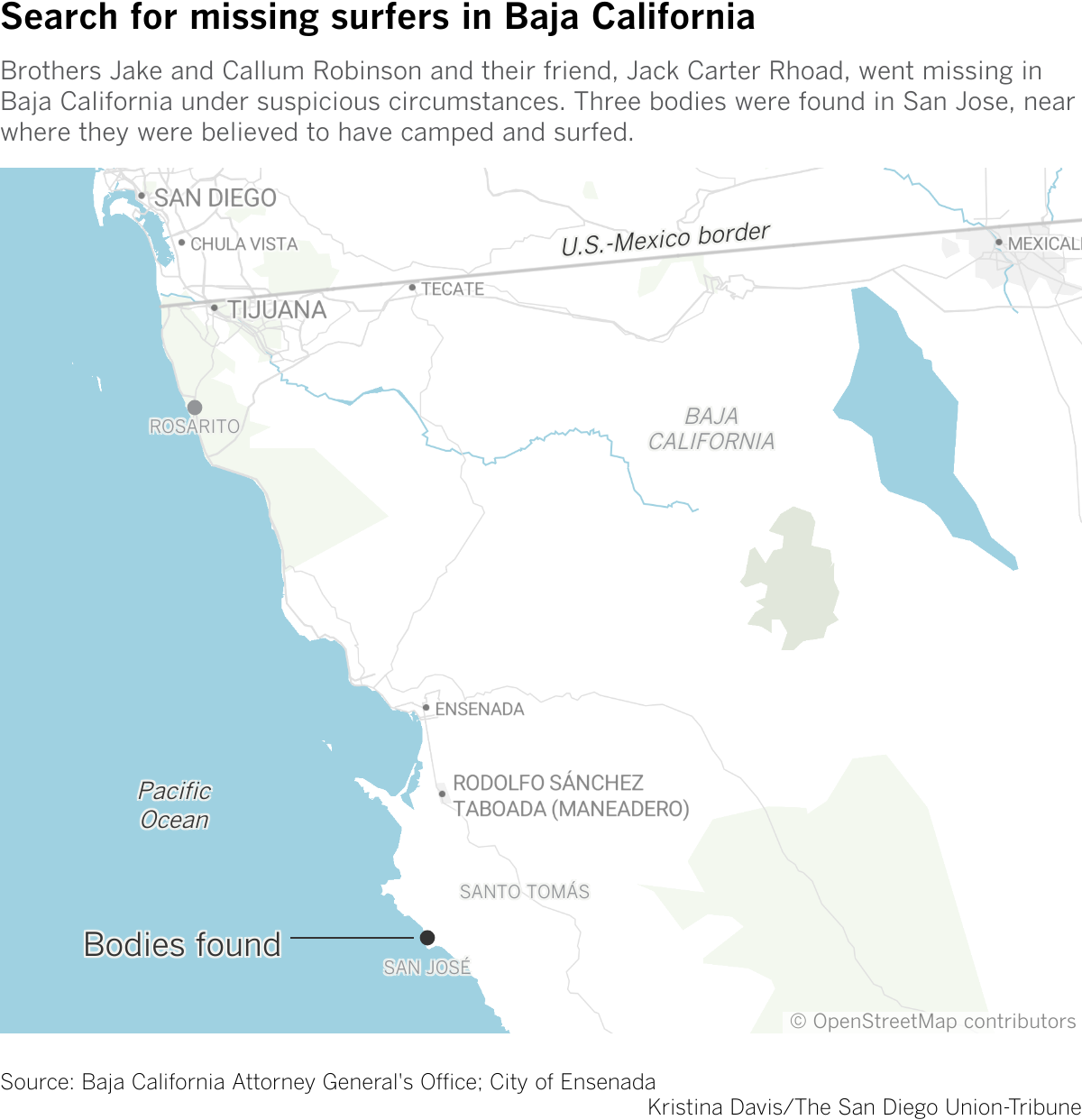
Baja California prosecutors on Friday issued an arrest warrant for one person on charges of forced disappearance.
Prosecutors did not identify the suspect but had said Thursday that three people were under investigation in connection with the disappearances. That included a 23-year-old woman was detained with drugs and a cellphone that had a wallpaper photo of one of the missing men, according to Ensenada Mayor Carlos Ibarra Aguiar.
Rhoad graduated from Point Loma Nazarene University and works in technology services in San Diego, his LinkedIn profile says. Callum, who used to play professional lacrosse, works for a mobile fundraising platform, according to his LinkedIn. Jake, a doctor in Australia, is visiting his brother in San Diego.
The brothers’ parents, Martin and Debra Robinson, who live in Perth, told Australian news outlets earlier on Friday that they were heading to Mexico to be close during the search.
“Callum and Jake are beautiful human beings. We love them so much and this breaks our heart,” they said in a statement to Australian media.
The brothers had attended the Coachella music festival before the surf trip, the parents said.
“Surfing is a passion they both share. Our only comfort right now is that they were together doing something they passionately love,” the parents said.
Mexican officials have been coordinating with the FBI in San Diego and the U.S. State Department, as well as consulate officials of both the U.S. and Australia.
In a statement Thursday, Baja California Gov. Marina del Pilar Ávila promised a thorough investigation and said that anyone responsible for a crime will be “punished to the fullest extent of the law.“
Baja California had one of the highest homicide rates in the country last year, with 2,417 people killed, according to state Secretary of Citizen Security. The deaths are largely attributed to drug violence as warring cartel factions fight for control of the area. But violence affecting foreign tourists in the region has been rare.
There have been 595 homicides in the state through March of this year.
9:10 p.m. May 3, 2024: This story has been updated with additional information.
Get Essential San Diego, weekday mornings
Get top headlines from the Union-Tribune in your inbox weekday mornings, including top news, local, sports, business, entertainment and opinion.
You may occasionally receive promotional content from the San Diego Union-Tribune.

More from this Author

Border & Baja
Testimony details alleged motive in Mexico surfer slayings: ‘They had a lot of money, devices and the pickup’
May 8, 2024
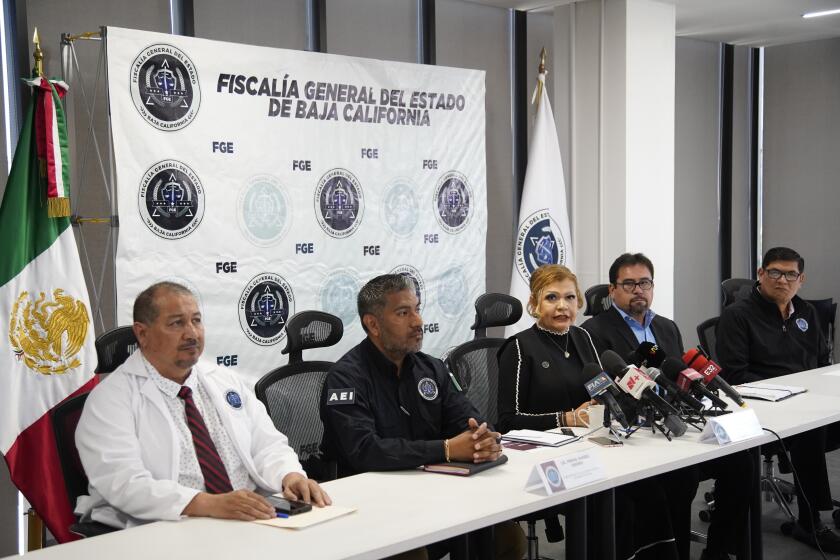
Public Safety
Robbery gone wrong suspected as possible motive in killing of U.S., Australian surfers in Mexico
May 5, 2024
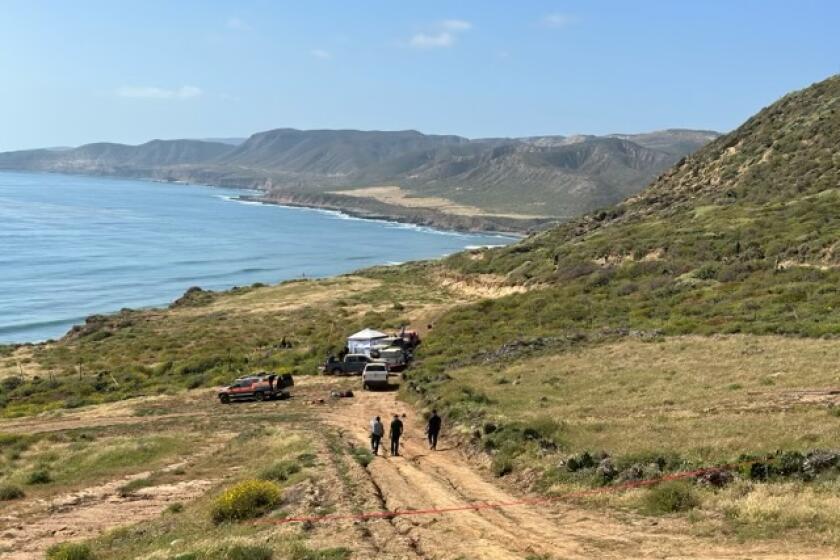
Bodies recovered in Baja California likely those of missing San Diegans, visiting Australian, prosecutors say
May 4, 2024

Search intensifies for missing U.S. and Australian surfers traveling in Ensenada
May 2, 2024
Immigration
County moves forward with plan for a long-term migrant center after securing federal funding
May 1, 2024
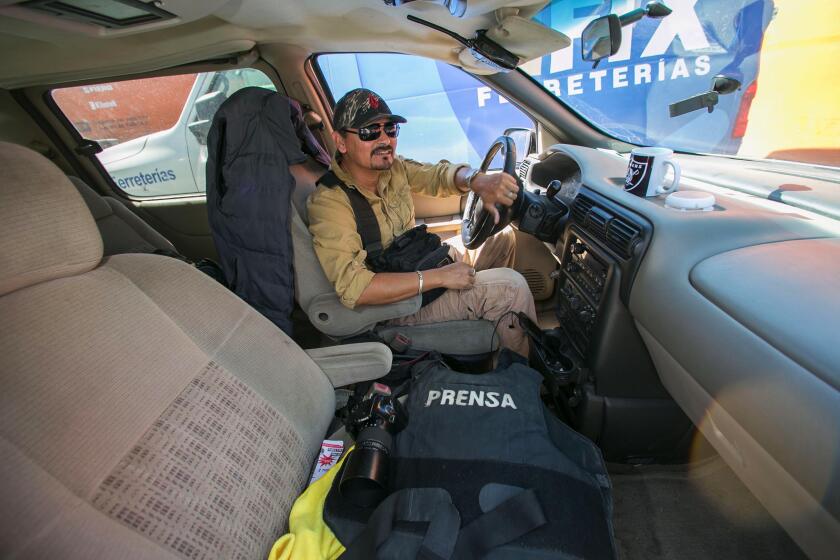
Man accused of relaying order to kill Tijuana photojournalist to stand trial
More in this section.

SDG&E made $223M in profits in first quarter, down $35M from last year
Critics of SDG&E took aim at the utility’s earnings, even if they were lower than in 2023
May 7, 2024

Leader of cartel enforcers pleads guilty to drug charges, admits ordering murder of Mexican cop
Edgar Herrera Pardo was allegedly head of Los Cabos, a group San Diego federal prosecutors said employed ‘rampant violence’ to ensure CJNG could traffic drugs
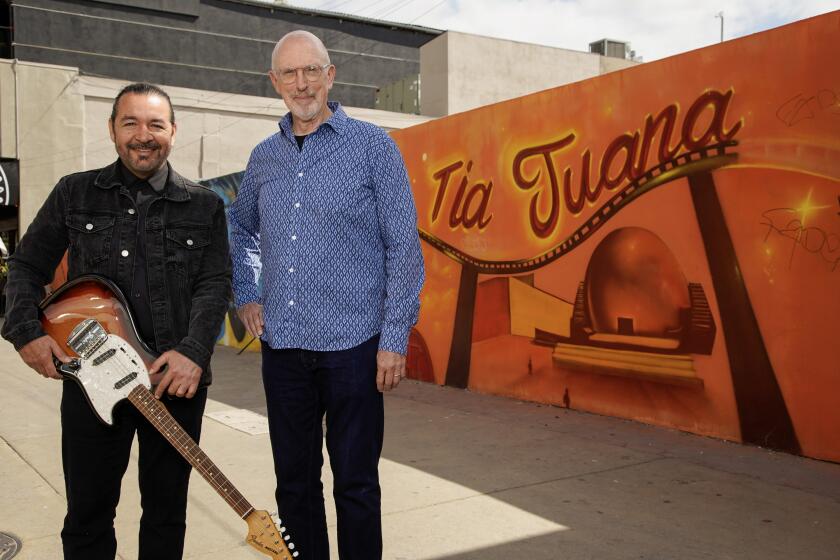
San Diego Tijuana International Jazz Festival to debut, with seed money provided by Qualcomm founder Irwin Jacobs
The three-day festival has been designated as an “impact project” in the yearlong San Diego Tijuana World Design Capital 2024. It will feature drummer Cindy Blackman Santana, pianist Gerald Clayton, trumpeters Gilbert Castellanos and Ivan Trujillo, singer Magos Herrera, the Hausman Quartet, and more.
April 30, 2024

Mexico is in the midst of an election season like no other. Voters in San Diego will help make history.
The election is poised to be full of firsts, from the likelihood of the first female president to expanded voting in the U.S. to the billing of being the largest yet
April 28, 2024
Baja California cop pleads guilty to driving cocaine through border
Victor Alfonso Moreno-Mejia was arrested in September with around 100 pounds of cocaine inside his car at the San Ysidro Port of Entry
April 26, 2024
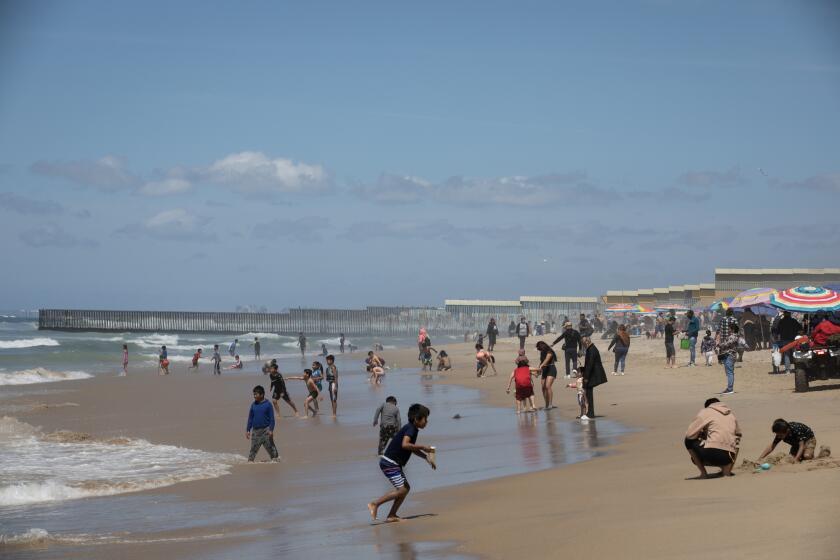
Environment
Living the beach life in Tijuana and Imperial Beach under the shadow of a sewage crisis
The two communities divided by the U.S.-Mexico border have long been connected by the same environmental crisis plaguing their shared Pacific Ocean
April 21, 2024
- Share full article
Advertisement
Supported by
After 3 Tourists Go Missing, Bodies Are Found in Baja California
Mexican authorities recovered the three bodies as a search went on for two Australian tourists and a U.S. citizen who disappeared while on vacation.

By Emiliano Rodríguez Mega
Reporting from Mexico City
A dayslong search for three missing tourists who disappeared near a surfing town close to the U.S.-Mexico border ended tragically on Friday as the authorities said that they had located three bodies in a water hole.
Two Australian brothers, Callum and Jake Robinson, and their friend, Jack Carter Rhoad, a U.S. citizen, had been on vacation surfing and camping along the coast near the Mexican city of Ensenada when they disappeared on Saturday.
Debra Robinson, the mother of the brothers, said in a social media post on Wednesday that they had booked an Airbnb in another coastal town north of Ensenada but never showed up there.
“Reaching out to anyone who has seen my two sons. They have not contacted us,” she pleaded to the more than 120,000 members of a community Facebook page created for people interested in touring Mexico’s Baja California peninsula.
She added that Callum was a Type 1 diabetic.
The state’s attorney general, María Elena Andrade Ramírez, said in a news conference on Thursday that prosecutors were investigating three people related to the case but that crucial time had passed since the disappearance of the three men.
“Unfortunately, it wasn’t until the last few days that they were reported missing,” Ms. Andrade Ramírez told reporters. “So, that meant that important hours or time was lost.”
In an interview, Ms. Andrade Ramírez said that after close examination of a 50-foot-deep water hole in La Bocana beach, near the town of Santo Tomás, Mexican authorities found three male bodies early on Friday. The already decomposed remains, she added, “meet the characteristics to assume with a high degree of probability” that they are the Robinson siblings and Mr. Rhoad.
Researchers will perform DNA tests to confirm the findings.
Prosecutors also believe that the three people tied to the deaths tried to seize the victims’ vehicle. When they resisted, Ms. Andrade Ramírez said, one man took out a gun, opened fire and then tried to dispose of their bodies. That person has been arrested.
“This aggression seems to have occurred in an unforeseen, circumstantial manner,” she added. “We pledge that this crime will not go unpunished.”
Human remains of a fourth male body, which has not yet been identified and is not connected to this case, was also found at the same site.
In 2022, 192 American citizens died in Mexico, State Department figures show , but most of those deaths were accidents or suicides. Only 46 were ruled as homicides.
The big waves in Baja California have long attracted throngs of surfers and travelers, many of whom have dealt with rising crime rates for nearly two decades.
But record levels of violence have hit the state in recent years. Government data shows that Baja California currently holds first place in vehicle theft and second place in homicides, most of which are related to drug dealing or organized crime, Mexico’s secretary of defense, Luis Cresencio Sandoval, said this year.
An official familiar with the investigation, who was not authorized to speak publicly, said a white pickup truck that the missing tourists had been traveling in was found charred near La Bocana beach. Other belongings and pieces of evidence were also being analyzed, the official added.
The swift effort to find the tourists was a rare exception in a country where nearly 100,000 people remain missing, according to the latest count provided by Mexican officials in March.
A majority of cases remain unsolved. Family members and volunteers are left on their own to follow up on leads, but the presence of cartels and a lack of support from the authorities make searching a dangerous mission .
The recent case in Ensenada recalled an episode in 2015 in which two Australian surfers, Adam Coleman and Dean Lucas, were killed as they drove across Sinaloa, another state in northern Mexico. Local authorities arrested three people who said they shot the two friends after they resisted a robbery. Their bodies were found inside their van, which had been doused in gasoline and set on fire.
Emiliano Rodríguez Mega is a reporter and researcher for The Times based in Mexico City, covering Mexico, Central America and the Caribbean. More about Emiliano Rodríguez Mega
- Entertainment
- KSAT Insider
- Newsletters
BREAKING NEWS
KSAT is now broadcasting NEXTGEN TV signal for antenna users. How to rescan, troubleshoot
How a beach trip in mexico's baja california turned deadly for surfers from australia and the us.
Mark Stevenson
Associated Press
Copyright 2024 The Associated Press. All rights reserved
The photos of the foreign surfers who disappeared are placed on the beach in Ensenada, Mexico, Sunday, May 5, 2024. Mexican authorities said Friday that three bodies were recovered in an area of Baja California near where two Australians and an American went missing last weekend during an apparent camping and surfing trip. (AP Photo/Karen Castaneda)
MEXICO CITY – Two Australians and an American were doing what they loved on the stunning, largely isolated stretch of Baja California's Pacific coast. Their last images on social media showed them sitting and gazing at the waves, contemplating the breaks.
What happened to end their lives may have been as random as a passing pickup truck full of people with ill intent. The surfers were shot in the head, their bodies dumped in a covered well miles away. How it unfolded was the stuff of nightmares.
Recommended Videos
Brothers Jake and Callum Robinson from Australia and American Jack Carter Rhoad had apparently stopped to surf the breaks between Punta San José, about 50 miles (80 kilometers) south of Ensenada, and La Bocana, further north on the coast. They were attacked there on April 28 or 29.
As soon as police arrived at their last known camp site, it was clear that something had gone violently wrong.
There were bloodstains and marks “as if heavy objects had been dragged," leading to suspicions of an attack, the Baja California state prosecutor's office said in an attempt to reconstruct the scene.
Chief state prosecutor María Elena Andrade Ramírez described what likely would have been moments of terror that ended the trip for the three men.
She theorized the killers drove by and saw the foreigners’ pickup truck and tents and wanted to steal the truck's tires and other parts. But “when (the foreigners) came up and caught them, surely, they resisted.”
She said that’s when the killers would have shot the men. She said they were likely not attacked because they were tourists. "The evidence suggests they (the killers) did not know where they were from.”
Andrade Ramírez said the reconstruction of events was based on the forensic examiner's reports, noting all three had bullet wounds to the head.
There was a hurried attempt to destroy evidence. The foreigners’ tents were apparently burned. The pickup truck was driven miles away and burned. The assailants' truck was later found with a gun inside.
Then, at “a site that is extremely hard to get to,” the bodies were dumped into a well about 4 miles (6 kilometers) away. Investigators were surprised when, underneath the bodies of the three foreigners, a fourth body was found that had been there much longer.
"They had to have previous knowledge of it," Andrade Ramírez said of the attackers, acknowledging the possibility they were behind the previous killing.
The well had been covered with boards. “It was literally almost impossible to find it,” Andrade Ramírez said. It took two hours to winch the bodies out.
Prosecutors have said they were questioning three people in the killings. Two were caught with methamphetamines. One of them, a woman, had one of the victims' cellphones when she was caught. Prosecutors said the two were being held pending drug charges but continue to be suspects in the killings.
A third man was arrested on charges of a crime equivalent to kidnapping, but that was before the bodies were found. It was unclear if he might face more charges.
The third man was believed to have directly participated in the killings. In keeping with Mexican law, prosecutors identified him by his first name, Jesús Gerardo, alias “el Kekas,” a slang word that means quesadillas, or cheese tortillas.
Andrade Ramírez said he had a criminal record that included drug dealing, vehicle theft and domestic violence, adding, “We are certain that more people were involved.”
She emphasized that she could not discuss anything related to the suspects, or their possible statements, because that was not allowed under Mexican law and might prejudice the case against them.
Andrade Ramírez noted that the victims' families said the brothers and Rhoad had come many times to the seaside spot and never had any problem. This time, however, "there was no way to ask for help when the attackers showed up.”
Australian Prime Minister Anthony Albanese said on Tuesday he had requested an opportunity to speak to the brothers’ parents Deborah and Martin Robinson.
“This is a terrible tragedy and my heart goes out to them. To identify these wonderful young men and they have been travelling in Mexico. We’ve been dealing with them through the Department of Foreign Affairs and Trade. I’ve indicated that I wish to speak to them at an appropriate time of their choosing,” Albanese told reporters in the Queensland state town of Rockhampton.
Copyright 2024 The Associated Press. All rights reserved. This material may not be published, broadcast, rewritten or redistributed without permission.

IMAGES
COMMENTS
Homework is vital before travel in Baja California, especially if you're considering a road trip. Questions over Americans' safety in Mexico have been underlined by the mid-January death of ...
Reissued after periodic review with general security updates, and the removal of obsolete COVID-19 page links. Country Summary: Violent crime - such as homicide, kidnapping, carjacking, and robbery - is widespread and common in Mexico.The U.S. government has limited ability to provide emergency services to U.S. citizens in many areas of Mexico, as travel by U.S. government employees to ...
The northern part of the peninsula, the state of Baja California, is one of Mexico's most dangerous states. It has the third highest crime rate and third highest homicide rate in Mexico, at 70.4 incidents per 100,000 people. Between June 2022 and May 2023, the state experienced a whopping 2,650 murders.
According to the U.S. State Department, Baja California is safe to travel to, with moderate crime. There are low levels of robberies, carjackings, and hate crimes and a high level of corruption and bribery. Among the safest cities, Ensenada, Rosarito, and Guadalupe Valley have the lowest crime rates year over year and are some of the most ...
The warning, which was issued this week by the U.S. Embassy and Consulates in Mexico, reminds travelers to "travel smart" and "be informed" as "thousands of U.S. citizens visit Mexico ...
Baja California (the more northern state) currently has a level 3 rating, warning travelers to "reconsider travel due to crime and kidnapping.". As harsh and serious as these safety concerns are, it's worth noting that the more serious crimes and homicides in Baja California are often limited to the non-tourist areas of Tijuana.
This little device can make a world of difference in your Baja California safety. 2. Portable Jump Starter and Tire Inflator. For those driving in Baja Mexico, another excellent safety product is a portable jump starter and tire inflator for your car. It saves the day if you experience these common car troubles.
2023 Baja Safety Advisory Update. According to the U.S. State Department, Baja California is a **Level 3 - Reconsider Travel** destination due to an increased risk of crime and kidnapping¹. However, some areas like Rosarita, Ensenada, and the Guadalupe Valley are relatively safe for visitors¹. If you do decide to travel to Baja California ...
Safe Travel. March 5, 2021. 6. ... Baja California | This milestone marks one of the many ways Baja California is diligently working to begin safely welcoming visitors back to the region. February 22, 2021. 8. A step by step guide when traveling to Tijuana.
The Mexican government has determined that from May 10, 2021, the state of Baja California is in yellow on the federal stoplight system. Public health restrictions continue to apply with the recommended use of a face mask and protective goggles. These are the activities and capacities allowed starting May 10, 2021, with the recommended use of a ...
The U.S. government recommends " increased caution " when traveling to the state of Baja California Sur, where Cabo San Lucas is located. It should be noted, however, that most forms of ...
The U.S. Department of State recently issued a travel warning for Americans planning of visiting either Tijuana or Baja California in Mexico due to a rise in crime and kidnappings. The State ...
The U.S. Department of State has been cautioning Americans to reconsider travel to Baja California, the region of Mexico, where four bodies were recently found.. The warning is part of a travel ...
BAJA CALIFORNIA, Mexico — The United States Embassy in Mexico recently issued a travel warning to Americans. The warning comes after the arrest of a prominent cartel leader in Baja.
Rosarito Safety Questions and Concerns Is Baja California Safe? The U.S. official travel recommendation often puts Baja in the category of "reconsider travel," most often due to crime and kidnapping. You can check the most up-to-date recommendations here.. For the most part, the crime is gang-related and happens in the non-tourist parts of Tijuana.The travel advisory recommends that ...
Published: 7:31 PM PDT March 25, 2022. Updated: 8:32 PM PDT March 28, 2022. TIJUANA, Baja California — The U.S. State Department is warning Americans to reconsider their travel to Baja ...
Homework is vital before travel in Baja California, especially if you're considering a road trip. Questions over Americans' safety in Mexico have been underlined by the mid-January death of Orange ...
Public Security in Baja California announced that there was a 146.9% increase in intentional homicides in the city of Tecate in 2022. From February 2023 - January 2024 a crime rating of 90.6 and 107 homidicies to 118,126 people. This shows that this region has a high crime, therefore, it's advisable to observe safety.
Despite the stories that have been infiltrating U.S. media, Baja is generally a safe place to travel. It is statistically safer than many cities in the U.S. ... Tijuana, Baja California 664-977-2000. After-hour emergency hotline: 001-619-692-2154. Los Cabos: Tiendas de Palmilla Carretera Transpeninsular Km 27.5 Local B221
Tijuana, Baja California Oct 5, 2020 - The State of Baja California today announced it has been awarded the Safe Travels Stamp by the World Travel and Tourism Council (WTTC) in recognition of the health and hygiene protocols put in place by the state. This milestone marks one of the many ways Baja California is diligently working to begin safely welcoming visitors back to the region.
Baja California Safety; A beachfront palapa on Playa El Coyote in Bahia Concepcion. Golden Rules of Baja Travel Safety. Here are our top three golden rules to traveling safely in Baja Mexico. Pay close attention and you can avoid some serious headaches. Get Your FMM.
After the murder of three surfers in Baja California last week, travelers wonder if it's more dangerous than before, or if it was ever safe. ... column telling the story of adventure-travel in the ...
However, safety concerns have surfaced, prompting many potential visitors to question the region's security status. Baja California is generally considered safe for tourists, especially in areas frequented by travelers but it has a couple of areas that should be reconsidered or visited with high caution. Our comprehensive 2024 travel advisory ...
Baja California: Travel Safety Tips. La Paz is not the only destination in Baja California, which has become quite a popular state among tourists. Other cities such as Cabo San Lucas, Ensenada and Todos Santos are popular too. Overall, Baja California is safe, but some cities are safer than others.
Many people are questioning how safe it is to travel to Baja California . By Sonia Zavala 2024-05-04T21:00:00+00:00. Baja California is visited daily by thousands of tourists from Mexico and the United States who come here, by plane or car, in order to visit its famous beaches, coasts, and municipalities. ...
Three men were found dead in a well in Baja California, Mexico, after being shot on a surfing trip. ... However, Ensenada is generally considered to be safe — about 75 miles south of California ...
Unfurling for more than 750 miles down a stick-thin peninsula, Baja California has long been known for water adventures — but new off-roading tours help travellers see it from a different ...
Baja California had one of the highest homicide rates in the country last year, with 2,417 people killed, according to state Secretary of Citizen Security. ... Public Safety. 18-year-old Riverside ...
Human remains of a fourth male body, which has not yet been identified and is not connected to this case, was also found at the same site. In 2022, 192 American citizens died in Mexico, State ...
MEXICO CITY - Two Australians and an American were doing what they loved on the stunning, largely isolated stretch of Baja California's Pacific coast. Their last images on social media showed ...